Protect Your Trip »
12 Top African Safari Tours
Cross this must-do activity off your bucket list.

Courtesy of Micato Safaris
Spot the big five on your safari adventure.
Safari tours in Africa are just as diverse as the continent itself, though these types of trips typically require a large sum of money. Whether you want to spend a few days gorilla trekking in Uganda or a couple weeks spotting the "big five" – lions, leopards, African elephants, rhinos and Cape buffalos – in South Africa, you'll find an array of tours to best suit your needs. To help you narrow down your options, U.S. News compiled a list of 12 can't-miss African safari tours. Read on to find your once-in-a-lifetime trip.
Note: Some of the African countries in this article may require travelers to get an entry visa and certain vaccinations in order to visit. Jump to the list of visa and vaccination requirements by country at the bottom of this page for more information.

&Beyond

Courtesy of &Beyond
Visitors who don't want to sacrifice creature comforts while on safari will appreciate &Beyond's offerings. During the tour operator's 10-day Kings of the Jungle safari – which starts at $11,340 per person – travelers will see breathtaking natural wonders like the Ngorongoro Crater and the Maasai Mara savanna. But the highlight of this journey is its four-night stay at Tanzania's Serengeti National Park . After watching animals like wildebeest and zebras partake in the great migration while also spotting lions, giraffes and more, vacationers retreat to high-end tents and lodges with private bathrooms.
[See more of Serengeti National Park: Things to Do | Hotels | When to Visit | Photos ]
Wilderness Safaris

Courtesy of Wilderness Safaris
For some of Africa's most jaw-dropping scenery, opt for the seven-night Namibian Adventure Safari tour offered by Wilderness Safaris. This weeklong trip features visits to the Namib Desert's dune-filled Sossusvlei region (which you may recognize from the film "Mad Max: Fury Road") and the mountainous Palmwag Concession – a protected area with springboks, giraffes, black rhinos and more. The package's per person fee starts at $6,725, which covers most meals, park entrance fees, and transfers from Namibia's capital Windhoek and between the safari destinations. It also covers your stay at properties like the fully solar-powered Hoanib Skeleton Coast Camp and the five-star Little Kulala lodge amid the stunning desert.
Wild Rwanda Safaris

Courtesy of Wild Rwanda Safaris)
Adventurous travelers sticking to a more conservative budget should consider Wild Rwanda Safaris' Bwindi Gorilla Safari. The three-day package features a full day in southwestern Uganda's Bwindi Impenetrable National Park (a haven for silverback gorillas) and an adjacent Batwa Pygmy community. Wild Rwanda Safaris allows guests to choose between midrange, luxury and super luxury accommodation, which can help keep costs down if necessary. The company's packages include the $700 permit required to visit the gorilla park. The round-trip journey by safari vehicle to and from Kigali, Rwanda, and English-speaking guide services are also covered in all rates. The tour can begin from Kampala, Uganda, as well, although you'll spend longer on the road to the park.
Nomad Tanzania

Courtesy of nomad-tanzania.com
Sign up for Nomad Tanzania's Southern Tanzania safari and you're bound to get an up-close look at Tanzania's diverse wildlife. Offering eight days of activities, including game drives and boat trips in Ruaha National Park and Nyerere National Park, this safari gives you prime opportunities to spot lions, cheetahs, leopards and elephants, among other species. What's more, lodging at the company's campsites, select meals, and flights to and from Dar es Salaam are factored into the package's prices. Expect to pay a minimum of $5,700 per person; prices vary depending on the time of year, and the tour isn't offered in April and May.
Micato Safaris

If you want to explore multiple destinations while on safari with plenty of comfort (but a price tag to match), book the 15-day Micato Grand Safari. This outing by Micato Safaris starts with a two-day visit to Nairobi, Kenya, before continuing to the Lewa Wildlife Conservancy, Maasai Mara National Reserve, and the Amboseli and Serengeti national parks for wildlife-viewing excursions. During your trip, you'll see Mount Kilimanjaro as zebras, gazelles and more roam in the foreground. The package costs at least $22,450 per person (based on double occupancy rates) and includes a hot air balloon ride, a camel tour led by members of the Samburu tribe, and lodging at upscale properties like Serengeti's Four Seasons outpost. The company also offers various extensions allowing you to explore other parts of Africa, from the island paradise of Zanzibar to the deserts of Namibia.
Rothschild Safaris

Courtesy of Rothschild Safaris
If your ideal safari vacation consists of customizing your trip from start to finish, consider an outing with Rothschild Safaris. The company offers itineraries in locales like Zambia and Madagascar , but if you're hoping to catch a glimpse of the big five animals, the Essence of Tanzania safari is a good bet. This nine-day experience, which embarks from Arusha and returns there by plane, includes game-viewing drives in Tarangire National Park and accommodations like canvas tents and farmhouse lodges. Elephants, zebras and lions are just some of the animals you may spot during your journey. You'll also have the opportunity to go on a nighttime safari to spot nocturnal wildlife.
Lion World Travel

Courtesy of Lion World Travel
As the trip name implies, Lion World Travel's 10-day Best of Cape Town & Botswana vacation package combines sightseeing in Cape Town, South Africa , with a classic safari in Botswana. During the latter half of the itinerary, visitors will explore Botswana's Okavango Delta (home to cheetahs, crocodiles, hippos and more) and Chobe National Park, which is believed to have Africa's largest elephant population. Prices start at $4,299 per person and cover game drives; many of your meals; and stays at luxury hotels, camps and lodges. You'll need to pay an extra charge for the flights within the tour (Cape Town to Botswana as well as Botswana to Johannesburg ).
[See more of Cape Town: Things to Do | Hotels | When to Visit | Photos ]
Bearded Heron Safaris

Neil Heron | Courtesy of Bearded Heron Safaris
Travelers keen on seeing South Africa's Kruger National Park through the eyes of a local naturalist will appreciate the 15-day safari with Bearded Heron Safaris. Led by Neil Heron, a nature guide and wildlife photographer and writer, Bearded Heron Safaris' longest option features small game drives that may include lion, rhino, zebra and leopard sightings throughout all corners of Kruger. Rates are inclusive of in-park cottage accommodations and all breakfasts, dinners, snacks and drinks. Flights and park fees are not included. For a 15-day safari, expect to pay 76,900 South African rand (about $4,500) per person.
[See more of Kruger National Park: Things to Do | Hotels | When to Visit | Photos ]
Discover Africa

Getty Images
For an inside-out trip through the natural wonders of Botswana, Discover Africa's nine-day Epic Botswana Adventure is a formidable option. You'll start out at a riverside lodge on the Chobe River – a great location for elephant spotting – before moving onto the marshy Okavango Delta, a wildlife-rich area where you can spot a huge range of animals from leopards to rhinos. The safari ends at the Makgadikgadi Pans National Park, a good place to admire wildlife like zebras and buffalo on the savanna as well as salt pans from a former lake. You'll stay in upscale lodges and campsites within close reach of the wilderness. All meals and transport along the tour are included in the price tag (which starts at $4,800 per person), but international flights are excluded.
Wild Wings Safaris

If you're looking to have a broader experience that mixes in some history and beach time, consider Wild Wings Safaris' eight-day Battlefields, Bush and Beach Safari. You'll start off visiting some of South Africa's historic sites from the Boer wars, before moving on to the Phinda Private Game Reserve, which doesn't allow day visitors, so you should be able to look out for the big five without too many crowds. The tour wraps up at Thonga Beach Lodge, where you can snorkel or scuba dive near coral reefs in the Indian Ocean. As far as safaris go, this one is an affordable option, starting at about $2,795 per person with all meals included as well as a rental car; for the cheapest price, you will need to drive yourself between the destinations, but it's possible to pay an additional fee for a driver to guide you instead.
Cuckoo Safaris

This tour company kicks off its tours from the majestic Victoria Falls in Zimbabwe, with a host of safaris that range from two days to nine, across Zimbabwe, Zambia and Botswana, including some family-friendly choices. For an affordable option, there's the four-day Discover Victoria Falls, Chobe and Hwange Park safari, which will take you on two full-day tours to Chobe National Park (across the border in Botswana) and to Hwange, Zimbabwe's largest national park, where you should keep your eyes peeled for lions, elephants and more. This safari also includes a sunset cruise on the Zambezi River. The price starts at $900 per person, which includes the tours plus breakfast, lunch and lodging in Victoria Falls; travelers will need to pay for entrance fees to the parks and dinner.
Compass Odyssey

Courtesy of Compass Odyssey
Explore the savanna and deserts of southwest Africa with Compass Odyssey's eight-day Namibia Wildlife Safari. You'll visit a community-based conservation area in Damaraland – known for its desert-adapted elephants, oryx, giraffes and other wildlife – while staying in the rustic-chic Doro Nawas Camp. You'll also spend two days in Etosha National Park, seeking wildlife at the park's bustling waterholes by day and embarking on an evening game drive as well. Starting at $3,750 per person, the tour includes most meals and all park entry fees, but not flights; the company does allow the tour to be customized on request.
Vaccination and visa requirements for African countries
Some popular safari destinations may require you to have received certain vaccinations in order to enter the country as a tourist. Inoculation requirements can include vaccination against COVID-19 and yellow fever, and you'll need to get these vaccines before departing on your trip. Be sure to bring proof of vaccinations with you. If you are transiting through another country en route to your safari tour, you must check that you also meet immunization requirements for the stopover location.
Note that, outside of what's required, there are a number of other vaccinations that are recommended, so ensure you're up to date and fully protected before you travel. In addition, many safari locations are prone to malaria; you should consult with your doctor to see if you need to bring anti-malaria medication on your trip.
Safari countries have varying visa requirements for travelers from the U.S. – these are detailed below. Depending on your itinerary, you may need a single- or multiple-entry visa, and some visas require you to apply in advance of traveling and/or have a certain number of blank pages in your passport. Regardless of your destination, your passport should be valid for at least six months before you leave for your trip.
Here are the vaccine and visa requirements for major safari destinations as of November 2022:
Botswana: If you have recently visited a country where yellow fever is common, you will need to be vaccinated against this illness. This does not include the U.S. but does include a number of countries in Africa, Central and South America. Consult the World Health Organization's website for a list of countries with risk of yellow fever transmission, including Kenya and Uganda.
U.S. citizens and nationals can stay in Botswana for 90 days without a visa.
Kenya: Travelers to Kenya must have been vaccinated against COVID-19 with the last shot administered more than 14 days before arrival in the country. Unvaccinated visitors can enter with a negative PCR test, conducted no more than 72 hours before departure. Proof of COVID-19 tests or vaccines must be uploaded to an online system called Panabios. Kenya is a country where you'll be at risk of yellow fever transmission; it also requires those traveling from other places with yellow fever or cholera outbreaks to be vaccinated against these illnesses. The Centers for Disease Control and Prevention recommends that you protect yourself against yellow fever before your trip here.
Americans need an e-visa to enter Kenya. You should apply online at the eVisa government website no more than eight weeks before your trip, as visas are not available upon arrival in Kenya. See more on the U.S. Department of State's website .
Namibia: Those traveling from a country where yellow fever is common need to be vaccinated against it. No visa is required as long as you're staying for 90 days or less.
Rwanda: If you're coming from a country where yellow fever is endemic, a yellow fever vaccination is required before departure.
U.S. citizens and nationals can be issued a 30-day visitor visa on arrival in Rwanda or through the Rwandan Embassy in Washington, D.C. A single-entry visa costs $50, and it's recommended you bring sufficient cash in U.S. dollars to pay for this (although credit card payment may be accepted at Kigali International Airport). Consult the State Department website for more information.
South Africa: A yellow fever vaccination is required if you're traveling from a country with a risk of transmission. No visa is required for stays of 90 days or less.
Tanzania: Travelers must be able to present proof of COVID-19 vaccination with a QR code to enter Tanzania. Unvaccinated travelers must take a PCR test no more than 72 hours before departure, and the test results should be accessible by QR code. Yellow fever vaccines are mandatory if you're traveling from a location where yellow fever is present – including if you spend more than 12 hours in transit in such a country.
Visas are required for tourism in Tanzania. You can apply for a single-entry, 90-day visa online for $50 – and be sure to print a copy of the approval to bring with you. The processing period takes up to 10 days. You can also obtain a visa on arrival for a $100 fee; it's recommended you bring cash to cover this. Find more Tanzanian visa information on the State Department website .
Uganda: To enter Uganda, you must either be fully vaccinated against COVID-19 or present a negative test taken no more than 72 hours before departure. Like Kenya, Uganda is a country with risk of yellow fever transmission. All visitors must show proof of vaccination against yellow fever to enter Uganda, regardless of where you're traveling from.
American visitors to Uganda must apply online for an electronic visa before departure; arriving in Uganda without completing this process could result in your detainment. Visit the State Department website to learn more.
Zambia: Visitors who are fully vaccinated against COVID-19 must show proof of vaccination but do not need a test to enter Zambia; unvaccinated travelers must undergo a PCR test no more than 72 hours before departure. Yellow fever vaccines are only required if you're coming from an area considered at risk.
Visas are required to visit Zambia, but these can be obtained online before your departure or at a port of entry. Check the State Department website for more details.
Zimbabwe: To enter Zimbabwe, travelers must either be fully vaccinated against COVID-19 or must take a negative PCR test no more than 48 hours before your departure. As with other countries on this list, visitors from countries with yellow fever outbreaks also require a vaccine against this illness.
U.S. visitors can obtain a 30-day, single-entry visa upon arrival in Zimbabwe for $30. If you're taking a tour that requires you to leave and reenter Zimbabwe, be sure to get a double-entry visa for $45. You can learn more from the State Department website .
You might also be interested in:
- The Top Passport Wallets (That Also Hold Vaccine Cards)
- The Best COVID-19 Travel Insurance Options
- The Best International Travel Insurance Plans
- The Best Zoos in the U.S.
- The World's Best Places to Visit
Tags: Travel , Vacation Ideas
World's Best Places To Visit
- # 1 South Island, New Zealand
- # 4 Bora Bora
If you make a purchase from our site, we may earn a commission. This does not affect the quality or independence of our editorial content.
You May Also Like
The 7 best key west snorkeling tours.
Gwen Pratesi June 21, 2024

The Best San Diego Whale Watching
John Rodwan June 21, 2024

6 Top Boston Harbor Cruises
Brittany Chrusciel and Marisa Méndez June 21, 2024

Fun Things to Do in Oklahoma
Ben Luthi and Justine Harrington June 20, 2024

Fun Things to Do in Pennsylvania
Amanda Norcross June 20, 2024

Carry-on Luggage Sizes by Airline
Amanda Norcross June 18, 2024

What to Bring to a Water Park

Top Things to Do in New Hampshire
Timothy J. Forster and Mariya Greeley June 14, 2024

The Best Scotland Tours
Marisa Méndez June 13, 2024

Flight Canceled or Delayed? What to Do
Amanda Norcross June 13, 2024

Where to go on your first safari in Africa

Feb 20, 2024 • 17 min read

Botswana is an excellent choice for a well-rounded, first-time safari – though it can be a pricey one © Getty Images
So you want to see a lion in the wild? Terrific. Now comes the tricky part: choosing where to go on your first safari.
Which countries offer the easiest introduction to the continent for first-time travelers? Which countries are best for wildlife?
Let us help you cut through the overwhelming options and plan your first safari to Africa for blockbuster wildlife watching – without feeling overwhelmed.

Planning a safari in Botswana
Why botswana.
Water-based safaris, exclusivity, privacy and high-quality camps in captivating areas: Botswana is one of Africa’s premier wildlife-watching destinations. Its prolific wildlife inhabits extraordinary landscapes, including the Chobe River, the Okavango Delta and the salt pans of Makgadikgadi .
The easiest choice for your trip, Chobe National Park is home to the world’s largest concentration of elephants, as well as a host of easy-to-spot big cats, buffaloes, giraffes and zebras, making it perfect for first-timers. The best way to see Africa’s elephant capital is to board a boat and cruise the Chobe River’s wildlife-rich shores. From here, you can travel into the Okavango Delta, where you can splurge on a luxury safari and take a mokoro (dugout canoe) through the wetlands, before forging on into the Makgadikgadi salt pans to mingle with meerkats.
Botswana’s appeal and ease, however, come with a (big) caveat: the cost. To avoid the pitfalls of mass tourism, most luxury lodges and camps lie in concession areas rented out by the government to enforce a high-value, low-volume responsible-tourism strategy. The best reserves sit in the swamps of the Okavango Delta, and visitors fly in on small bush planes from Maun or Kasane. Mobile safaris – group trips that take you from site to site, often involving camping along the way – are a more cost-effective alternative: you can combine time in Moremi Game Reserve with Chobe National Park.
Best time to visit for a safari in Botswana
The high and dry season from June to October is the best wildlife-watching time , and also when water levels are generally at their highest in the Okavango Delta, allowing you to glide along the channels in a mokoro .
Where to stay on safari in Botswana
In and around Chobe National Park, we recommend Chobe Game Lodge , Chobe Safari Lodge and Chobe Bakwena , with Chobe Game Lodge being the only one inside the park. For photographers, Pangolin Chobe Hotel has specialist boats with swivel seats and gimbal mounts to snap that Attenborough moment on the Chobe River.
You can combine Chobe with the Okavango Delta through scheduled group mobile safaris with Bush Ways or Letaka . If you’re after a luxury experience in an exceptionally wild, isolated area, Mombo Camp is probably the Okavango’s most exclusive and legendary lodge, with predators galore (and a pretty price tag). Mma Dinare Camp (which offers affordable road transfers), 4 Rivers Camp , Shinde Camp and Camp Moremi are well situated for spotting excellent big game. Xugana Island Lodge , Setari Camp and Mopiri Camp are wonderful for experiencing the waterways, and offer fishing and birding opportunities by boat. Mogotlho Safari Lodge is also accessible for self-drivers, and occupies a lovely position on the Khwai River near Mababe. Want a more adventurous, budget-friendly option? Try a fully catered, accommodated mokoro campout excursion that departs from Sitatunga Camp , south of Maun.
Trips to meet the cute meerkats of the Makgadikgadi salt pans can be arranged through San Camp, Jack’s Camp or Camp Kalahari, with Planet Baobab as the best budget-friendly option with self-drive access.
Budgeting and costs for a safari in Botswana
Stays at isolated camps in the Okavango Delta start at roughly $650 per person, per night and can go up to an eye-watering $4000 a night. At approximately $300, Chobe National Park lodges are more affordable – so stretch out your days here to keep costs down. For better pricing on accommodations, travel during the shoulder season (April to May and October to November). Finally, check the distance between your luxury lodge and Maun to reduce the return-ticket cost. Some camps offer road transfers or boating access between camps to minimize travel costs.

Planning a safari in Kenya
Kenya ’s wildlife offering is outstanding, with the Great Migration in particular at the top of many bucket lists – so it’s no surprise that safaris have been a thing in Kenya since the very concept was invented (indeed, safari translates to “journey” in Swahili). Do keep in mind, though, that this track record does make Kenya one of the busiest, most popular wildlife destinations on the continent.
A renowned annual phenomenon, the Great Migration sees millions of wildebeest and zebras cross the Mara River from the Serengeti in southern Tanzania into Kenya’s Masai Mara National Reserve . The country’s semi-nomadic Maasai communities and their time-honored warrior traditions are another source of fascination. Visitors can support community-powered tourism by visiting the private reserves surrounding the Mara, which are leased to different safari companies. A guided bush walk with a Maasai warrior will let you experience this culture’s deep connection with the land.
The main safari circuit couples Lake Nakuru with the Masai Mara and Amboseli (where Mt Kilimanjaro provides a staggering backdrop). Tsavo West , Tsavo East and Samburu are popular add-ons, if you have extra time. Any combination of these parks should ensure ample sightings of big cats, plenty of elephants, a few rhinos and all of the plains animals, such as buffaloes, giraffes, zebras, and all manner of gazelle and antelope species. Want even more? Extend your stay by another week and scale Mt Kenya , Africa’s second-highest peak (after Kilimanjaro).
Most travelers just pass through Nairobi , staying long enough to visit Nairobi National Park . An extraordinarily well-stocked park on the cusp of one of Africa’s largest cities and easily accessible, Kenya’s original game reserve has wildlife in abundance, from lions, leopards, and buffaloes to the endangered black rhino and around 400 species of birdlife.
Generally, Kenya is viewed as a better choice for family safaris, those on a budget and those on a tight timeline.
Best time to visit for a safari in Kenya
July to October and January to February are the best times to see the Great Migration, when a million-plus wildebeest, along with hundreds of thousands of zebras and gazelles, cross the crocodile-infested Mara River to graze on the lush grasses of the Masai Mara. With unrestricted visitor numbers, some areas can get crowded.
Where to stay on safari in Kenya
Kenya has hundreds of excellent lodges and tented camps, standards of service from local staff are generally high, and tour operators are experts at the logistics of moving between national parks for each leg of your safari itinerary.
Cottar’s 1920s Camp has entertained guests in high style for over 100 years, while “gentle on the earth” takes on a whole new meaning at Emboo River Camp , whose team will have you floating through the grasslands of the Masai Mara in the region’s first electric game drive vehicles.
Good value but still luxurious, Ol Tukai Lodge sits within Amboseli Park, with views of Kilimanjaro from the bar; nearby Amboseli Serena Safari Lodge is a comfortable family-friendly option. In Nairobi, Giraffe Manor provides a memorable breakfast spread before a visit to the city’s park; all accommodations in the upmarket Karen and Langata areas are close to the main entrance.
Budgeting and costs for a safari in Kenya
Masai Mara National Reserve is the most wallet-friendly location for seeing the wildebeest migration. Despite having a shorter migration season, Kenya has more flights, more tourists, stiffer competition and a greater variety of affordable accommodations than next-door Tanzania. Expect to pay anything from $150 to $1000 per person, per night.
For a cheaper safari, book between the short and long rains (January to March), when prices are usually lower than during the peak season. Nairobi National Park charges $40 to non-residents for entry, while admission to Masai Mara is $80 for 24 hours if you stay outside the reserve, and $70 if you stay inside.

Planning a safari in Namibia
Why namibia.
Two reasons: self-driving independence and dramatic desert scenery. While a 4WD African safari is always an ambitious undertaking, Namibia has good roads, well-equipped campsites and reasonably priced rental vehicles. This is one of the easiest Southern African countries to explore from the driver’s seat.
The classic circuit starts in Windhoek , where you’ll rent a fully equipped 4WD camper van or a decent gravel-road car. From there, you’ll head to Sossusvlei in the Namib Desert for incredible vistas, circle up to Swakopmund for coastal adventures and end at Etosha National Park , where elephants, rhinos and giraffes strut their stuff.
Etosha is Namibia’s version of South Africa’s Kruger National Park, with roads and facilities suitable for a self-driving budget safari. Each public camp overlooks a busy water hole, where game moves in and out to drink during the dry season. The camp is floodlit by night, which means you won’t need to leave once you settle in.
Best time to visit for a safari in Namibia
Etosha is well-known for its productive water holes, and peak game viewing is from June to October, when wildlife flocks to these oases dotted throughout the park. This is also a cooler time of year to climb the dramatic dunes such as Dune 45 at Sossusvlei.
Where to stay on safari in Namibia
Arranging everything through the Gondwana Collection is hands-down the easiest and best way to organize a self-driving safari. This group has a portfolio of accommodations in all the key tourist spots, ranging from well-serviced campsites to glamping tents and swank lodges filled with character. Favorites include the quirky Desert Grace and Namib Dune Star Camp (with its alfresco beds) near Sossusvlei, and The Delight in Swakopmund. A sister company, Namibia2Go , offers car rentals with comprehensive insurance.
As an alternative, you can book campsites and chalets inside the parks with the government-run Namibia Wildlife Resorts . Okaukuejo Rest Camp lies inside the perimeter of Etosha and is the place to watch at the water hole.
Budgeting and costs for a safari in Namibia
At about $800, a full week’s vehicle rental is cheaper than a single night’s stay at a luxury lodge in the Okavango Delta. Due to the vast distances between destinations in Namibia, however, fuel expenses can add up fast. National parks and private campsites offer affordable camping fees, though luxury accommodations will (understandably) be more expensive. For camping, expect to pay $20 to $50 per person, per night for camping; for lodges, $100 to $300.

Planning a safari in South Africa
Why south africa.
Expect bush, beach and fine wine. From iconic Kruger National Park to the picturesque landscapes of KwaZulu-Natal , South Africa offers a safari experience that caters to all levels of adventurers.
Kruger is the easiest and most rewarding safari destination for first-timers and budget travelers. You can see the Big Five (lions, leopards, rhinos, elephants and buffaloes), as well as cheetahs, giraffes, African wild dogs and hundreds of bird species. Drive the park’s paved roads yourself if you’re on a budget, or visit private reserves like Sabi Sands or Thornybush for exclusive guided experiences, plus a better chance to see the Big Five in a short period.
Lesser-known reserves in KwaZulu-Natal are equally impressive. Hluhluwe-iMfolozi is just as accessible as Kruger from the city of Durban , and has excellent facilities for travelers on all budgets; expect to spot rhinos, elephants, buffaloes, zebras, giraffes and wildebeest. (The big cats are a little more challenging to see here.) Nearby Phinda Private Game Reserve offers stunning high-end stays – plus the possibility of a beach day or scuba diving at Sodwana Bay .
Madikwe Game Reserve in North West Province is close to the Botswana border and a four-hour drive from Johannesburg , making it popular for South Africans looking for a safari. It’s also a malaria-free option for families with young children.
Combine any of these safari parks with a flight south to Cape Town , and you’ll add fine wine, world-class restaurants and a seaside safari – visiting the African penguins of Boulders Beach – to your itinerary.
Best time to visit for a safari in South Africa
While South Africa is a year-round destination , most visitors love the cooler, dry season between May and August. During these months, wildlife is easier to spot as vegetation is more sparse and animals gather around water holes.
Where to stay on safari in South Africa
There are plenty of affordable self-catering rest camps in Kruger National Park and Hluhluwe-iMfolozi run by SANParks , the government parks agency. Kruger’s southern zone is prime game-viewing territory, with Skukuza , Lower Sabie and Letaba rest camps all favorites. Hilltop Camp in Hluhluwe-iMfolozi has terrific views, while Rhino Ridge Safari Lodge is a superb, privately run option that supports the local community.
Plush camps and lodges in the private reserves come with highly trained guides who can take you out on foot or by vehicle. You can’t go wrong at Saseka in Thornybush, Dulini in Sabi Sands, Tanda Tula in Timbavati , Jaci’s Safari Lodge in Madikwe or any of the &Beyond accommodations in Phinda.
Budgeting and costs for a safari in South Africa
Rates range from $100 to $200 per person, per night in government-run camps. Mid-range prices start at $300 to $700 per person, per night, with a corresponding bump in accommodation and guiding quality.

Planning a safari in Tanzania
Why tanzania.
Limitless plains, the epic migration and relaxing dips in the Indian Ocean. Tanzania ’s northern safari circuit includes the amazing Serengeti National Park and Ngorongoro Crater . Exploring these places for 10 days to two weeks is a sure way to fall in love with Africa. You should consider adding a few days on the island of Zanzibar (officially called Unguja) to make your dream trip even more memorable.
Tanzania and Kenya share similarities, both having plentiful wildlife parks and excellent safari operators. Tanzania’s vibe, though, is generally less stressful – perhaps due to the fact that the Serengeti is nearly 10 times bigger than Kenya’s Masai Mara, offering endless horizons and greater habitat variety.
In the heart of the Serengeti, the Seronera River provides big-cat and herbivore sightings year round, making it popular with visitors. Kogatende and Lamai, on the Mara River, are ideal for observing river crossings – with fewer tourists. Private reserves such as Grumeti allow viewings of the migration without the crowds (and for a price).
The Ngorongoro Crater is only a short drive to the east from the Serengeti. In this giant collapsed volcano (or caldera), animals like lions, elephants and black rhinos are enclosed as they prowl a complete ecosystem of pretty plains and dramatic forests. Note that such assets do draw the crowds in peak season.
Best time to visit for a safari in Tanzania
Plan a visit between January and March to witness the migration of wildebeest – and their newborns – passing through the Ngorongoro and Ndutu regions. (Get as early a start as possible to avoid day-trippers.) The best time to witness the famous wildebeest river crossings in the Serengeti is during the peak season, from July to August.
Where to stay on safari in Tanzania
Serengeti Serena Safari Lodge is an upmarket accommodation inspired by traditional Tanzanian architecture; its popular mobile-safari offering is Kiota Camp. Run entirely by women, Dunia Camp is a luxury tented property situated in prime lion territory. Ngorongoro Serena Safari Lodge is a great value-for-money permanent lodge conveniently located near the entrance to the Ngorongoro Crater. For an even more budget-friendly option, consider Bougainvillea Safari Lodge . For a different kind of stay, book a stay Gibb’s Farm , which is situated on a working coffee farm and offers campfire storytelling and other fun extras.
On the coast, Chumbe Island in Zanzibar/Unguja is a highly rated, ecofriendly property that offers sensational snorkeling in a protected marine reserve. In the historic heart of Stone Town , the best-value stay is Zanzibar Coffee House , dating from the 19th century.
Budgeting and costs for a safari in Tanzania
Expect to pay anything from $250 to $950 per room, per night, during your stay in Tanzania. Entry fees at Serengeti National Park for foreign tourists are $70 (peak season) and $60 (low season). To visit the Ngorongoro Crater, you’ll pay $250 for a vehicle, in addition to the same entry fee. These fees are typically included in organized safari packages.

Planning a safari in Zambia
Why zambia.
Track rhinos, witness an awe-inspiring cascade and join a walking safari to experience nature up close. Indeed, Zambia is celebrated worldwide as the birthplace of the safari on foot, during which, under the guidance of two armed rangers, rhino tracking in nearby Mosi-oa-Tunya National Park will bring you close to these magnificent animals – only a taste of what’s to come at South Luangwa.
Livingstone , the tourist capital of Zambia, lets you gaze at another (non-living) marvel: mighty Mosi-oa-Tunya, better known as Victoria Falls . If the 935 cu meters (33,000 cu ft) of water that pours over the falls each second is not heart-pumping enough, there are plenty of other thrilling activities to enjoy , such as white-water rafting on the Zambezi River and bungee jumping (also available on the Zimbabwe side of Victoria Falls). During July and August, you can even take a refreshing dip in the natural infinity pool at the edge of the falls.
Several small and rustic camps in the Luangwa Valley cater just to walking safaris – a thrilling alternative to traditional game drives. These camps are mainly located in South Luangwa National Park .
Best time to visit for a safari in Zambia
Peak game viewing is from June to October, and Victoria Falls is at its best on the Zambia side from March to May.
Where to stay on safari in Zambia
Flatdogs Camp in South Luangwa National Park offers family-friendly luxury. In Livingstone, Jollyboys Backpackers provides a vibey base from which to explore town. The Victoria Falls Waterfront provides a free shuttle to the main event – but if you want to stay at the falls with unlimited access, the swish Royal Livingstone Resort is top-notch; the three-star Avani Victoria Falls Resort is next door.
Green Safaris operates a great circuit of camps in Zambia if you want to combine Victoria Falls with South Luangwa. Live the Robinson Crusoe life at Sindabezi Island Lodge on the Zambezi, and then head into the bush at Shawa Luangwa Camp . You can’t go wrong with walking-safari operators Time + Tide (its Kakuli is a classic camp that’s been open since 1950), or Robin Pope .
Budgeting and costs for a safari in Zambia
Consider getting the KAZA UniVisa , a special $50 pass that allows for unlimited crossings between Zambia and Zimbabwe, plus a one-day trip to Botswana (via the Kazungula border crossing), within 30 days. Budget $250 to $700 per person, per night for lodging.

Planning a safari in Zimbabwe
Why zimbabwe.
The adventurous choice for a first-time safari, Zimbabwe has arguably the best guides in Africa. The easiest way to experience it all? Spend three days in Victoria Falls. Since it’s one of the country’s most popular tourist towns, you’ll find plenty to see, do and eat.
The meandering rainforest walkway in Zimbabwe is where the majority of Victoria Falls viewpoints lie. This is a better option for experiencing the falls during during the dry season (May to October), when water levels on the Zambian side lessen. On some evenings and during the full moon, Victoria Falls National Park in Zimbabwe remains open at night for dazzling stargazing.
After a day of adrenaline-fueled bungee jumping, white-water rafting, zip-lining or hovering in a helicopter above Batoka Gorge, afternoon tea at the Victoria Falls Hotel , served every day between 3pm and 6pm, offers some refined relaxation, as you share a tiered stand of pretty sandwiches and delicate pastries beside the manicured lawns. If this lies beyond your budget, enjoy a simple gin-and-tonic sundowner – or head to the Wild Horizons Lookout Café .
The wildlife around here is less prolific than nearby Chobe National Park in Botswana (which you can visit on a day trip or easily combine with Victoria Falls). Yet a boat cruise allows for spottings of hippos, crocodiles and the occasional elephant. A 45-minute flight or two-hour drive away, Hwange National Park is where you’ll find bigger game.
Best time to visit for a safari in Zimbabwe
There is fantastic wildlife viewing during the dry months, from May to October. Victoria Falls is at its peak from March to May.
Where to stay on safari in Zimbabwe
Victoria Falls Safari Lodge sits on a ridge and overlooks a water hole frequented by buffaloes and other beasts. Nkosi Guest Lodge is a pretty, upmarket inn, while Ilala Lodge Hotel is just a 10-minute walk from Victoria Falls. The Victoria Falls Hotel, the iconic grande dame, offers perhaps the best views. Further afield, you can ensconce yourself in the bush at Mpala Jena , about 40km (25 miles) upstream. In Hwange, The Hide , Camp Hwange and Somalisa are all visitor favorites.
Budgeting and costs for a safari in Zimbabwe
Entry to Victoria Falls is $50. With the wide range of accommodation options, you can spend $150 to $700 per person, per night.
This article was first published Oct 17, 2019 and updated Feb 20, 2024.
Explore related stories
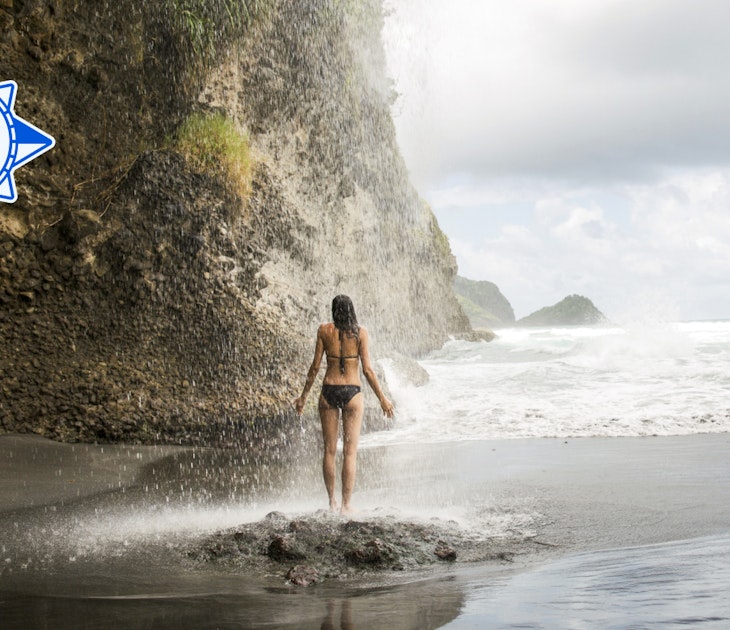
Wildlife & Nature
Feb 27, 2024 • 6 min read
April is the ideal time of year for mild-weather hikes, cherry blossom festivals, fresh produce and more.

Oct 16, 2023 • 9 min read
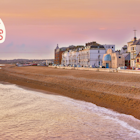
Aug 16, 2023 • 6 min read

Aug 4, 2023 • 6 min read

Jan 2, 2023 • 12 min read

Sep 8, 2022 • 7 min read

Dec 11, 2019 • 5 min read

Jun 22, 2024 • 5 min read

May 28, 2024 • 9 min read

May 17, 2024 • 14 min read
Advertiser Disclosure
Many of the credit card offers that appear on this site are from credit card companies from which we receive financial compensation. This compensation may impact how and where products appear on this site (including, for example, the order in which they appear). However, the credit card information that we publish has been written and evaluated by experts who know these products inside out. We only recommend products we either use ourselves or endorse. This site does not include all credit card companies or all available credit card offers that are on the market. See our advertising policy here where we list advertisers that we work with, and how we make money. You can also review our credit card rating methodology .
The 9 Best Countries in Africa for a Safari in 2024
Senior Content Contributor
56 Published Articles
Countries Visited: 58 U.S. States Visited: 40
Michael Y. Park
20 Published Articles 219 Edited Articles
Countries Visited: 60+ U.S. States Visited: 50
Keri Stooksbury
Editor-in-Chief
36 Published Articles 3291 Edited Articles
Countries Visited: 47 U.S. States Visited: 28
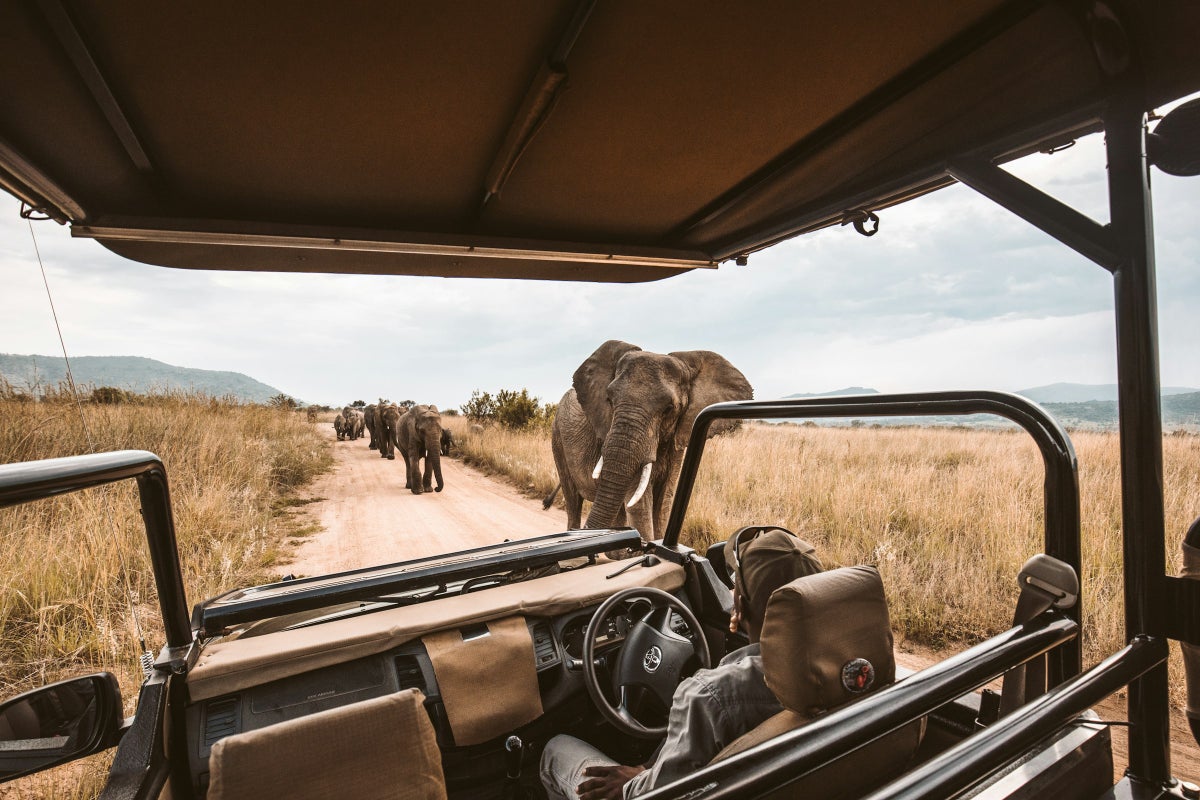
Table of Contents
1. how to plan a tanzania safari, 2. how to plan a kenya safari, 3. how to plan a botswana safari, 4. how to plan a namibia safari, 5. how to plan a uganda safari, 6. how to plan a rwanda safari, 7. how to plan a south africa safari, 8. how to plan a zambia safari, 9. how to plan a zimbabwe safari, final thoughts.
We may be compensated when you click on product links, such as credit cards, from one or more of our advertising partners. Terms apply to the offers below. See our Advertising Policy for more about our partners, how we make money, and our rating methodology. Opinions and recommendations are ours alone.
While Kruger National Park in South Africa is one of the most popular destinations on the African continent to see the Big 5 — lion, leopard, rhinoceros, elephant, and African buffalo — many other African countries offer incredible safari experiences and once-in-a-lifetime wildlife sightings, assuming you’re willing to think a bit outside the box and get off the beaten path.
These are some of the best places to go on a safari in Africa, from Botswana’s Okavango Delta to fan favorites like the Serengeti and Kruger to a safari you can do just outside of Kenya’s capital at Nairobi National Park.
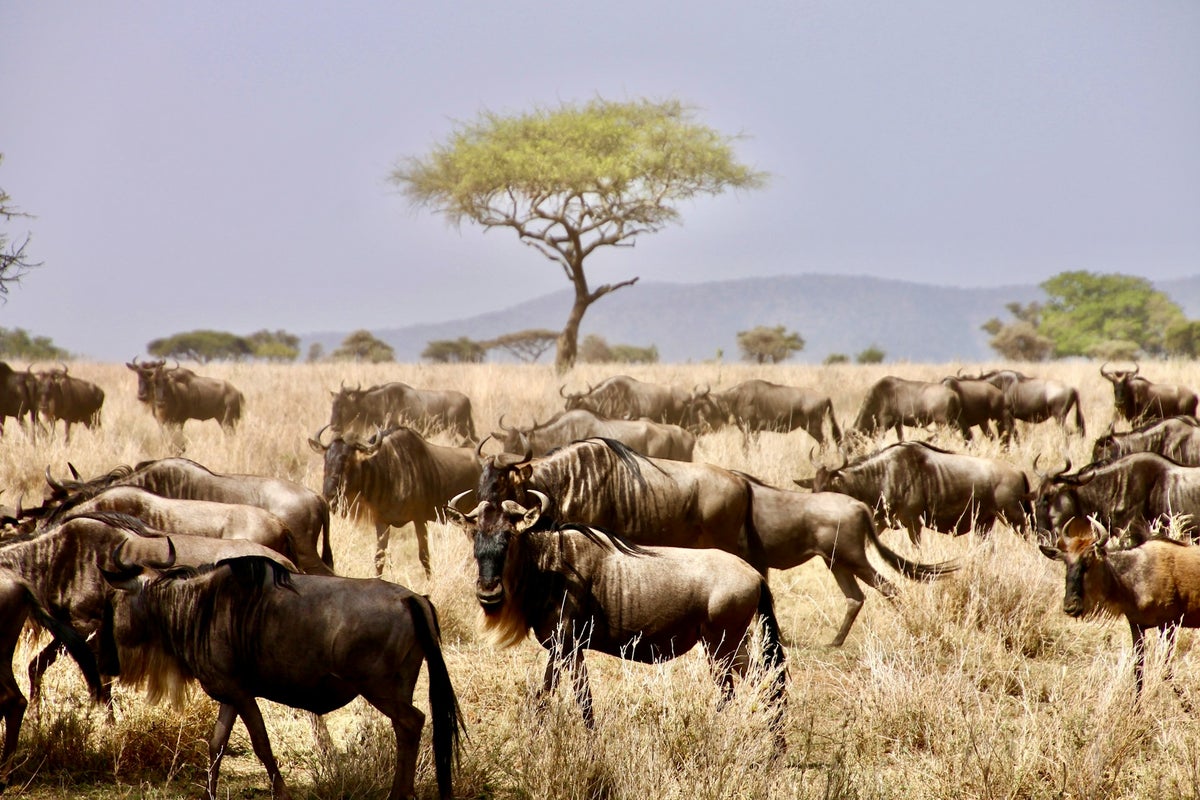
Most people planning a safari trip in Tanzania should head to Serengeti National Park , a UNESCO World Heritage Site known for its massive migrations of zebra and wildebeest . Start by organizing travel to Kilimanjaro International Airport (JRO) or Arusha Airport (ARK). From there, you can travel by land to the Serengeti or fly to one of the park’s 7 airstrips and transfer to your desired safari lodge.
Where To Go and What To See on a Safari in Tanzania
Most people take a safari trip to Tanzania to see the wildebeest migration, but you can also expect to spot the Big 5, cheetahs, hyenas, and leopards in the Serengeti.
Some of the best lodges in the Serengeti National Park are the Four Seasons Safari Lodge Serengeti (which can even arrange a hot air balloon safari) and various tented camps and luxury lodges from Singita , a company focused on sustainable exploration of the region. But start saving up Marriott Bonvoy points, as Marriott announced the opening of JW Marriott Serengeti Lodge in 2026 , an ideal spot to view the Great Migration between the Grumeti and Mbalageti rivers.
Travelers can also head to the Ngorongoro Crater , one of the world’s largest intact volcanic calderas, where you can also view the Big 5, zebras, impalas, hippos, and more. You may also spot flamingos there.
Birders or those who want to avoid larger crowds should consider Tarangire National Park , which has one of the largest elephant populations in Africa, more than 500 bird species, and a wildlife migration that’s not as large as the Serengeti’s but impressive nonetheless.
Besides taking more traditional safaris, visitors can go chimpanzee trekking in Tanzania in Gombe Stream National Park , one of Africa’s smallest national parks (and only accessible by boat).
Best Time To Go on a Safari in Tanzania
The best time to visit Tanzania for a safari is June to October, the dry season in the Serengeti . This is when the bush is thin and you can see more wildlife, including the Big 5. However, May through June is when visitors can see the wildebeest migration in the Serengeti. Those who want to view wildebeest calving should visit in January and February . And if you’re looking for a Tanzania safari on a budget, months like April and early May can offer better prices and fewer crowds.
See the most wildlife at Ngorongoro Crater from December to February and June to September, which are the months with the driest weather, when you can spot herds out in search of water. For Tarangire National Park, the best time for migrations is the June to November dry season , where you can spot many different animals grazing around and drinking from the Tarangire River.
When it comes to chimpanzee trekking, it’s best to go between May and October in the dry season, when the forest flora is short and trails are less muddy. Keep in mind these experiences require permits, and most companies require visitors to be over the age of 15 .
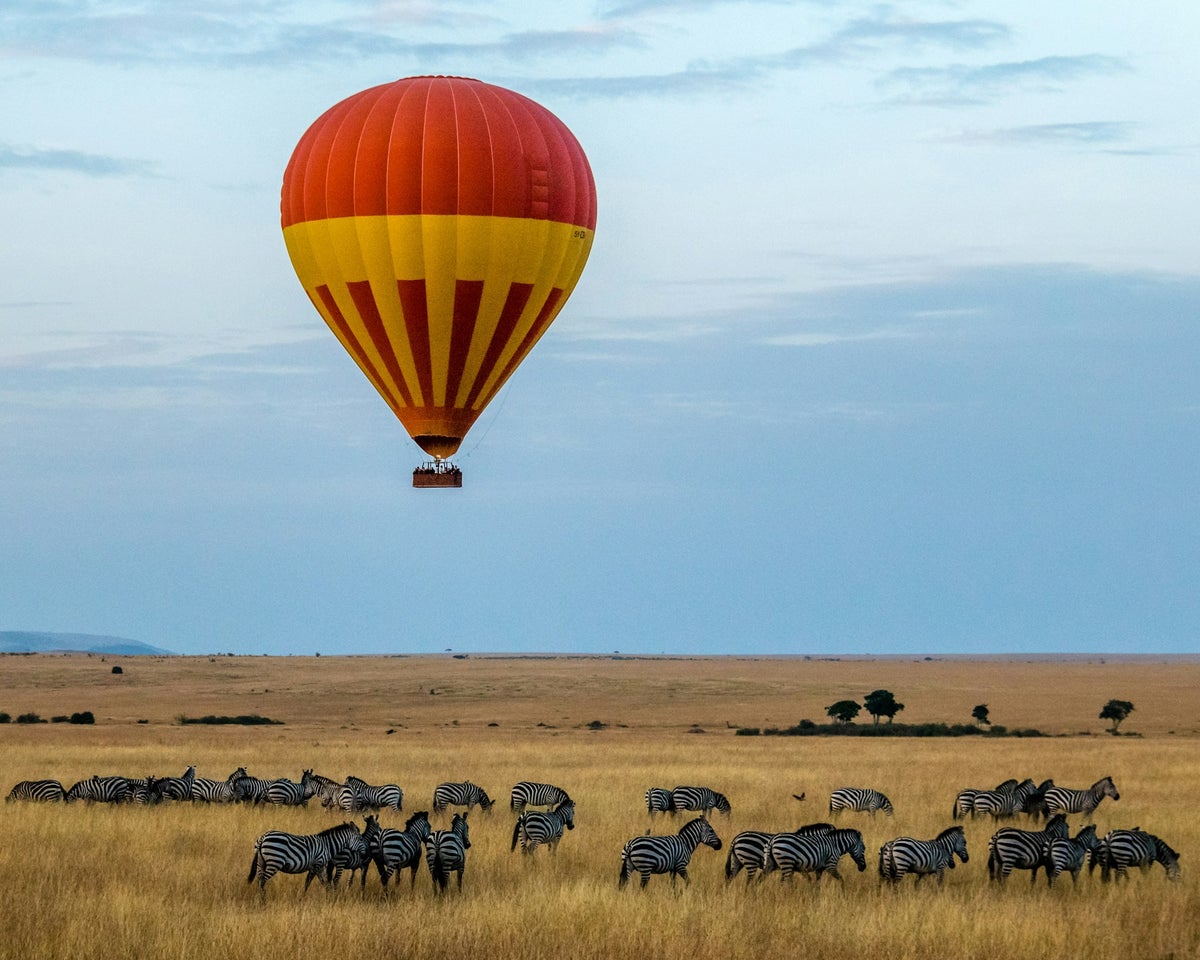
Some of the best African safaris in Kenya allow you to see the Great Migration and the Big 5 (just as you can in Tanzania). Masai Mara National Reserve is probably the most popular spot . Start by flying into the main airport, Jomo Kenyatta International (NBO) in Nairobi , then pop over to the nearby Nairobi Wilson Airport (WIL) for shorter, domestic hops to airstrips closer to the park.
Where To Go and What To See on a Safari in Kenya
Besides the Big 5, you can also expect to see animals like cheetahs, hyenas, gazelles, and wildebeest on a safari. Our top pick for lodging would be the JW Marriott Masai Mara Lodge , one of the few safari accommodations in Africa you can book using points and miles. The all-inclusive property features 20 luxury tents overlooking the Talek River.
Another iconic riverside camp is the Governor’s Camp , a collection of luxury tents overlooking the Mara River, where you can spot hippos and crocodiles. Both hot air balloon safaris and walking safaris are popular in the region, offering unique ways to enjoy the region’s flora and fauna. As the Maasai are one of the largest tribes in Africa, don’t forget to visit local villages and experience some of the tribe’s unique cultural practices.
Amboseli National Park at the base of Kilimanjaro is another Kenyan destination to experience a safari. Here, you can see the Big 5 and more than 600 types of birds. You can also get close-up views of large elephant herds. Samburu National Reserve is another popular safari destination, known as one of the best Kenyan destinations to spot leopards.
And if you’re extra short on time, remember that Kenya is one of the only countries in Africa where you can spot wildlife just a short drive from a capital city. Nairobi National Park is just a few miles outside of Nairobi, home to animals such as leopards, lions, black rhinos, and giraffes.
If you’re dying to stay at the famous Giraffe Manor (a hotel where the resident giraffes poke their heads into your bedroom window each morning) but it’s too expensive or fully booked, you can visit the Giraffe Center instead.
Best Time To Go on a Safari in Kenya
In most cases, the best time to take a safari in Kenya is between June and October, the dry season . You’ll be able to catch the wildebeest migration in Masai Mara in September . November and December can offer lower prices and fewer crowds. March through May is also a more affordable time to visit, but heavy rain or flooding may disrupt your trip.
There aren’t many opportunities to use your points and miles for safari lodges, but if the JW Marriott Masai Mara Lodge is on your list (or you want to start saving up for the JW Marriott Serengeti for a 2026 safari), building up a stash of Marriott Bonvoy points is a great plan. Consider getting a co-branded Marriott Bonvoy credit card . Amex Membership Rewards points from a card like The Platinum Card ® from American Express and Chase Ultimate Reward points from cards such as the Chase Sapphire Reserve ® or the Chase Sapphire Preferred ® Card transfer to the Marriott Bonvoy program at a 1:1 ratio.
Those looking for a more remote, intimate safari experience should consider Botswana. The country is a bit more difficult to get to, making it feel far-flung and offering an authentic African safari experience. As tour operators need to adhere to strict conservation requirements, safaris in Botswana are often smaller and more exclusive, which is why safari prices in Botswana can also be more expensive . Anyone in the market for a water safari will likely appreciate Botswana, as some of the best ways to spot wildlife are by boat or even canoe.
If you’re coming from abroad, you may fly into Sir Seretse Khama International Airport (GBE), just outside of Gaborone. Still, many safari camps are much closer to the Maun Airport (MUB) or Harry Mwanga Nkumbula International Airport (LVI), which you can get to from hubs in South Africa .
Where To Go and What To See on a Safari in Botswana
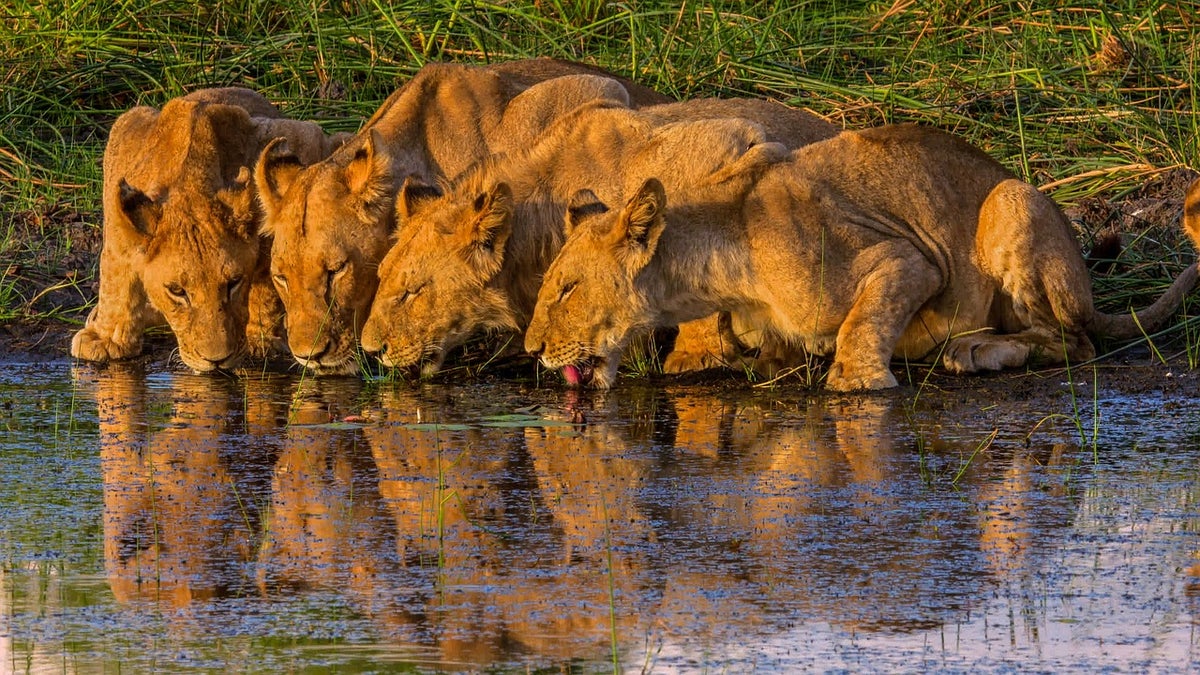
One of the most unique and popular destinations for a Botswana safari is the Okavango Delta , grassy flood plains home to the Big 5 and more. Here, you can explore the area by water safari on small boats or even canoes, as well as on land — both walking safaris and driving safaris. Make sure to keep an eye out for African wild dogs. There are less than 6,600 left in the wild, and many reside in this area. Stay at Xigera Safari Lodge in Moremi Game Reserve, an intimate lodge with just 12 suites and the stunning 32-foot baobab treehouse suite.
Chobe National Park is another emblematic destination in Botswana for a safari, especially if you’re in the market to support female guides. Guests at the Chobe Game Lodge can book a female guide as part of an all-female safari guide team, the Chobe Angels . Boat up and down the Chobe River, spotting lions, buffalo, elephants, and more along its banks.
For something different, consider a safari in the Kalahari Desert. Here, you can ride horses through salt pans, sand dunes, and savannas, go fishing, ride camels, hike, or even take a cycling safari. Keep an eye out for oryx, giraffes, and meerkats.
Best Time To Go on a Safari in Botswana
Similar to the aforementioned countries, the dry season in many areas of Botswana runs from May to October and is one of the best times to visit, as much of the wildlife comes out in search of watering holes. However, December to April is the rainy season, turning the Kalahari Desert into a green and blossoming paradise , making it the perfect time to visit this unique region.
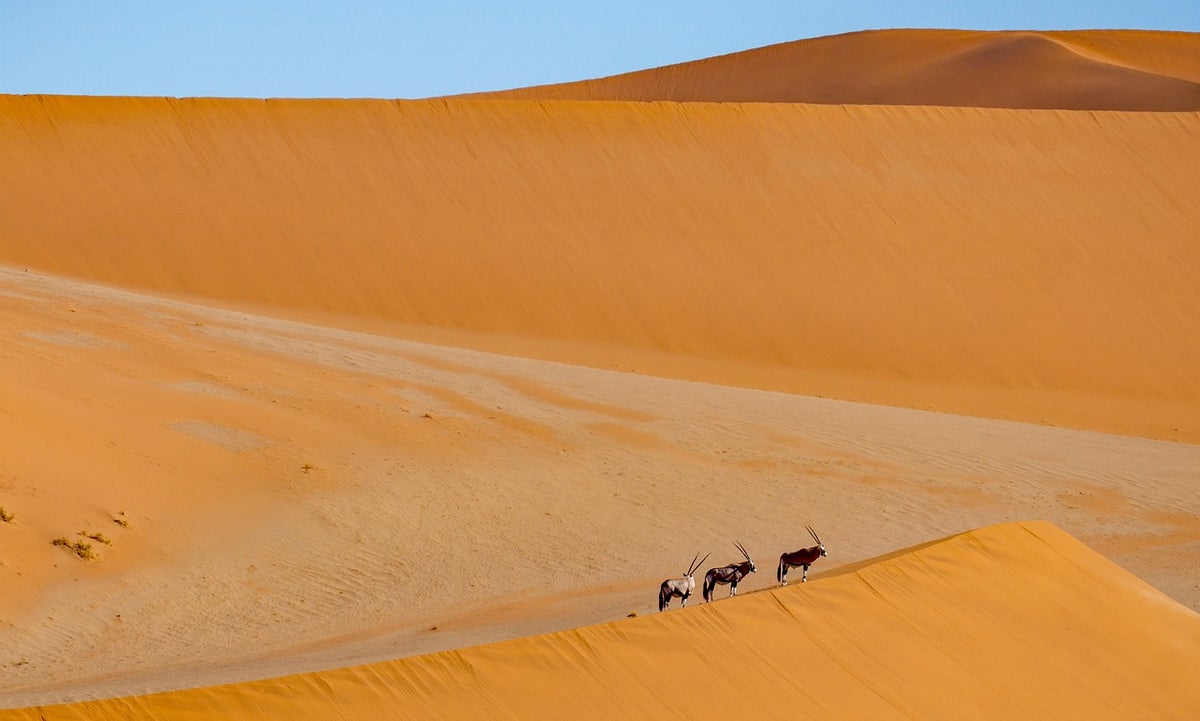
Namibia is a special place for a safari because not only can you see 4 out of the Big 5 in places like Etosha National Park, but you can also see a distinct collection of wildlife in the Namib Desert in Namib-Naukluft National Park. Namibia is more difficult to get to than many other safari spots, especially from Europe and the U.S., so most visitors come from destinations like South Africa first.
Where To Go and What To See on a Safari in Namibia
The most popular place in Namibia for a more traditional safari is Etosha National Park . One of the largest game reserves in Africa, it’s home to large populations of elephants, lions, cheetahs, giraffes, leopards, black rhinos, and black-faced impalas, among many others. There are several accommodations within the park, but the more luxurious, like Mokuti Etosha and Ongava Lodge (built into a rocky enclave), can be found just outside the park. Ongava Lodge is also home to an airstrip, and you can fly there from Namibia’s capital airport, Hosea Kutako International Airport (WDH), in Windhoek.
Sossusvlei is where the landscape changes , so don’t expect a traditional experience in this red-dune salt and clay pan. Part of Namib Naukluft National Park and Desert , it’s so vast you may want to explore it by hot air balloon to take it in from above. Hike dunes like Big Daddy, explore the ancient trees at clay pan Deadvlei, or traverse the entire area by 4×4 or quad.
While this desert landscape may seem barren, keep an eye out for wildlife like hyenas, jackals, foxes, ostrich, and geckos. Sossusvlei offers accommodation for all budgets, but luxury travelers should plan to stay at the andBeyond Sossusvlei Desert Lodge , home to 10 glass suites from which you can admire the sparkling, starry night sky (the NamibRand Nature Reserve is an International Dark Sky Place ).
And don’t discount Namibia’s barren Skeleton Coast — you may spot desert elephants, cheetahs, black rhinos, ostriches, lions, hyenas, and more. Named for the whale and seal bones once scattered on its beaches but now known for its numerous shipwrecks, it’s also home to Cape fur seals, too. Explore the area on foot, boat, surfboard, or quad.
Best Time To Go on a Safari in Namibia
June through September is the driest and best time to visit Etosha , as animals are crowding around sparse watering holes. The same goes for Sossusvlei when the dry season (May to October) brings crisp, blue skies that juxtapose beautifully against the ochre desert sands. However, those heading to the Skeleton Coast may prefer to travel between May and December . Although November and December bring some showers and fog, the weather also gets warmer at this time of year.
There’s a lot to know when planning a safari. Our safari adventure guide has updated tips on finding accommodation, booking travel, and packing for your upcoming African safari.
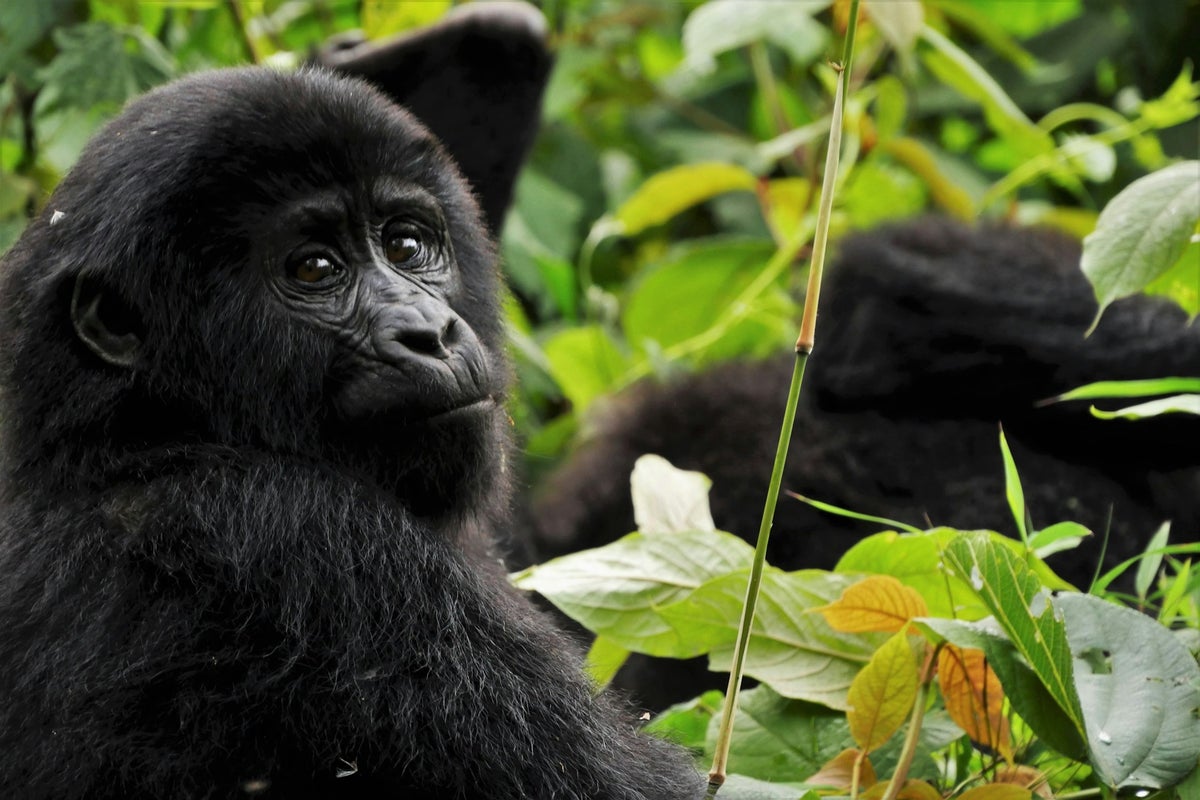
Although visitors can see animals like elephants, hippos, and lions on a Uganda wildlife safari, the main call of this African country is gorillas in the wild . About 400 mountain gorillas call Uganda home , which is about half of the mountain gorilla population left in the world. Gorilla safaris are different from more traditional safaris. In lieu of driving around in a Jeep-style vehicle, gorilla trekking is all about getting up into the hills to see these giant creatures in their natural habitat .
Chimpanzee trekking is also popular in Uganda, as are birding safaris. Most travelers start their adventure by flying into the Entebbe Airport (EBB) and then taking a quick domestic flight to smaller airports. However, visitors planning to gorilla trek in Uganda may find it faster to fly to Kigali International Airport (KGL), Rwanda’s capital, then drive to the national parks .
Where To Go and What To See on a Safari in Uganda
The most popular location for a safari in Uganda is Bwindi Impenetrable National Park , known for birding, forest elephants, chimpanzees, and, of course, mountain gorillas. There is some gorilla trekking in Mgahinga Gorilla National Park , but your chances of spotting gorillas are higher in Bwindi, as this park has more gorilla groups.
For gorilla trekking in general, many visitors are stuck between Uganda and Rwanda. When it comes to Rwanda versus Uganda for gorilla trekking , budget travelers ready for an adventure should select Uganda , where gorilla trekking permits for either park cost $800 per person per day . (It’s nearly double in Rwanda, as we’ll outline below). You must be at least 15 to get a permit.
However, those heading to Uganda should be ready for an adventure, as the treks can be tougher and longer . Always book permits well in advance .
If you go to Bwindi, stay within the park at cozy lodges like Buhoma or just outside the park at Mahogany Springs , perched along the Munyanga River. Birders may want to visit Queen Elizabeth National Park , home to more than 600 bird species, plus tree-climbing lions .
Best Time To Go on a Safari in Uganda
Visit UNESCO World Heritage Site Bwindi Impenetrable National Park for gorilla trekking between June and September and December and February . Since you’ll be hiking along hilly, forested trails, it’s better to go during the dry season, when it’s less muddy and slippery . The same times of year are best for visiting Queen Elizabeth National Park, though March through May are some of the best times for birding.
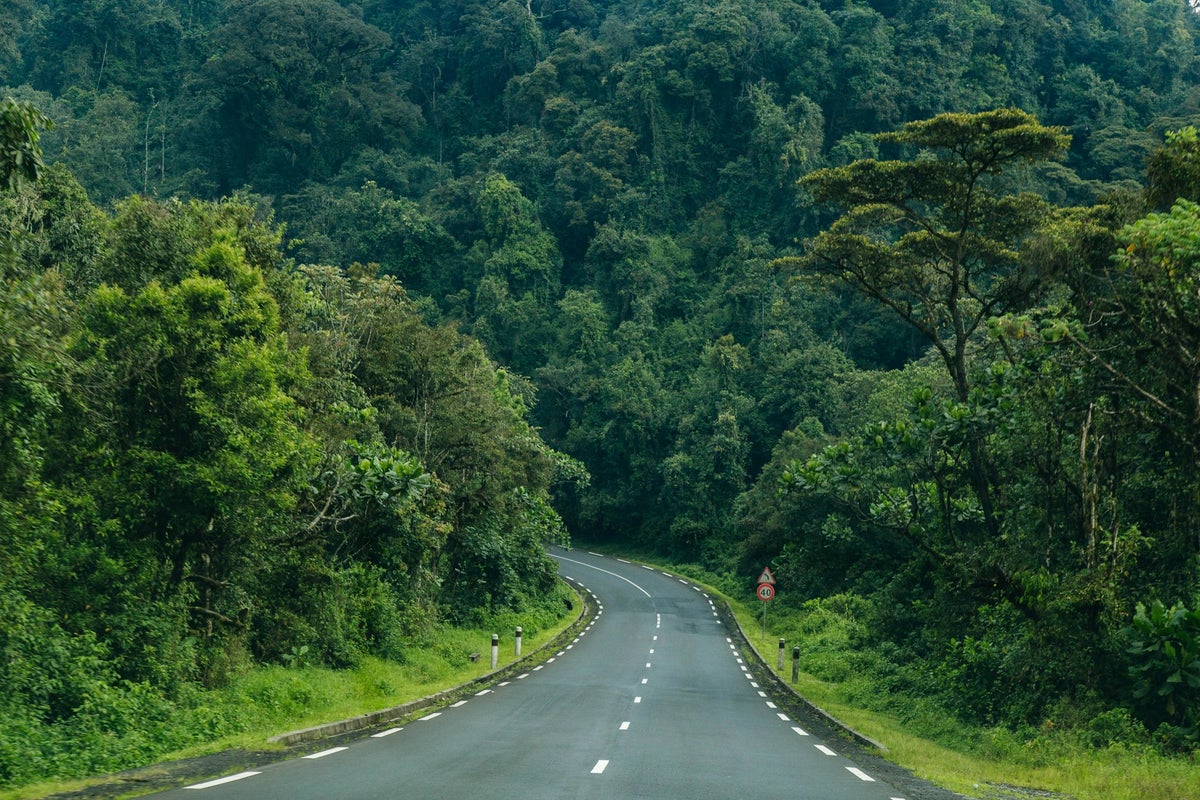
Rwanda safaris can be on the expensive side , and they’re best for adventure travelers who are also ready to splurge. The country offers some of the most accessible gorilla trekking but also some of the most costly.
Where To Go and What To See on a Safari in Rwanda
Start with a flight into Kigali (KGL), then take the 2.5-hour drive to reach the country’s most renowned destination for viewing mountain gorillas, Volcanoes National Park . The park itself is stunning, home to 5 volcanoes and a lush, hilly rainforest, home to mountain gorillas, elephants, buffalos, and nearly 200 bird species. Permits start at $1,500 per person per day , and they only issue 96 per day, so it’s important to book in advance. Stay at one of the 6 conical, luxury bird nest villas at Bisate , which overlooks an amphitheater formed by volcanic cones.
And yes, if you’re in the market to see the Big 5 after you’ve spotted the elusive mountain gorillas, head to Akagera National Park . It borders Tanzania and is one of the largest protected wetlands in Africa. Spot elephants, lions, black rhinos, buffalos, hippos, hyenas, zebras, antelopes, and more than 500 different types of birds, including the shoebill stork.
Down south, aid in rainforest conservation by visiting Nyungwe National Park , a UNESCO-listed site that’s home to 13 of Africa’s primates (including chimpanzees) and a stunning canopy bridge where you can walk amid the towering treetops
Best Time To Go on a Safari in Rwanda
The best time to visit Volcanoes National Park is during the dry seasons, which run from mid-December to early February and June to mid-September . However, if you find yourself there from March to May, make sure to view the many butterfly species that come along with the heavy rains . The dry periods are also the best times to visit Nyungwe National Park and Akagera National Park.
Some countries on this list require U.S. citizens to obtain a visa. Others, such as South Africa, require 2 full, consecutive blank pages in your passport per entry. Some require your passport to be valid for at least 6 months after your visit. Some require you to have certain vaccines, or you may need to take malaria medication. Check passport, permit, visa , and vaccination requirements before booking travel.
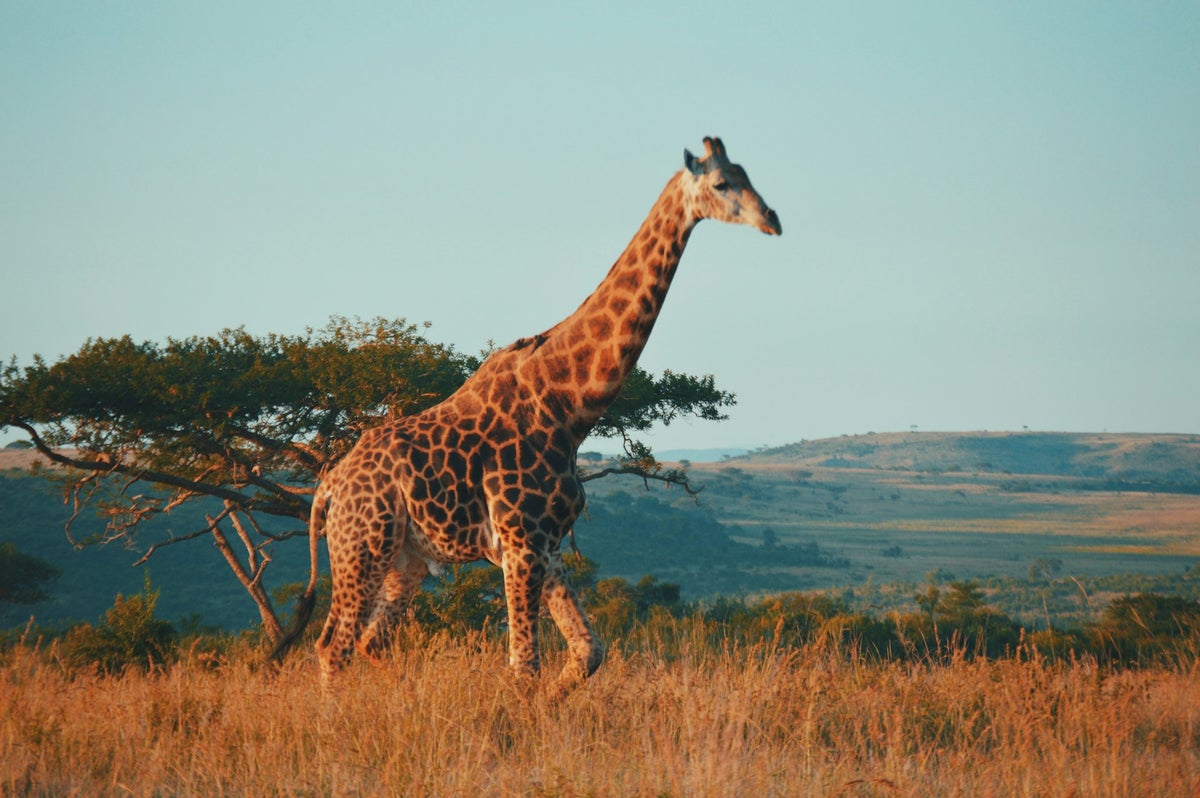
South Africa is the most popular African country for a safari, but that doesn’t necessarily make planning any easier. With so many different game reserves, tour companies, and other options, it can be difficult to decide exactly where to go. The good news is, because there are so many choices, it’s easy to find a safari that fits your budget and travel style. Start by flying into either Cape Town (CPT) or Johannesburg’s O.R. Tambo Airport (JNB). From there, many safaris have private airstrips, but you can also fly into smaller airports like Mpumalanga International Airport (MQP) or Hoedspruit (HDS) and be on your way to viewing the Big 5.
Where To Go and What To See on a Safari in South Africa
Start by deciding if you’d like to visit a state-run or private game reserve. Popular state-run game reserves include Kruger National Park and Addo Elephant National Park , which is actually home to the Big 7 (the Big 5 plus the great white shark and the southern right whale, found within the park’s marine section). Pilanesberg National Park also features the Big 5, while Kgalagadi Transfrontier Park is known for its big cats . These larger parks often offer more budget-friendly safaris, though they can get crowded during peak season.
Luxury travelers may prefer a more exclusive safari experience, where a lodge or tented camp on a private game reserve includes all the safari excursions. Some of the best private game reserves for a luxury African safari experience include Sabi Sand, Phinda, Timbavati, Kwande, MalaMala, Amakhala, and Phinda, among many others. Choosing a game reserve and safari lodge may come down to where you want to base your trip: You can start in Johannesburg or Cape Town. While Johannesburg is the most convenient hub for visiting Kruger, Cape Town is known for its immense beauty and unique cultural offerings and is a favorite among seasoned travelers.
Best Time To Go on a Safari in South Africa
Go on a South African safari during the dry season, where less vegetation makes it easier to spot animals, which you can often find gathering near rivers and watering holes. Most of the country’s wildlife parks see their dry season between May and September. However, this is when the Western Cape sees rain , so if you’re heading to that area of the country, it may be best to go to this region in the other months.
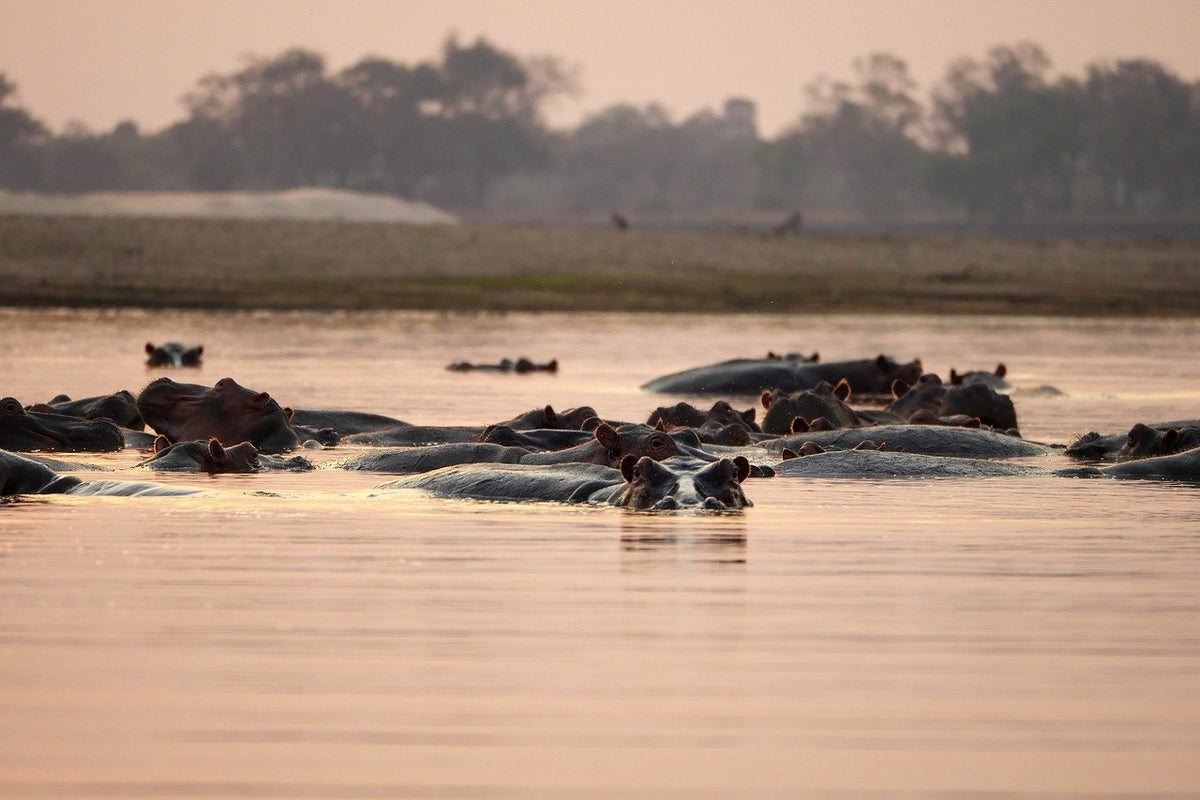
If you’re in the market for something a bit more off the beaten path, consider a safari in Zambia. Start by flying into the Kenneth Kaunda International Airport (LUN) in the nation’s capital, Lusaka. Then, catch a short flight to Mfuwe Airport (MFU), which is the hub for South Luangwa National Park , the most popular area in the country for a Zambia safari, where you can spot wildlife such as leopards, hippos, and rare Thornicroft giraffes. Or, fly to the Royal or Jeki airstrips to visit Lower Zambezi National Park .
Where To Go and What To See on a Safari in Zambia
South Luangwa National Park is the ideal destination for walking and driving safaris, as the Luangwa River can be unpredictable, so boat safaris aren’t common. Those who want to see wildlife by boat should visit Lower Zambezi National Park, where you can paddle through the Zambezi River via canoe with expert guides who can help you spot all kinds of wildlife, including elephants, hippos, and birds.
The nice part about a safari in Zambia is that it’s appropriate for any budget . Stay at cozy river lodges, in luxury tents, or open-air villas. The Old Monodoro camp in Lower Zambezi has 5 chalets — and don’t be surprised if you find an elephant sipping water out of your outdoor tub in the morning. Elephants also regularly walk through the open-air lobby at Mfuwe Lodge in South Luangwa.
Best Time To Go on a Safari in Zambia
Most lodges in South Luangwa National Park and Lower Zambezi National Park are only open during the dry season between March and October. To have the full Zambia safari experience, booking your trip during this period is best.
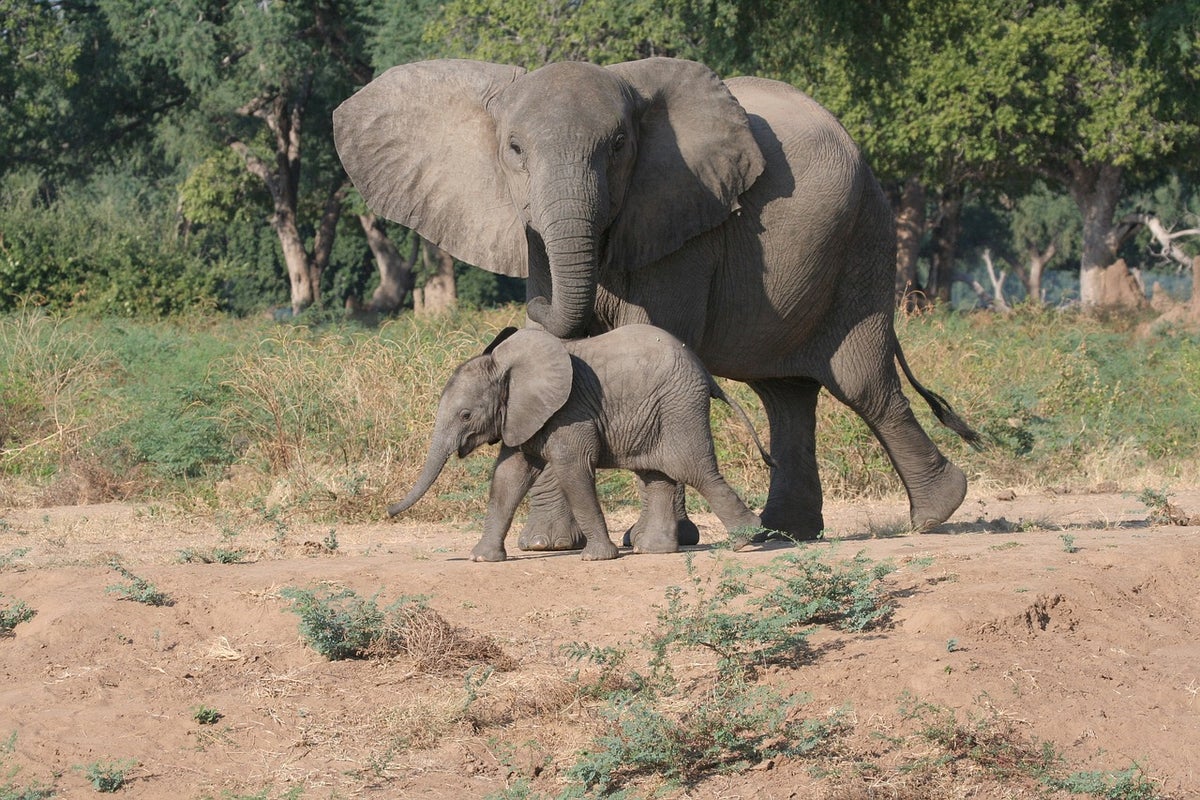
Most travelers combine a visit to Victoria Falls with a Zimbabwe safari . The best way to do this is to fly to Victoria Falls International Airport (VFA), which is about a 20-minute drive to the falls .
Where To Go and What To See on a Safari in Zimbabwe
Just a short drive from Victoria Falls, you’ll find Zambezi National Park (a completely different park than the aforementioned Lower Zambezi National Park in Zambia ). This park features the Big 4 (everything but rhinos). You can also cross the border into Zambia via a quick drive to visit Mosi-oa-Tunya National Park , where you can spot elephants, buffalo, giraffes, zebras, and white rhinos.
If you’re hoping to spot the Big 5, Hwange National Park is just over an hour’s drive away , though you’ll have to look hard to find rhinos, as they’re few and far between. You can even do horseback safaris through this park, getting up close and personal with wildlife on your horse. Plan to stay at Davidson’s Camp , where the en suite tents look out over a watering hole for prime wildlife-watching from your room.
Victoria Falls is also just an hour’s drive from Chobe National Park in Botswana , home to one of the world’s largest elephant populations.
Best Time To Go on a Safari in Zimbabwe
June to September is the best time for a safari in Zimbabwe , and June is an especially beautiful time to see Victoria Falls , as you may catch the tail end of the rainy season, bringing powerful sprays and cascades. However, those visiting Hwange to birdwatch should visit from November to April , when the migratory birds return from the north.
When planning a safari, you have endless possibilities to consider. But knowing you can visit other countries besides just Tanzania or South Africa may make it easier to create a safari trip that fits your timing, budget, and travel style. Whether gorilla trekking, birdwatching, or a traditional safari searching for the Big 5, these African countries have got you covered.
For rates and fees of The Platinum Card ® from American Express, click here .
Frequently Asked Questions
Which african country has the most wildlife.
Tanzania has an estimated 4 million animals, but countries like South Africa, Botswana, and Kenya are also excellent places to view wildlife or take a safari vacation.
Which African country is the safest for safaris?
Botswana is considered one of the safest African countries. It’s politically stable and has low crime rates. Rwanda is also safe for tourists, and Namibia is also a safe country for a safari.
What country in Africa has the most safaris?
South Africa has numerous public and private game reserves, making it an easy place to find a safari, no matter what part of the country you’d like to visit. The top safari destination in South Africa is Kruger National Park.
Is Tanzania or Kenya better for safaris?
Both Tanzania and Kenya are excellent destinations for a safari. Tanzania is often considered better because it has so many animals, but Tanzania safaris can often be very expensive. However, seeing the Masai Mara villages and embracing Kenyan culture is a wonderful addition to seeing wildlife in Kenya. You can’t go wrong with a safari in either destination!
Was this page helpful?
About Lori Zaino
Lori is an intrepid traveler who loves creating itineraries that exude “luxe on a budget.” She’s written for CNN, NBC, The Infatuation, and more, and loves to muse about points-fueled trips to Sri Lanka, Sicily, and Myanmar.
Discover the exact steps we use to get into 1,400+ airport lounges worldwide, for free (even if you’re flying economy!).
We respect your privacy . This site is protected by reCAPTCHA. Google's privacy policy and terms of service apply.

UP's Bonus Valuation
This bonus value is an estimated valuation calculated by UP after analyzing redemption options, transfer partners, award availability and how much UP would pay to buy these points.

Traveling Without a Passport

The Best Safari Destinations in the World (Updated 2024)
From seeing animals in their natural habitats to camping under the stars in open plains, discover the best safari destinations in the world!

A safari is an incredible way to encounter nature and wildlife in Africa or Asia . From seeking out the big five on a safari in Africa to immersing yourself in grassy plains in Sri Lanka and jungle terrain in India , it’s the experience of a lifetime. We share the best safari destinations in the world.
Travel on: a safari tour
1. Okavango Delta, Botswana
Head to northern Botswana for one of the world’s largest inland river deltas, the Okavango Delta . The wildlife encounters visitors will experience here are remarkable. Amid the grassy plains, the cry of hyenas, the roar of lions, the growl of leopards, giraffes, and rhinos will become the melody of your safari. The wetter pastures are home to hippos, elephants, and crocodiles. This is one of Africa’s most epic safari destinations.
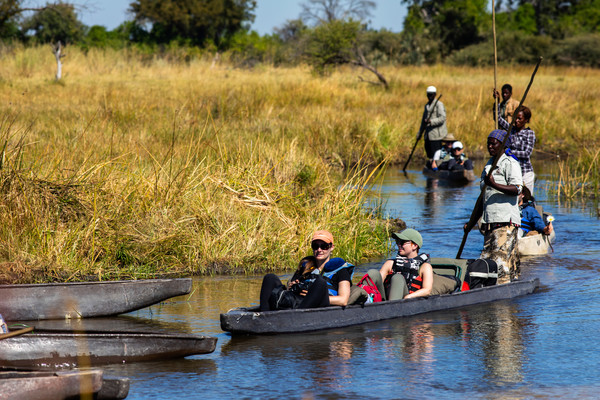
2. Ranthambore National Park, India
Ranthambore ’s wild jungle scrub is home to many creatures from the animal kingdom, but the fiercest by far is the tiger. You’ll be blown away by the crocodile-filled lakes, the ancient temples and mosques, the beautiful remnants left behind by maharajas that used to hunt here, once upon a time. But nothing will leave you as breathless than seeing as seeing a tiger in the wild for the first time.
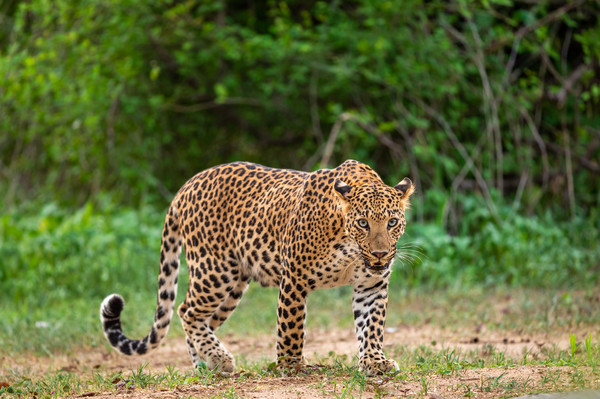
Travel on: a Tiger safari
3. Kruger National Park, South Africa
As one of Africa’s largest game reserves, Kruger National Park tends to get crowded, but there’s a reason for that. This stunning park in northeastern South Africa is one of the best destinations to live out your safari dreams. From big five animals like lions, leopards, and elephants to exotic birds soaring down from the sky, there are plenty of opportunities to spot beasts in their natural habitat here.
Travel on: a Big Five safari
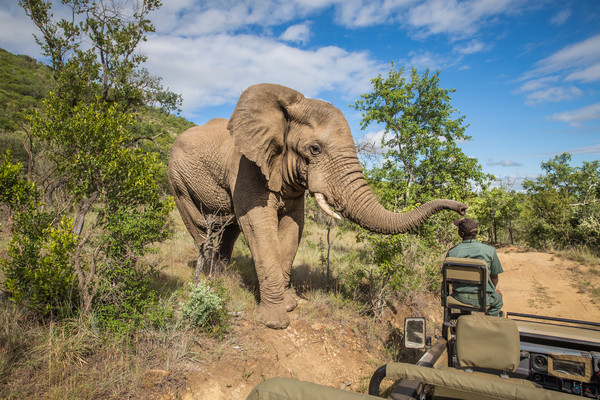
4. Serengeti, Tanzania
The Serengeti is considered to be the land that inspired Disney’s Lion King, and it’s not hard to believe. From proud lions stalking across the open plains to beautiful breeds of birds flying above you, this national park is the quintessential safari destination. Every year, the Serengeti becomes the place of migration for over a million wildebeest and zebras in the hundreds of thousands. You won’t forget this trip in a hurry.
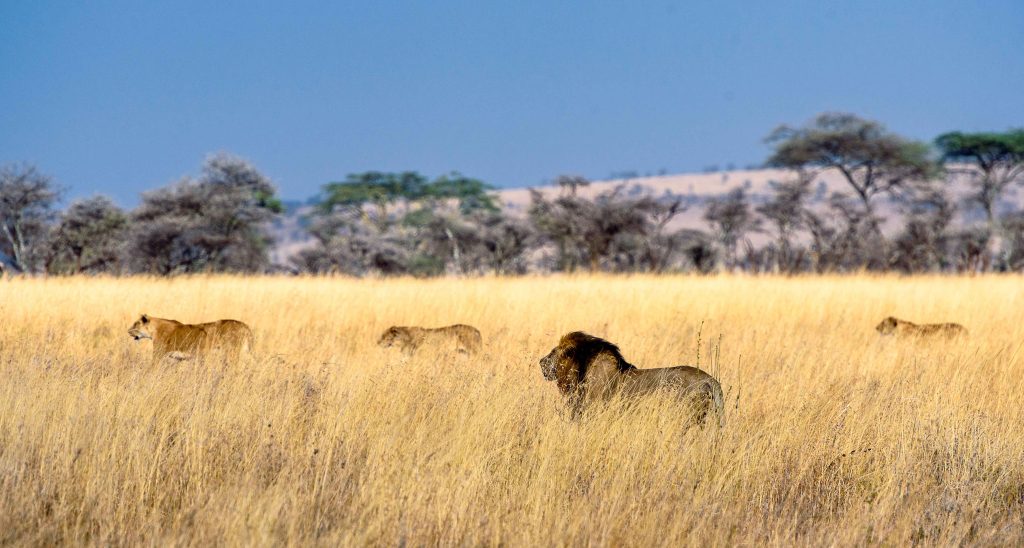
Travel on: a Serengeti safari
5. Ngorongoro Conservation Area, Tanzania
There are many things in this beautiful conservation area of Tanzania that will take your breath away. Ngorongoro Conservation Area is one of Africa’s many wonders. When you are seeking out lions or marveling at the spectacle of thousands of wildebeests and zebras migrating, the rest of the world will fade away. Among the many things you will experience in this epic safari destination, the massive Ngorongoro Crater and Olduvai Gorge fossils are a must-see.
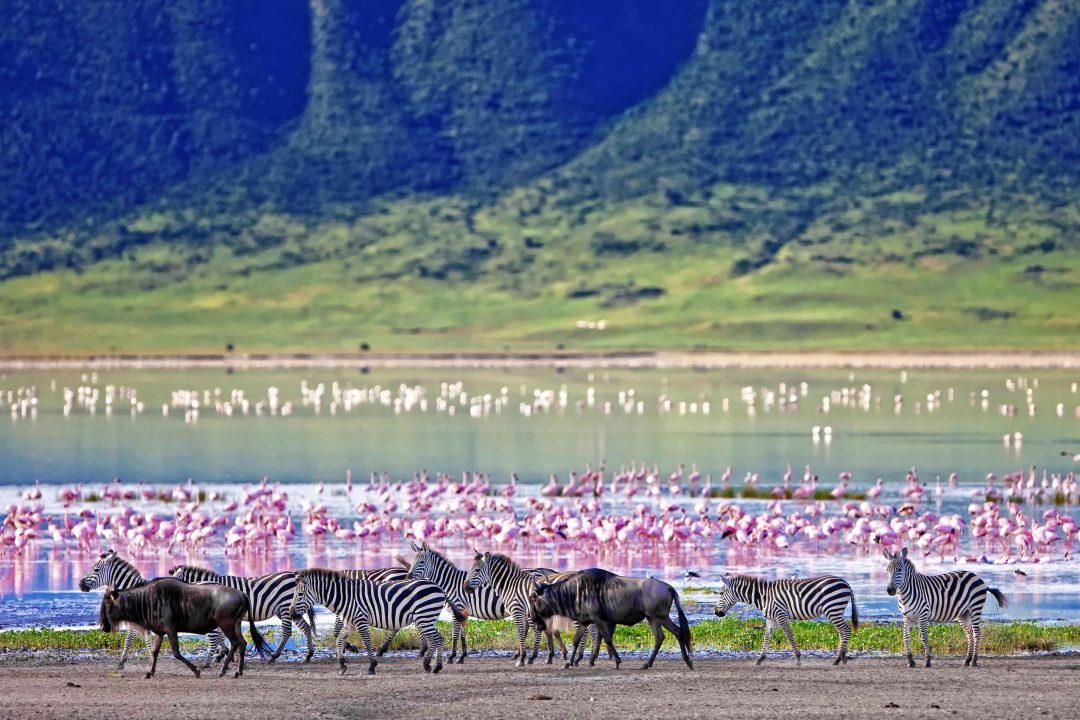
Travel on: a Ngorongoro safari
6. Yala Park, Sri Lanka
Sri Lanka ’s most famous park is located next to the Indian Ocean. Comprised of dense forest, lush grasslands, and blue lakes along with fascinating beasts like leopards, elephants, monkeys, and crocodiles, and hundreds of bird species, Yala Park is a dream safari destination alright. Travelers who go deeper into the park will be rewarded with a chance to explore pilgrimage sites, caves marked with century-old rock paintings, and the ancient Buddhist ruins of Magul Maha Viharaya.
Travel on: a Yala safari
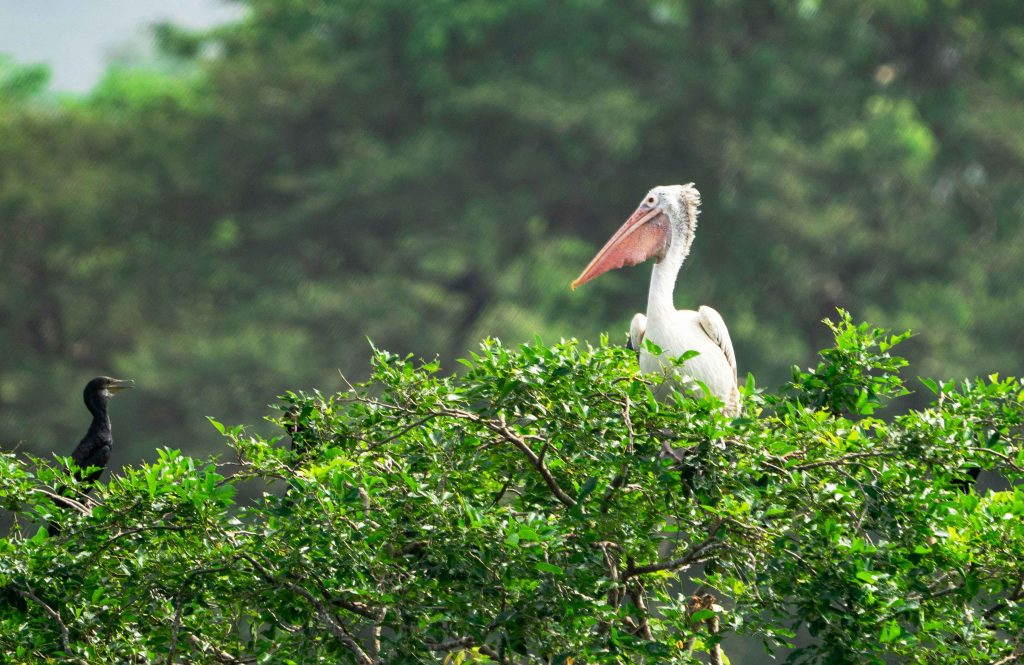
7. Hwange National Park, Zimbabwe
Zimbabwe ’s largest safari destination doesn’t disappoint. Sprawled across 14,651 square kilometres, you’ll encounter elephant herds, lions, and African wild dogs in the grasslands and mopane woods found in the area. While there’s plenty of wildlife to feast your eyes on (107 animal species and 400 breeds of bird), elephants are what make Hwange so magical; the park is home to one of the largest populations on the planet.
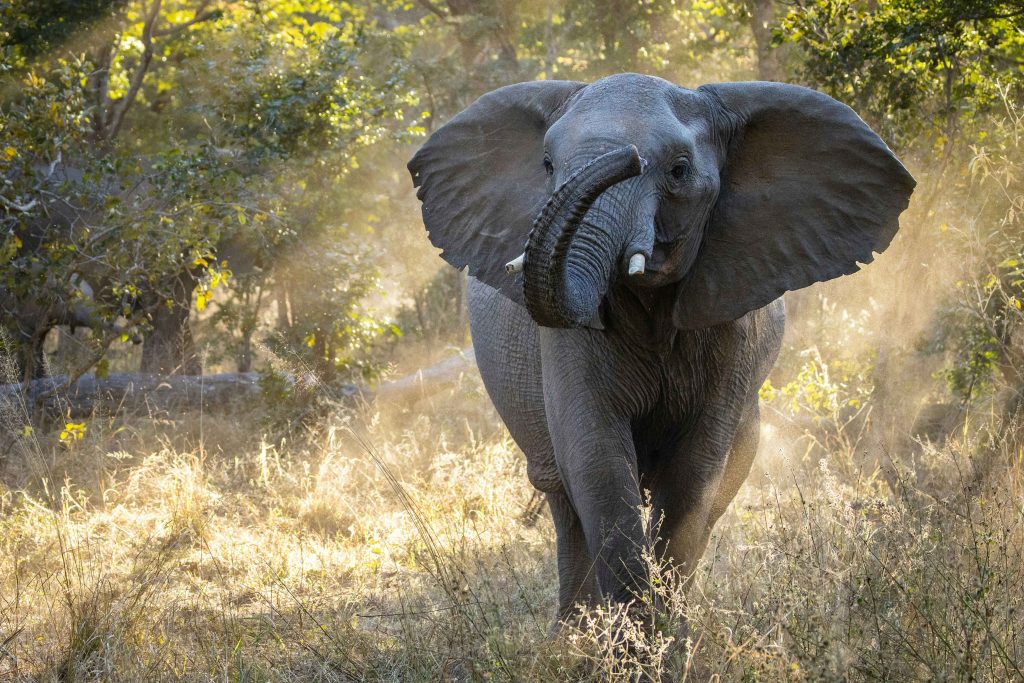
Travel on: a Hwange safari
8. South Luangwa National Park, Zambia
There are lots of places to discover the wildlife in Africa , but the sheer density of animals makes South Luangwa one of the continent’s best safari destinations. The open plains are home to marching elephants, impalas, pukus, and buffaloes, meanwhile hippos take dips in the river and leopards hunt for their next meal. If that doesn’t delight, look up to the sky, and you’ll see hundreds of birds flying above you.
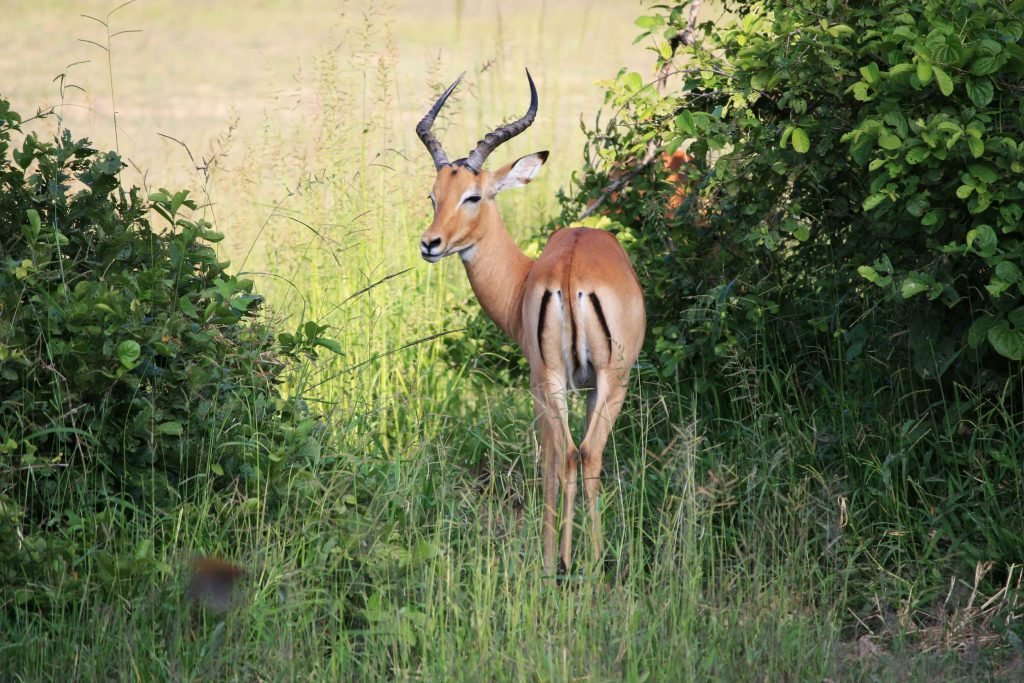
See Also: First Time Safari Tips: How to Get the Most Out of Your Trip
9. Masai Mara Reserve, Kenya
The wilderness of Masai Mara is stunning. The Mara and Talek rivers snake through grasslands, river woodlands, and acacia trees, while the animal kingdom’s finest go about their day. Lions, cheetahs, elephants, zebras, and hippos can be found in their natural habitat, and wildebeest too, as they pass through these lands for their annual migration. Along with the wildlife, visitors can explore the nearby Masaai villages and learn about their customs from locals.
Travel on: a Masai Mara safari
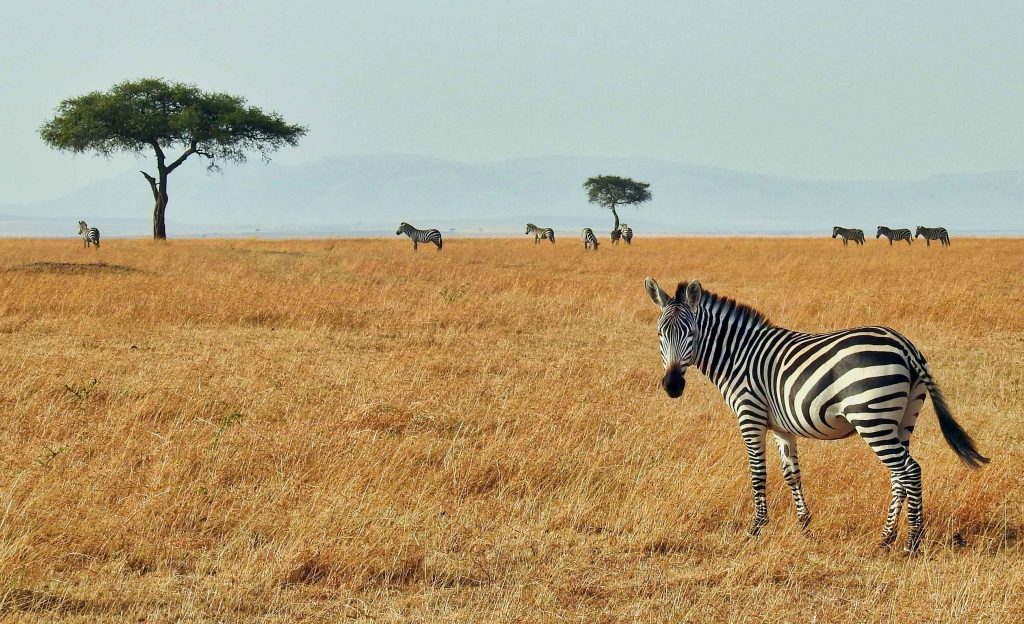
10. Etosha National Park, Namibia
Even if you’ve been on a safari in Africa before, Etosha National Park is a different experience altogether. Firstly, Namibia ’s landscape in vivid colours is incredible as it is, but the sight of hundreds of animals flocking to the watering holes is spellbinding. In other parks, visitors go looking for animals, but here, they will make their way to you, lions, elephants, and other creatures will all come out to play.
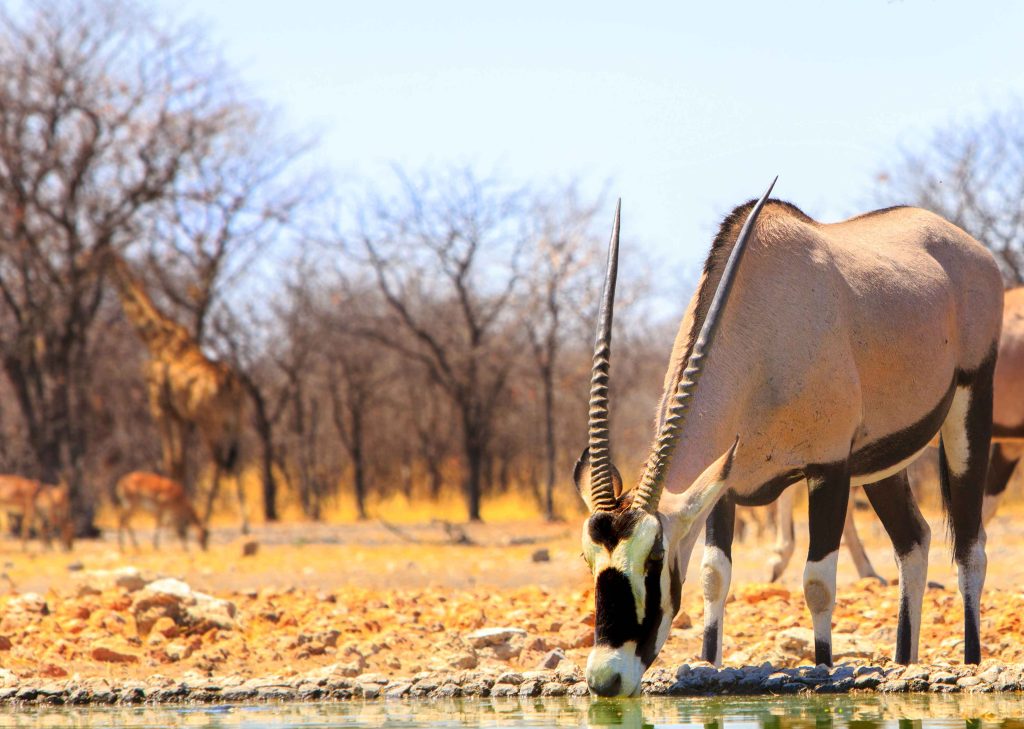
Travel on: an Etosha safari
11. Chobe National Park, Botswana
Chobe is Botswana ’s first national park and famed for being biologically diverse. Picture antelopes galloping across the plains, hippos seeking cool respite in the lagoons of Linyanti Marsh, and herds of elephants and Cape buffalo flocking to the Chobe riverfront. Even when you’re not watching for animals in the wild, camp under the stars and you have different ways to immerse yourself in the wilderness.
Travel on: a Chobe safari
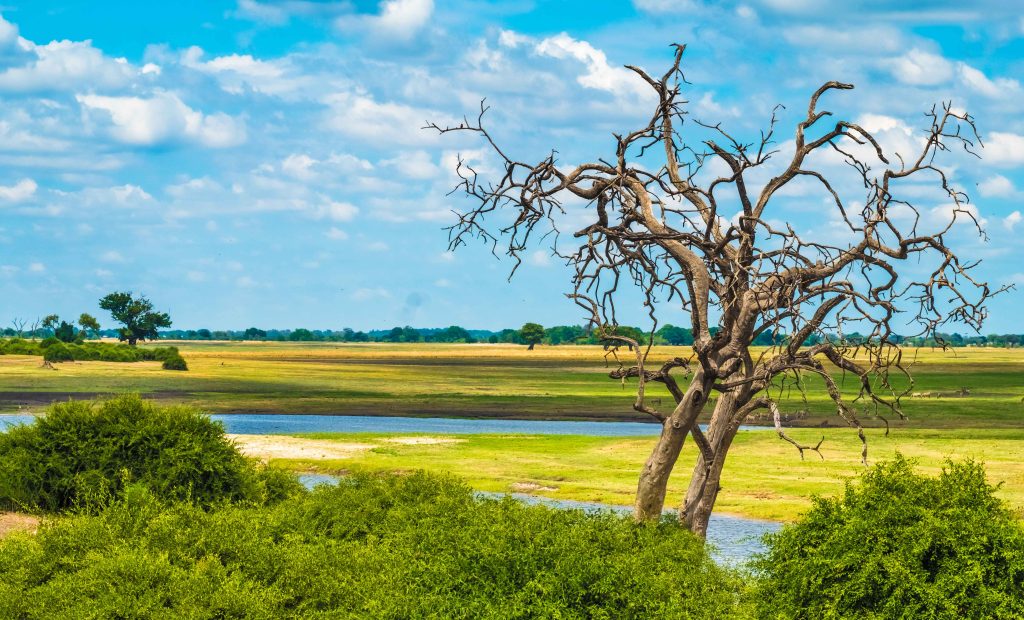
12. Bwindi Impenetrable National Park, Uganda
Bwindi’s mountainous terrain is home to many of the world’s remaining gorillas. In this biodiverse region, this endangered species has some much-needed peace and can be observed feeding off ancient roots and trees native to the region. Make your way to the dense forests of Bwindi for a rare chance to experience something out of this world: gorillas in the wild.
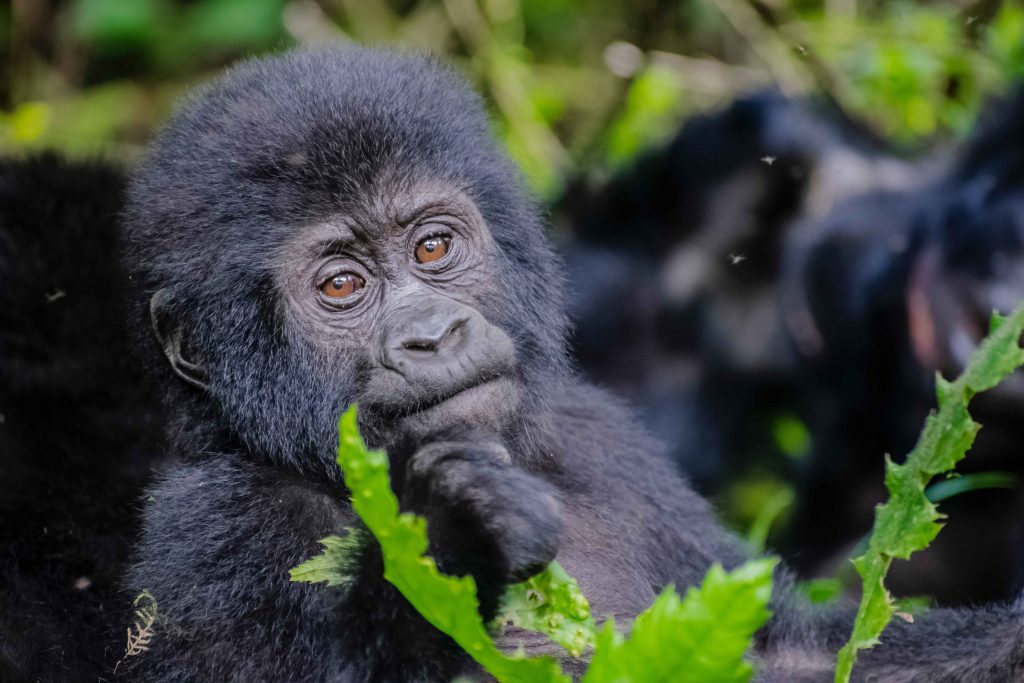
Travel on: a Bwindi safari
13. Kalahari Desert, Botswana
Spread across three countries, a considerable mass of Botswana, parts of Namibia and South Africa , the Kalahari is an amazing and surreal safari destination. It’s home to the Kgalagadi Transfrontier Park, which is one of the last unspoiled ecosystems on the planet. It may be arid, but it’s brimming with wildlife, roaring lions and cackling hyenas are just some of the creatures found here.
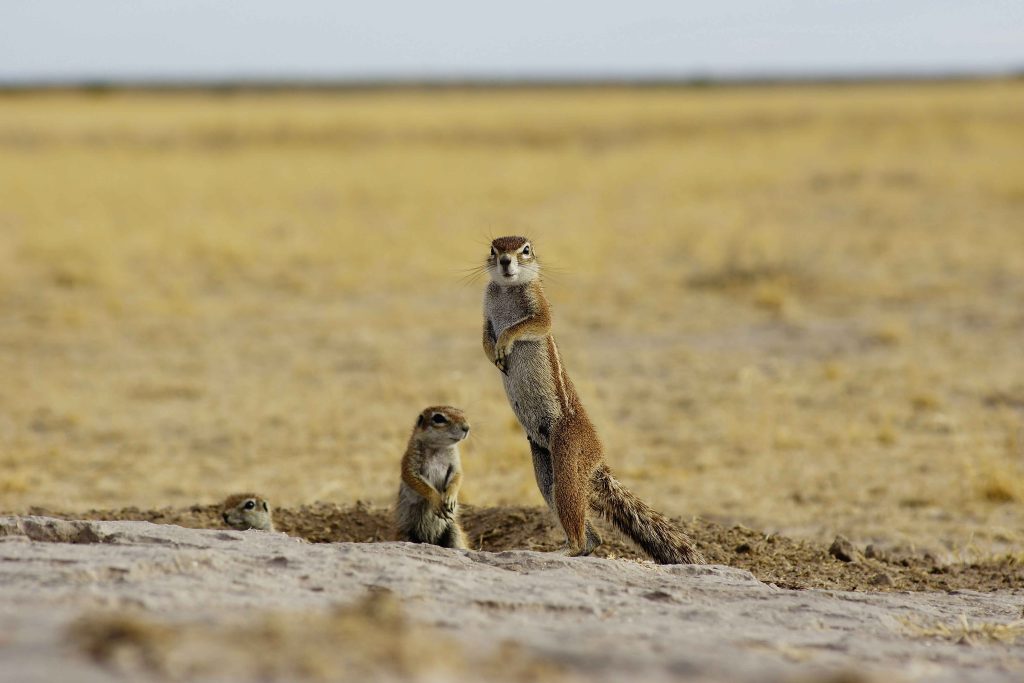
See Also: Last-minute safari deals

Based in Toronto, Sahar is a full-time content editor for Days to Come and part-time travel junkie.
Related Articles
- North America
Your Guide to Easter Around the World
Easter is a time to celebrate new beginnings. The symbols and...
- Destinations
The Ultimate Seven-Day Itinerary in Egypt
The soft river breeze wafts through my hair as the sails...
Best Safari Destinations in Africa for 2024
“There is something about safari life that makes you forget all...
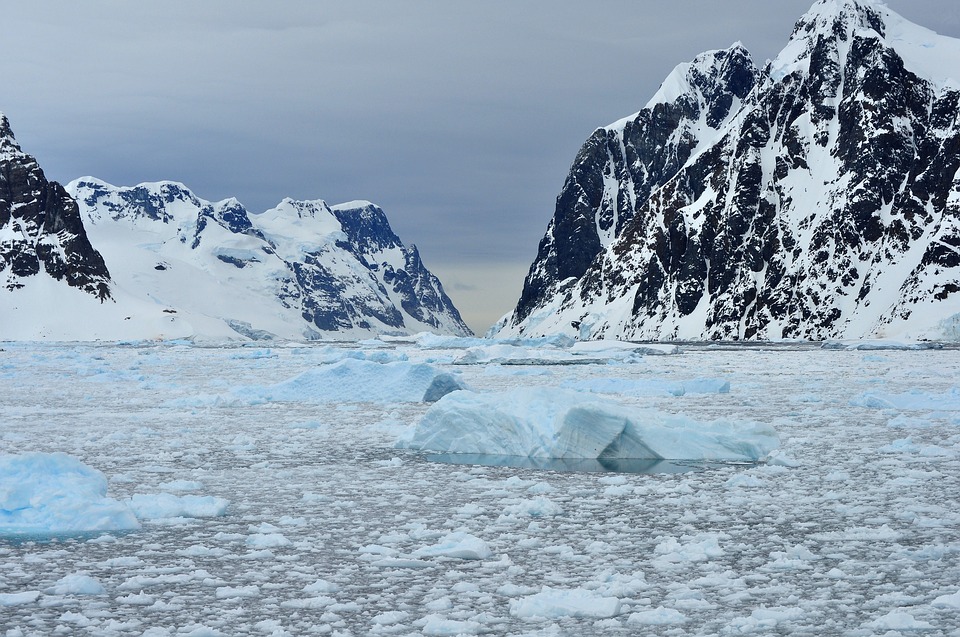
What to Expect on a Cruise to Antarctica
Get unlimited access to the world's best travel stories. subscribe now., privacy overview.
The 12 best safari destinations in the world
Recently updated on April 30th, 2024 at 03:46 pm
A safari is one of the most exhilarating bucket list experiences in the world, getting you up close to some of the world’s most remarkable wildlife and landscapes. From the iconic plains of the Serengeti to the lush wetlands of Okavango and the desert wildlife of Etosha, here are 12 of the best safari destinations in the world to inspire your safari adventure.
1. Serengeti National Park, Tanzania
View this post on Instagram A post shared by Passionate Guides Tanzania (@passionateguidestz)
Serengeti National Park is an icon of Africa and one of the best safari destinations in the world for spotting the Big 5 and so much more. Located in northern Tanzania, this UNESCO-listed national park is one of the oldest ecosystems on earth. It’s filled with plants and animals that have barely changed over the past million years.
The park is an epic expanse of plains and grassland, dotted with all of the Big 5 and other safari favourites like giraffes, zebra, hyenas, cheetah and the rare African wild dog.
The Serengeti is also famed as the home of ‘The Greatest Show on Earth’ – the Great Migration. Over two million wildebeest, zebra, impala and gazelle cross the Mara River in a thundering mass each year in search of greener pastures. The migration sets off annually around July towards the Masai Mara in Kenya. The herd then makes the 1,000km journey back to Tanzania around October or November when the rains set in.
The wildebeest must dodge stalking predators like lions and leopards on their journey, while huge clouds of migrating birds fly overhead. As the largest terrestrial mammal migration in the world and one of the Seven Natural Wonders of Africa, it’s an astonishing sight to behold.
Explore the Serengeti on: African Safari Adventure
We think you’ll also like: Our 6 Most Memorable Experiences to have in Africa
2. Maasai Mara National Reserve, Kenya
View this post on Instagram A post shared by Safari Trails (@safari_trails)
Venture over the border of the Serengeti into the Maasai Mara National Park in Kenya, the other half of the mighty Mara-Serengeti ecosystem. As one of the best safari destinations in the world, the Maasai Mara dishes up extraordinary wildlife viewing, including all the Big 5.
You’ll also likely spot giraffes, hippos and crocodiles lurking in the rivers, along with more than two million wildebeest, zebra and gazelle that arrive in a thundering mass during the Great Migration.
Besides the incredible wildlife, the Maasai Mara is renowned for its rich culture. You can visit a traditional Maasai village where you’ll meet the Maasai people and witness their colourful traditions.
Explore the Maasai Mara: African Safari Adventure
3. Kruger National Park, South Africa
View this post on Instagram A post shared by Kruger National Park (@krugernationalpark)
Kruger National Park is the oldest and most iconic national park in South Africa. It’s also one of the top bucket list experiences on the whole continent. Covering a staggering two million hectares (the size of Israel or Slovenia), you’ll have a good chance of spotting the famous Big 5, the unique Little 5 , and everything in between.
There’s also reliable sightings and a high density of animals in the private reserves around the Kruger National Park. One of our favourite areas is the Karongwe Private Game Reserve. Here you can spot all the Big 5 and learn about the traditions and local deliacies of the Shangaan people at a local village.
Explore Kruger National Park on: Best of South Africa
Is Kruger or Serengeti better?
One of the most common questions we get from our guests is whether to visit Kruger or Serengeti. They’re two of the most iconic safari destinations in the world, and most people usually only have time to visit one of them on a safari trip, due to the large distance between them.
While you can’t go wrong with either Kruger or Serengeti, the best choice for you will depend on what you want to get from your safari. With Kruger, you can spot a wild range of wildife including the Big Five, and it’s more easily accessible, with a range of accommodation options. It’s ideal for those seeking convenience and flexibility, however it can also be more crowded for this reason. On the other hand, the Serengeti is more remote and typically more expensive as travel logistics are more complex. The pay off is that you can see an abundance of wildlife including the Big Five, and the breathtaking Great Migration. The park offers a more pristine wilderness experience and has unique activities like hot-air balloon rides. Ultimately, your choice should be based on the types of wildlife and activities you’re interested in, your budget, and the amount of time you have.
4. Ngorongoro Crater, Tanzania
View this post on Instagram A post shared by Ngorongoro Crater (@ngorongoro_crater)
As one of the Seven Natural Wonders of Africa, the Ngorongoro Conservation Area is one of the continent’s best safari hotspots. Located in the Crater Highlands of northern Tanzania, Ngorongoro is an ancient volcanic crater spanning 260 square kilometres. The crater is surrounded by a 600-metre high wall, and it’s the largest intact and unfilled caldera in the world.
It’s home to over 25,000 large game animals, including all the Big 5. The conservation area protects Tanzania’s last remaining population of the endangered black rhino. You can also spot cheetah, zebra, wildebeest, gazelle, spotted hyenas and the critically endangered African wild dog. The crater is also dotted with sparkling soda lakes where you can see hippos and massive pink flocks of flamingo.
Ngorongoro has also been home to humans for around three million years and occupied by pastoralist tribes, like the Maasai, for the past 2,000 years. You can visit a Maasai village and even see casts of the fossilised footprints found at Olduvai Gorge. These famous footprints prove humans were walking on two legs at least 3.7 million years ago.
Explore Ngorongoro Crater on: African Safari Adventure
5. Etosha National Park, Namibia
View this post on Instagram A post shared by Etosha National Park ORG (@etoshanationalpark)
Etosha is the greatest national park in Namibia, famed for its striking desert landscapes and abundant wildlife. You’ll have the chance to spot four of the Big 5 as there are no buffalo in Etosha, however you can spot them in the nearby Waterberg Plateau and Caprivi Strip. Meanwhile, the huge populations of lions and elephants make up for it.
Etosha is also one of the best places in Africa to see the white rhino and critically endangered black rhino. These precious creatures have been poached to near extinction on the continent, but you can still find them around the waterholes of Etosha.
The waterholes are also a great place to spot lurking lions, leopards, cheetah and hyena. You can also spot herds of elephants coming to get a drink and bathe in the water. With its unique desert-adapted animals, Etosha is undoubtedly one of the best safari destinations in the world.
Explore Etosha National Park on: Namibia Adventure
6. Chobe National Park, Botswana
View this post on Instagram A post shared by Chobe National Park (@chobe_national_park)
It’s all about elephants in Chobe, and this national park is one of the best safari destinations in the world to see these majestic creatures. There are around 120,000 elephants in the park and we love spotting them on a Chobe River cruise.
You’ll have the chance to see elephants, buffalo, lions and leopards come to the river bank to drink, while birds like the kingfisher hover over the water. The best time to spot the huge elephant herds is the dry season from May to October. Wildlife viewing is at its absolute best from August to October.
Unfortunately, rhinos are extremely rare to spot in Chobe after having their population decimated over the years. The good news is they are slowly being reintroduced to private areas of the park.
GET INSPIRED BY: Victoria Falls Experience
7. Samburu National Reserve, Kenya
View this post on Instagram A post shared by Samburu National Reserve (@samburunationalreserve)
Take a journey into the wild bushland of the Samburu National Reserve on the banks of the Ewaso Nyiro River. Here you’ll have the chance to spot a unique kind of Big 5 – the ‘Samburu Special 5’. These five rare animals can only be found in the Samburu ecosystem and include the Reticulated giraffe, the Grevy’s Zebra, the Beisa oryx, the Somali ostrich and the gerenuk.
You might even get to spot some of these animals on a special guided nature walk. You’ll be accompanied by an expert naturalist, who will share their wealth of wisdom on the plants and animals found in the area.
Along with the Samburu Special 5, you’ll also have the chance to see more famous animals including elephants and lions just like Elsa, the lion cub made famous in the award-winning book and movie ‘Born Free’. Samburu National Reserve was one of two areas where conservationists George and Joy Adamson raised the lion cub.
You can get to know more about the region’s conservation and anti-poaching efforts in the nearby Ol Pejeta Conservancy, the largest black rhino sanctuary in East Africa.
Explore Samburu on: Wonders of Kenya
8. Okavango Delta, Botswana
View this post on Instagram A post shared by Okavango Delta (@okavangodeltabotswana)
The Okavango Delta in Botswana is a unique mosaic of islands, waterways, and lagoons, creating a rich environment for an abundance of wildlife. Known for its remarkable seasonal flooding, which contrasts against the dry Kalahari desert, the delta becomes a lush animal habitat. Travelers can explore this biodiverse world by mokoro (a traditional dugout canoe), with close-up encounters of animals like hippos, elephants, leopards and an incredible variety of birds.
9. Solio Game Reserve, Kenya
Located between the foothills of the Aberdares and the slopes of Mount Kenya, this privately-owned conservancy is one of the most successful rhino breeding reserve in the world. Founded in the 1970s, Solio Game Reserve provides a safe haven for both black and white rhinos, housing the largest population of white rhinos on earth. It’s a relatively hidden gem on the safari circuit, offering guests the rare chance to see not only large numbers of rhinos but also buffalos, zebras, giraffes, leopards, and lions among the grassland and acacia forests.
10. South Luangwa National Park, Zambia
South Luangwa National Park may be off the beaten track but it’s undoubtedly one of the world’s greatest wildlife sanctuaries. It’s home to endemic animals like Thornicroft’s giraffe, Cookson’s wildebeest and Crawshay’s zebra, found nowhere else on earth. You’ll also find the world’s highest naturally occurring population of leopards. As the ‘birthplace of the walking safari’ visitors can also embrace the unique experience of tracking and spotting animals on foot.
11. Tarangire National Park, Tanzania
View this post on Instagram A post shared by TANZANIA SMILE SAFARIS (@tanzania_smile_safaris_)
With its unusual landscapes dotted with giant baobabs, flat-topped acacias and termite mounds, Tarangire National Park is unlike anything you’ll see in Tanzania. The wildlife is just as captivating as the landscapes, as the park is renowned as one of the best places to view elephants. You can also see adorable tree hyraxes and over 300 recorded species of birds. The park is particularly spectacular during the dry season when animal concentrations are among the highest in Tanzania, driven to the Tarangire River.
12. Mana Pools National Park, Zimbabwe
View this post on Instagram A post shared by Mana Pools (@manapools_nationalpark)
Located in northern Zimbabwe along the lower Zambezi River, Mana Pools National Park is a UNESCO World Heritage site famed for its wildlife and natural beauty. The name “Mana” means “four” in the Shona language, referring to the four large pools formed by the Zambezi River. The pools attract a high concentration of wildlife, making it a spectacular spot for game viewing. The park also offers some exciting experiences such as walking safaris and canoe safaris, so you can watch the wildlife from every angle, including elephants, hippos, lions and over 350 bird species.
Have you visited any of the best safari destinations in the world? Let us know in the comments below!
Want to hear more from us?
Sign up to receive inspiring travel articles, offers & news
" * " indicates required fields
Privacy Overview
Sign up for our emails (popup).
Countries & Parks
- You are here:

Learn more about the major safari countries, including their highlights, wildlife, best time to visit and more.

The 8 Major Safari Countries
Top Rated Safari Countries
Learn about the country's highlights, wildlife, best time to visit and more.
South Africa
Parks & reserves.
Discover all major national parks & game reserves per country.
- Botswana Parks 14 parks
- Eswatini Parks 6 parks
- Ethiopia Parks 9 parks
- Kenya Parks 31 parks
- Lesotho Parks 3 parks
- Madagascar Parks 20 parks
- Malawi Parks 9 parks
- Mozambique Parks 8 parks
- Namibia Parks 13 parks
- Rwanda Parks 4 parks
- South Africa Parks 42 parks
- Tanzania Parks 15 parks
- Uganda Parks 10 parks
- Zambia Parks 14 parks
- Zimbabwe Parks 8 parks

Botswana is the leader in low-impact, upmarket tourism in one of Africa’s last wilderness areas. The beauty of the Okavango Delta can be discovered on an unforgettable game drive or exploring by mokoro (wooden dugout canoe), while Chobe National Park, Moremi Game Reserve and the Central Kalahari Game Reserve combine stunning landscapes with exceptional wildlife.
- Rates $198 to $1,089 pp/day
- Best Time March to May (Dry parks), June to September (Okavango, Chobe)
- High Season July to October
Botswana Parks & Reserves
- Chobe National Park
- Moremi Game Reserve
- Okavango Delta
- Central Kalahari Game Reserve
- Makgadikgadi Pans National Park
- Nxai Pan National Park

Eswatini (formerly Swaziland) is easily incorporated in a South African holiday. It offers some outstanding wildlife viewing in low-key parks, stunning scenery and traditional cultures. Mkhaya Game Reserve and Hlane Royal National Park are excellent places to see many flagship animals.
- Rates $160 to $251 pp/day
- Best Time May to September (Dry season)
- High Season December to January and July to August (It never gets very busy)
Eswatini Parks & Reserves
- Hlane Royal National Park
- Mkhaya Private Game Reserve
- Malolotja Nature Reserve
- Mbuluzi Game Reserve
- Mlawula Nature Reserve
- Mlilwane Wildlife Sanctuary
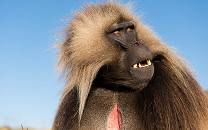
Awash in cultural attractions and dramatic scenery, Ethiopia is far from ordinary. The wildlife here does not appear anywhere else on earth. Memories of being surrounded by hundreds of gelada monkeys with their swirling golden manes and bold red chests will last a lifetime. As will driving the continent’s highest road to see an Ethiopian wolf – Africa’s most endangered carnivore.
- Rates $132 to $392 pp/day
- Best Time October to December (Beautiful scenery, little rain)
- High Season October to January (Some parks get busy)
Ethiopia Parks & Reserves
- Bale Mountains National Park
- Simien Mountains National Park
- Awash National Park
- Abijatta-Shalla National Park
- Chebera-Churchura National Park

Regardless of whether this is your first time on safari or you’re a safari veteran, Kenya is a fantastic place to go looking for wildlife. The Masai Mara National Reserve and surrounding conservancies get all the attention for big cat sightings and the annual wildebeest migration . But Kenya has numerous world-class parks to explore, and it’s also an excellent place to relax on a beach holiday once your safari is over.
- Rates $187 to $699 pp/day
- Best Time June to October and January and February
- High Season June to October and December to March
Kenya Parks & Reserves
- Amboseli National Park
- Lake Nakuru National Park
- Masai Mara National Reserve
- Samburu National Reserve
- Buffalo Springs National Reserve
- Tsavo East National Park

A mountainous wonderland completely surrounded by South Africa, Lesotho offers an array of adventurous options. On horseback is the best way to discover the stunning landscapes, while hiking in just about any direction is rewarding. Getting here is half the fun if you choose the hairpin bends of Sani Pass, South Africa’s most famous 4x4 track.
- Rates $60 to $96 pp/day
- Best Time January to December
- High Season December to January and July to August
Lesotho Parks & Reserves
- Sehlabathebe National Park
- Ts'ehlanyane National Park
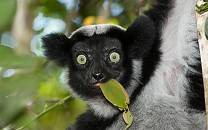
While many visitors to Madagascar come for the beautiful beaches, the island with its 50 national parks and reserves is nothing short of a top ecotourism destination. If you like an active holiday, Madagascar won’t disappoint as all wildlife viewing is done on foot. For a true adventure, you can even go out at night, looking for animals by flashlight.
- Rates $149 to $991 pp/day
- Best Time August to November (Less rainfall)
- High Season July, August and December (Many parks get busy)

Madagascar Parks & Reserves
- Andasibe-Mantadia National Park
- Bemaraha National Park
- Isalo National Park
- Ranomafana National Park
- Amber Mountain National Park
- Ankarana Special Reserve

Malawi’s main tourist attraction is enormous Lake Malawi, with its beaches and water-based activities. The country also offers a range of safari options. Lovely Liwonde National Park has a winding river ideal for boat trips and seeing lots of elephants. Majete Wildlife Reserve is Malawi’s top Big Five destination. The rolling green hills of Nyika National Park are ideal for walking.
- Rates $99 to $955 pp/day
- Best Time July to October (Dry bush and animals easier to find)
- High Season July to October (Some parks are busy, high-season rates)
Malawi Parks & Reserves
- Liwonde National Park
- Majete Wildlife Reserve
- Nyika National Park
- Kasungu National Park
- Kuti Wildlife Reserve
- Lengwe National Park
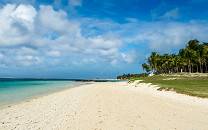
Mauritius is one of the most beautiful islands on Earth. But that’s just the beginning of any visit here. Reefs and a crystal-clear lagoon surround an island encircled by near-perfect beaches. The interior, too, has plenty of appeal, with rugged mountains, forest-filled valleys and a handful of endangered species, as well as an intriguing cultural and culinary mix.
- Rates $645 to $710 pp/day
- Best Time May, June and September to November
- High Season November to April

Mozambique, dubbed the ‘Pearl of the Indian Ocean’, conjures up images of idyllic white sandy beaches, turquoise waters, swaying palm trees and delicious seafood. Indeed, with its pristine 2,600km/1,616mi dune-fringed coastline, the country is southern Africa’s most alluring beach destination. Less known is that thanks to incredible conservation efforts several Mozambican parks and reserves, which suffered greatly during the civil war, are slowly being restored to their former glory. For an adventurous off-the-beaten-track bush and beach holiday, Mozambique might just fit the bill.
- Rates $154 to $1,492 pp/day
- Best Time April to November (Lots of sunshine and little rain)
- High Season May to October (Most parks never get busy)
Mozambique Parks & Reserves
- Gorongosa National Park
- Banhine National Park
- Gilé National Park
- Limpopo National Park
- Maputo National Park
- Marromeu National Reserve

Namibia is characterized by its desert habitat. The harsh environment forms a magnificent backdrop for a different kind of safari. Animal populations are smaller, but sightings in this sparse setting tend to be rewarding. Not to be missed is Etosha Pan, the largest salt pan in Africa and a seasonal wildlife magnet.
- Rates $183 to $1,129 pp/day
- Best Time June to October (All parks)
- High Season July to October (Etosha gets crowded)
Namibia Parks & Reserves
- Etosha National Park
- Namib-Naukluft National Park
- Skeleton Coast National Park
- |Ai-|Ais/Richtersveld Transfrontier Park
- Bwabwata National Park

Rising abruptly from the sea like an ocean-going mirage, Réunion is the most dramatic of all Indian Ocean islands. The hiking here is extraordinary with views to match, and so many other activities are possible – from whale watching to white-water rafting. A visit here also means fascinating village life, enticing food and fun festivals.
- Best Time May to November (Less rain)
- High Season July, August, Christmas, Easter (Busy)

Gorilla trekking in Rwanda is the perfect choice for an unforgettable wildlife encounter. It’s challenging, thrilling and emotional, all in one package. This small but scenic country, referred to as the Land of a Thousand Hills, has a lot more to offer though. Thirteen other primates, including chimpanzees, inhabit the lush rainforest of Nyungwe National Park, while the Big Five traipse around the savannah plains of Akagera National Park. If you’re feeling adventurous, you can head out on foot, bicycle or boat to explore the beautiful Lake Kivu region, or even conquer one of the Virunga volcano peaks.
- Rates $312 to $1,111 pp/day
- Best Time June to September (Dry season)
- High Season June to September (Gorilla permits are scarce)
Rwanda Parks & Reserves
- Volcanoes National Park
- Akagera National Park
- Gishwati-Mukura National Park
- Nyungwe National Park

The island archipelago nation of Seychelles combines some of the world’s most beautiful beaches with astonishing biodiversity. Island and marine wildlife, found nowhere else on the planet, bring to life this superb chain of islands, with their volcanic interiors and blissful sense of Indian Ocean isolation. Exclusive resorts, trails through montane (mountain) forest, and aromatic spice gardens are among the many highlights.
- Rates $316 to $2,144 pp/day
- Best Time March, April, October and November (Shoulder months)
- High Season December to February

South Africa is one of Africa’s great wildlife destinations. Vast Kruger National Park has an abundance of animals and is one of the continent's iconic attractions. For outdoor adventure, the Blyde River Canyon is the third largest on the planet, and jagged peaks of the Drakensberg mountains punch into the sky. Cape Town hums with an urban beat, and is fringed by white sandy beaches.
- Rates $150 to $671 pp/day
- Best Time All parks: May to September, Cape Town: November to March
- High Season October to March (Crowded during school holidays)
South Africa Parks & Reserves
- Kruger National Park
- MalaMala Private Game Reserve
- Phinda Private Game Reserve
- Sabi Sand Private Game Reserve
- Hluhluwe-iMfolozi Game Reserve
- Addo Elephant National Park

Tanzania, with its three safari circuits , is one of Africa’s top wildlife destinations. The popular Northern circuit incorporates bucket-list landmarks such as Serengeti National Park, Ngorongoro Crater and Mt Kilimanjaro. Repeat visitors might prefer the remote wilderness vibe of the Southern or Western circuits . For some beach time, the ‘Spice Island’ of Zanzibar is only a short flight away.
- Rates $220 to $607 pp/day
- Best Time June to October; January to February for wildebeest calving
- High Season July to March (Northern circuit parks; all get crowded), June to October (Southern and Western circuit parks; only Nyerere gets crowded)
Tanzania Parks & Reserves
- Ngorongoro Crater
- Nyerere National Park
- Ruaha National Park
- Serengeti National Park
- Gombe National Park
- Katavi National Park

Uganda is a great destination to view wildlife in both forest and savannah. Not to be missed is gorilla trekking in Bwindi Impenetrable or Mgahinga Gorilla National Parks, while chimps can easily be spotted in Kibale National Park and several other locations. Queen Elizabeth and Murchison Falls National Parks offer wonderful savannah safaris with good wildlife viewing, as does the more remote Kidepo Valley National Park.
- Rates $273 to $688 pp/day
- Best Time June to August and December to February
- High Season June to September (It's rarely crowded)
Uganda Parks & Reserves
- Bwindi Impenetrable National Park
- Kibale National Park
- Murchison Falls National Park
- Queen Elizabeth National Park
- Budongo Forest
- Katonga Wildlife Reserve

In Zambia, you’ll be looked after on safari by some of the best guides in Africa. They’ll happily share everything they know about the local wildlife and landscape, while safely leading you on game drives, walking safaris and even canoeing safaris along the Zambezi River.
- Rates $205 to $940 pp/day
- Best Time May to September (Most parks)
- High Season July to October (Victoria Falls and South Luangwa get busy)
Zambia Parks & Reserves
- South Luangwa National Park
- Kafue National Park
- Lower Zambezi National Park
- Bangweulu Wetlands
- Blue Lagoon National Park
- Kasanka National Park

Zimbabwe is home to two of Africa's most remarkable tourist attractions. These are the spray-soaked, mile-wide Victoria Falls (officially one of the Seven Natural Wonders of the World) and the brooding ruined city of Great Zimbabwe. This is also a wonderful destination for safaris. Most accessible is Hwange National Park, which hosts all the Big Five including some immense elephant herds. Elsewhere, the more remote Mana Pools, Matusadona and Gonarezhou National Parks offer great wildlife viewing and are ideal for walking safaris.
- Rates $116 to $812 pp/day
- Best Time June or July to October (Most parks)
- High Season July to October (Only Victoria Falls gets busy)
Zimbabwe Parks & Reserves
- Hwange National Park
- Mana Pools National Park
- Chizarira National Park
- Gonarezhou National Park
- Matobo National Park
- Matusadona National Park

The 22 Best Places to Go on Safari in 2022
I’ll be the first to admit that I’m a safari addict. There, I said it. I honestly don’t think there is anything more special or humbling than seeing lions, giraffe, zebras and all their buddies out there in the wild. Maybe it’s the fact you never thought it would happen to you? Or maybe it’s such a deep connection with nature that you feel a sense of wholeness you haven’t felt before? Whatever it is, going on safari is pure magic – it never gets old. So if you’re wondering where to go on safari, we’ve listed the best places to go on safari in 2022!
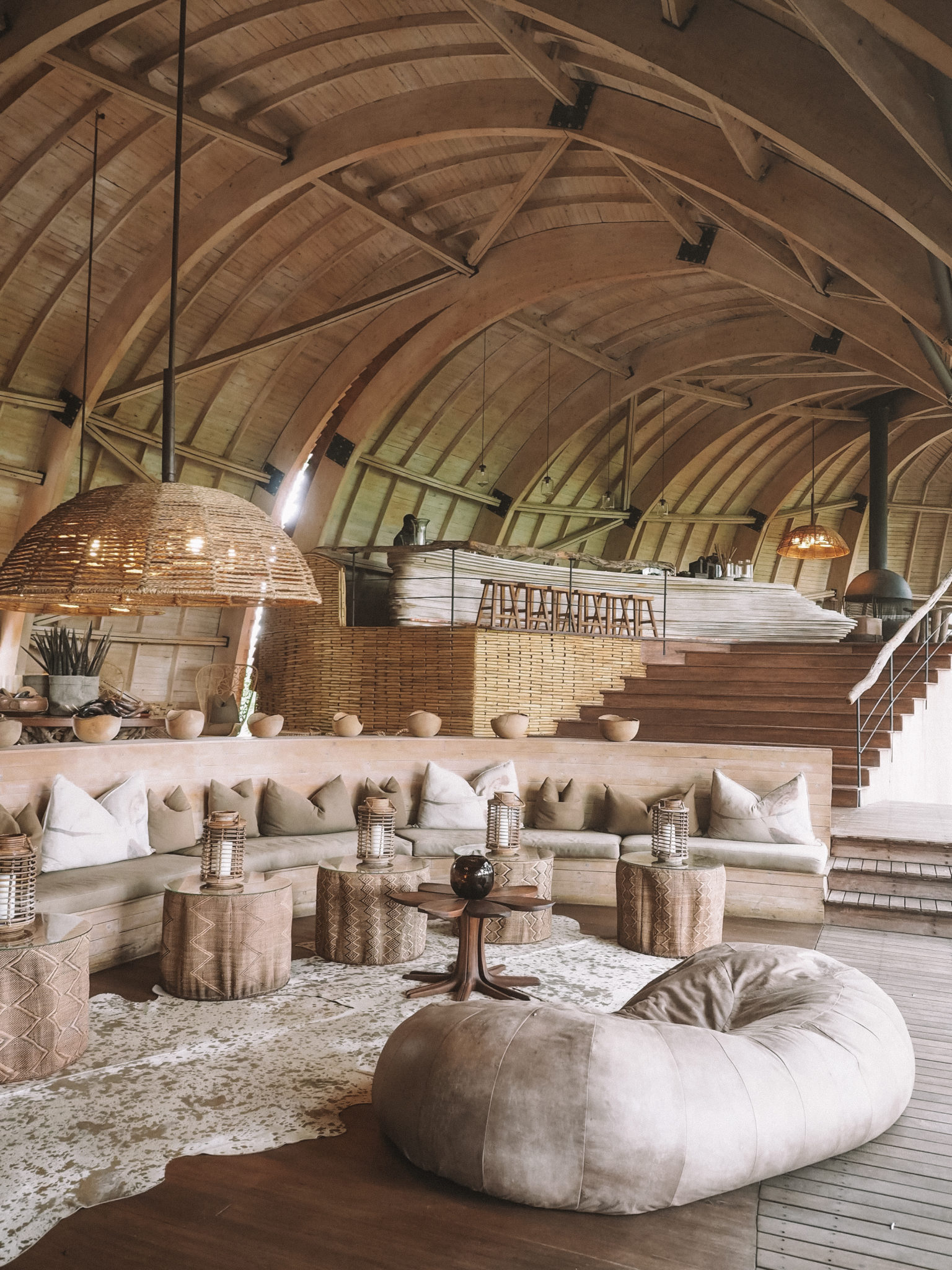
And Beyond Sandibe, Botswana
When I stepped off the 6 flights journey to Sandibe lodge in the Okavango Delta I would have been happy to rest my head on a pillow let alone the lush linens inside the spacious villa that awaited my arrival at And Beyond. This lodge is popularly regarded as one of the most unique luxury lodges in the continent, with a natural interior design focus to blend in to and compliment its’ surrounds. Check out this this post for a full look inside the lodge or watch the video to step inside a Botswana safari.
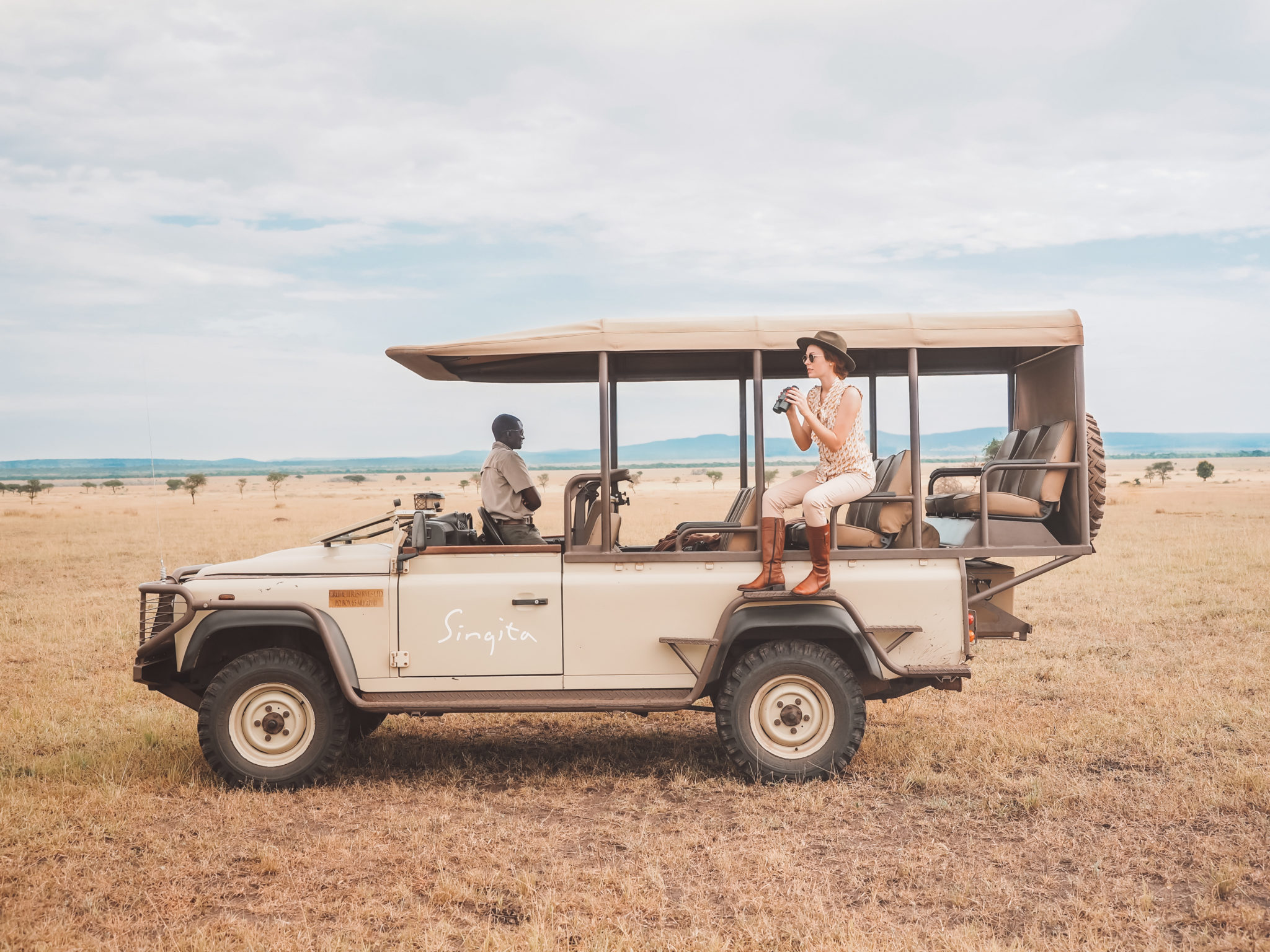
Singita Serengeti, Tanzania
If you’ve ever dreamed of witnessing the great migration then look no further than checking yourself in to one of the Singita lodges on the border of the Serengeti, Tanzania. Click here to see inside Serengeti House , the most luxurious lodge in Tanzania (with a hefty price tag to match!) However if price is of no concern, you can’t get a more luxurious offering in Tanzania’s Serengeti.
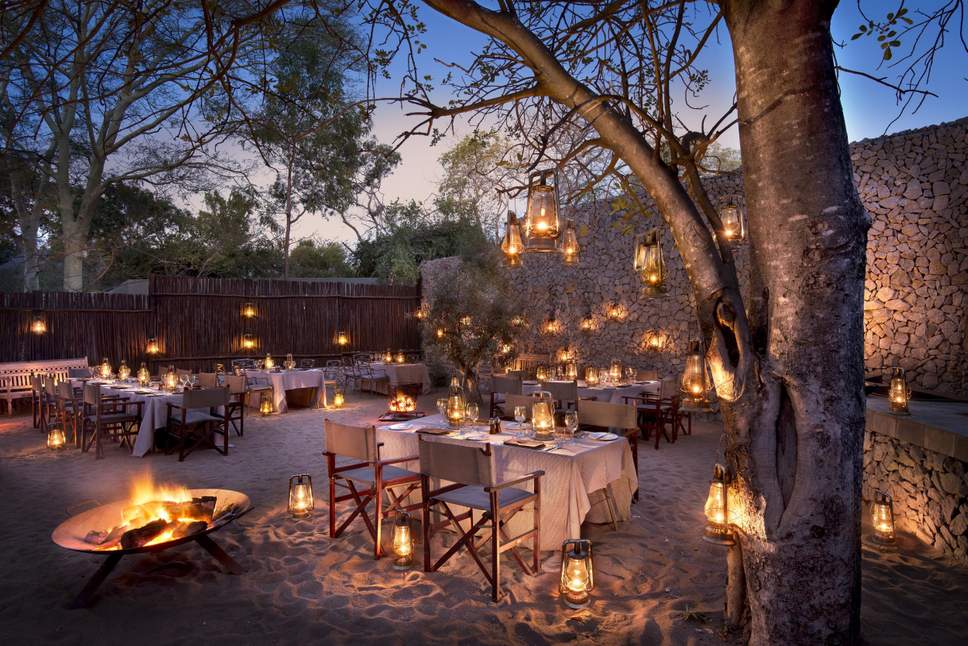
And Beyond Ngala, South Africa
This timeless lodge in South Africa is a dream getaway for couples and the perfect honeymoon location if you prefer to take your trip at a slower pace. This is definitely a lodge leaning on the romantic side, so be sure to expect many couples in your midst. If you’re a solo traveler, you might wish to look elsewhere for your safari camp.
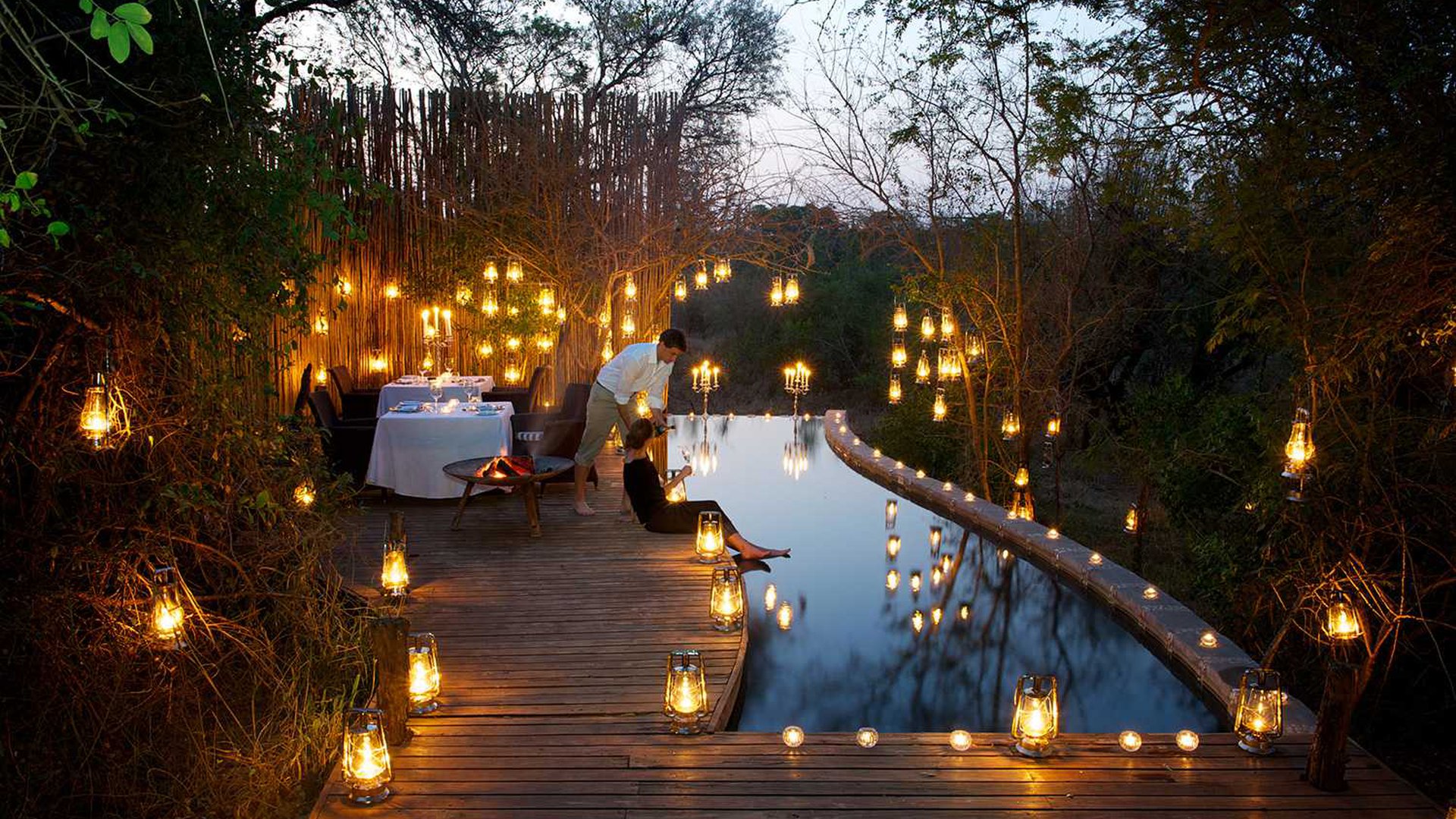
Londolozi Game Reserve, Sabi Sands
Located inside the exclusive Sabi Sands game reserve, Londolozi borders the western edge of Kruger National Park and thus has ample game viewing on offer any time of year. From the privacy of your suite and outdoor tub you can view animals as they pass by in the distance and the small size of this lodge makes it one of the most exclusive camps in South Africa.
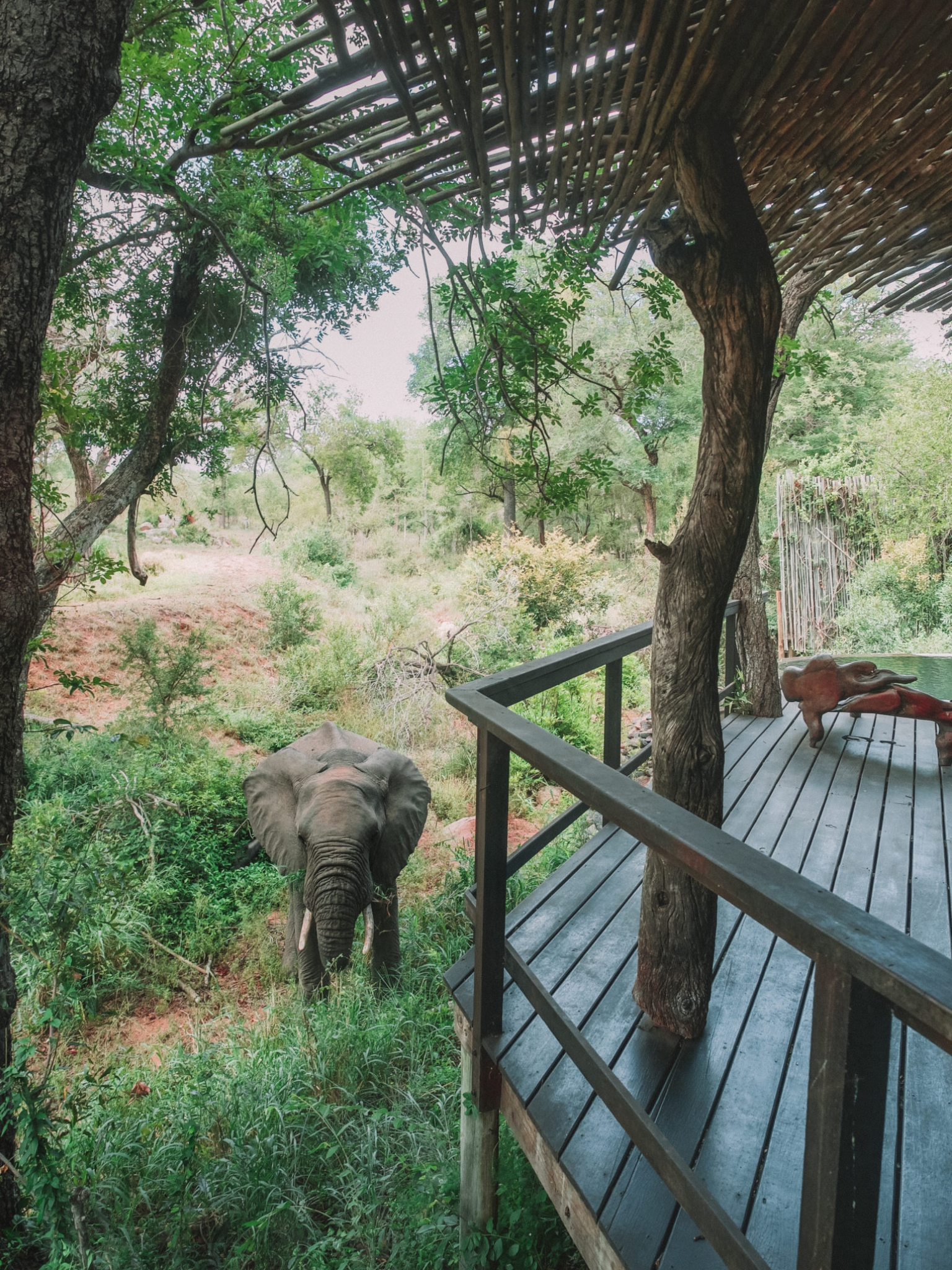
Singita Boulders, Kruger National Park
Have you ever pictured yourself eating breakfast on your deck as an elephant passes by, stops in to drink from your swimming pool and then continues to carry on with his day? You have now! Click here to see inside Singita Boulders , one of our favourite luxury lodges in South Africa.
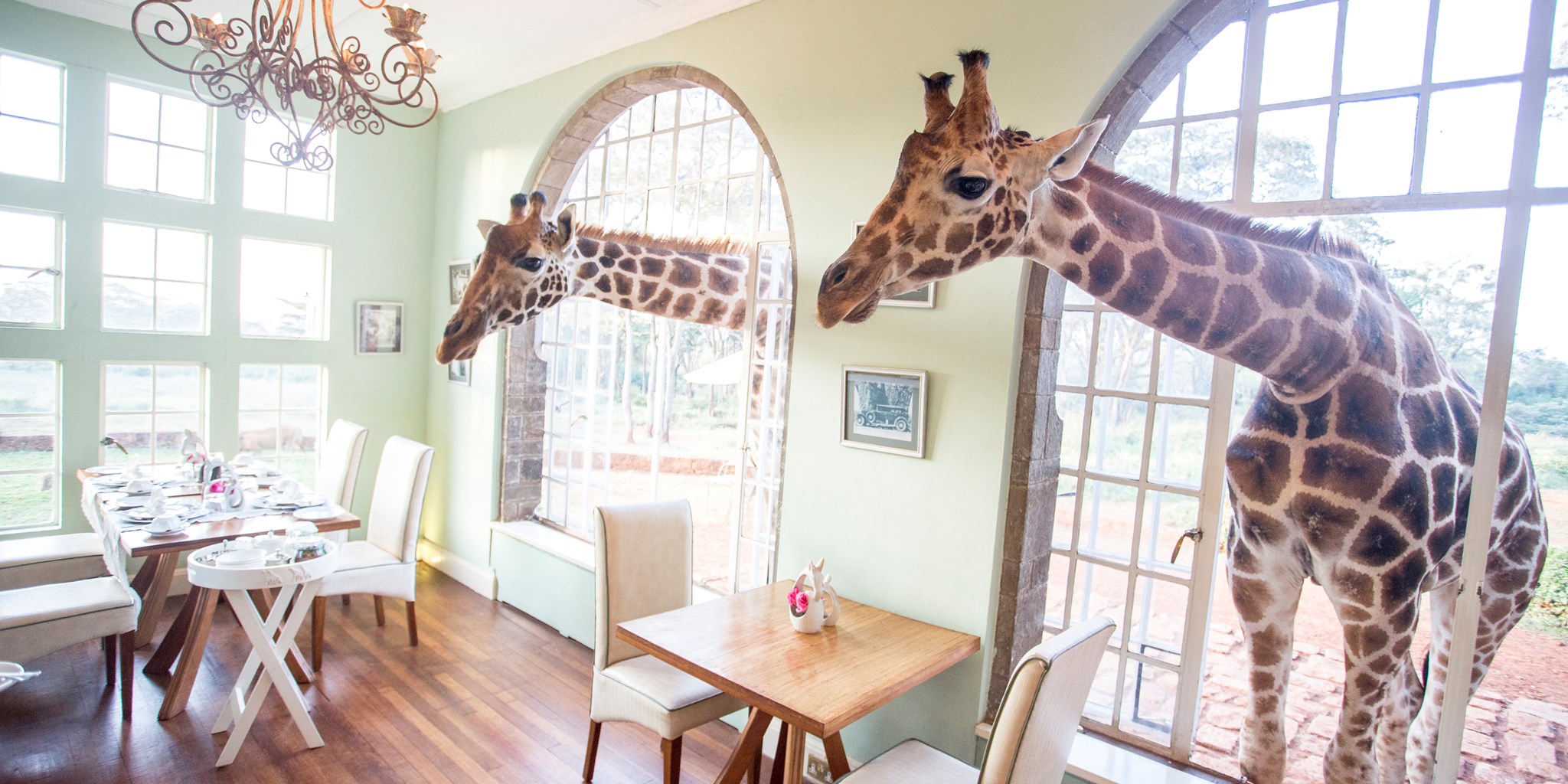
Giraffe Manor, Kenya
Chances are you’ve seen the instagram photos (who hasn’t!?) but regardless of the popularity, Giraffe Manor still exceeds expectations and is definitely one of the top “Bucket list” hotels on our list! Be sure to plan your stay ahead of time, as this is one of the most notoriously difficult hotels to book around the world.
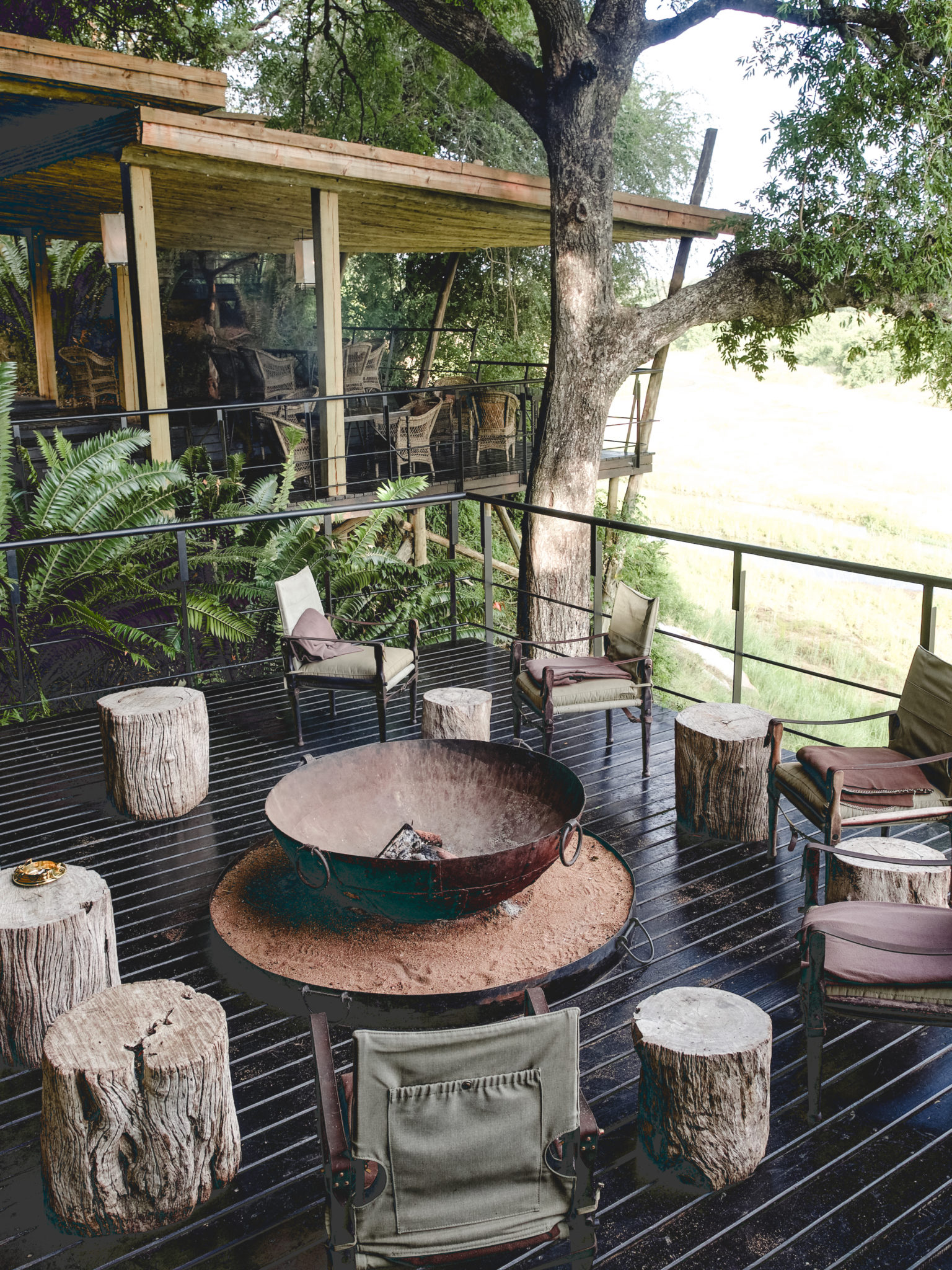
Singita Ebony, Kruger National Park
With a unique treehouse vibe that will leave you feeling like a big kid who has stepped inside the Tarzan film in no time, Singita Ebony is one of the most sought after lodges in all of South Africa. If you can chance a booking (it is often booked out in the high season) then be sure to stay at least three nights to take full advantage of all this all-inclusive lodge has to offer.
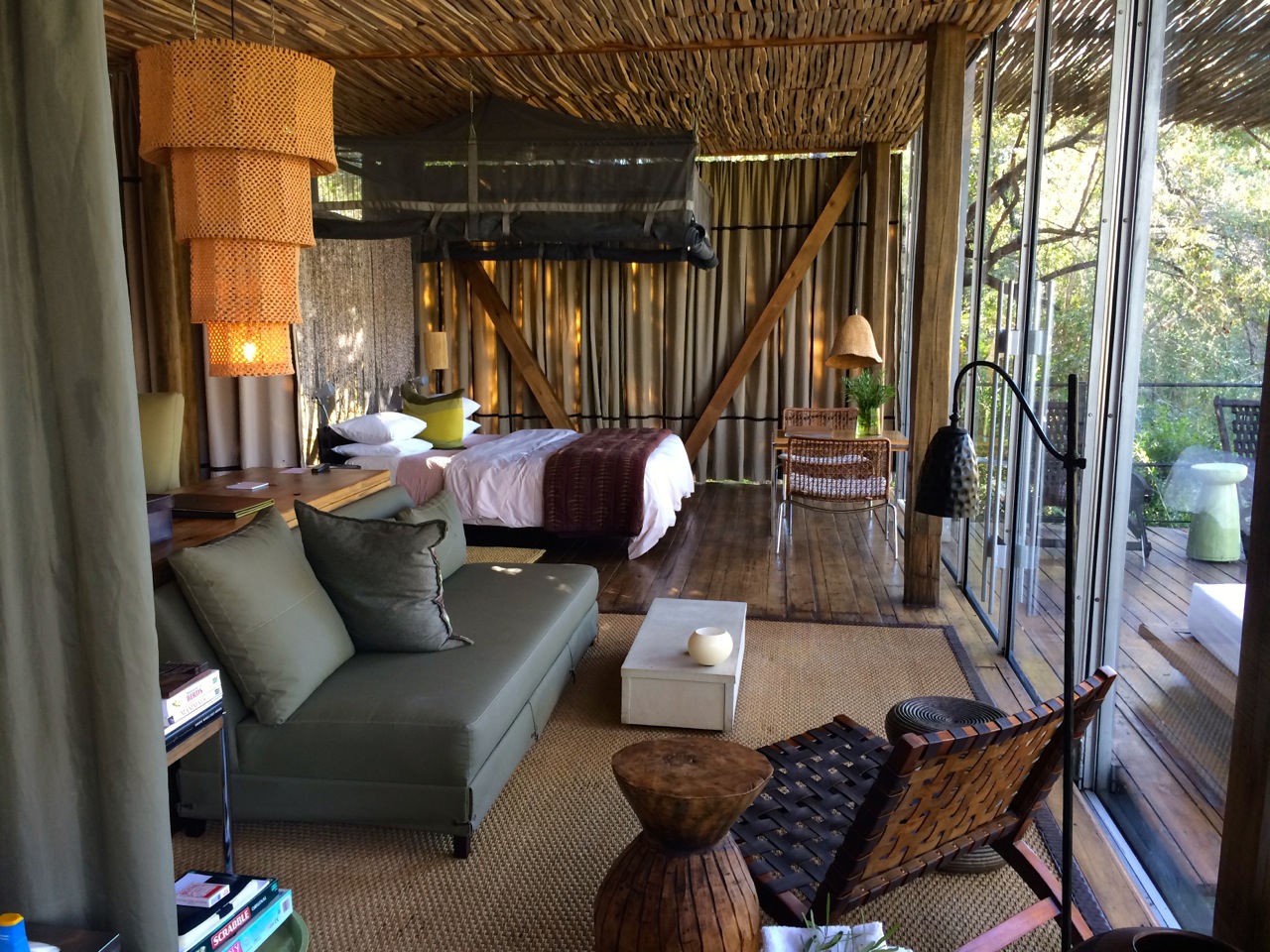
Singita Sweni, Kruger National Park
As one of the smallest lodges in the Singita collection, Singita Sweni is the perfect private oasis you thought you could only dream of. The treehouse style rooms overlook a river below that is often frequented with hippos and predators passing by.
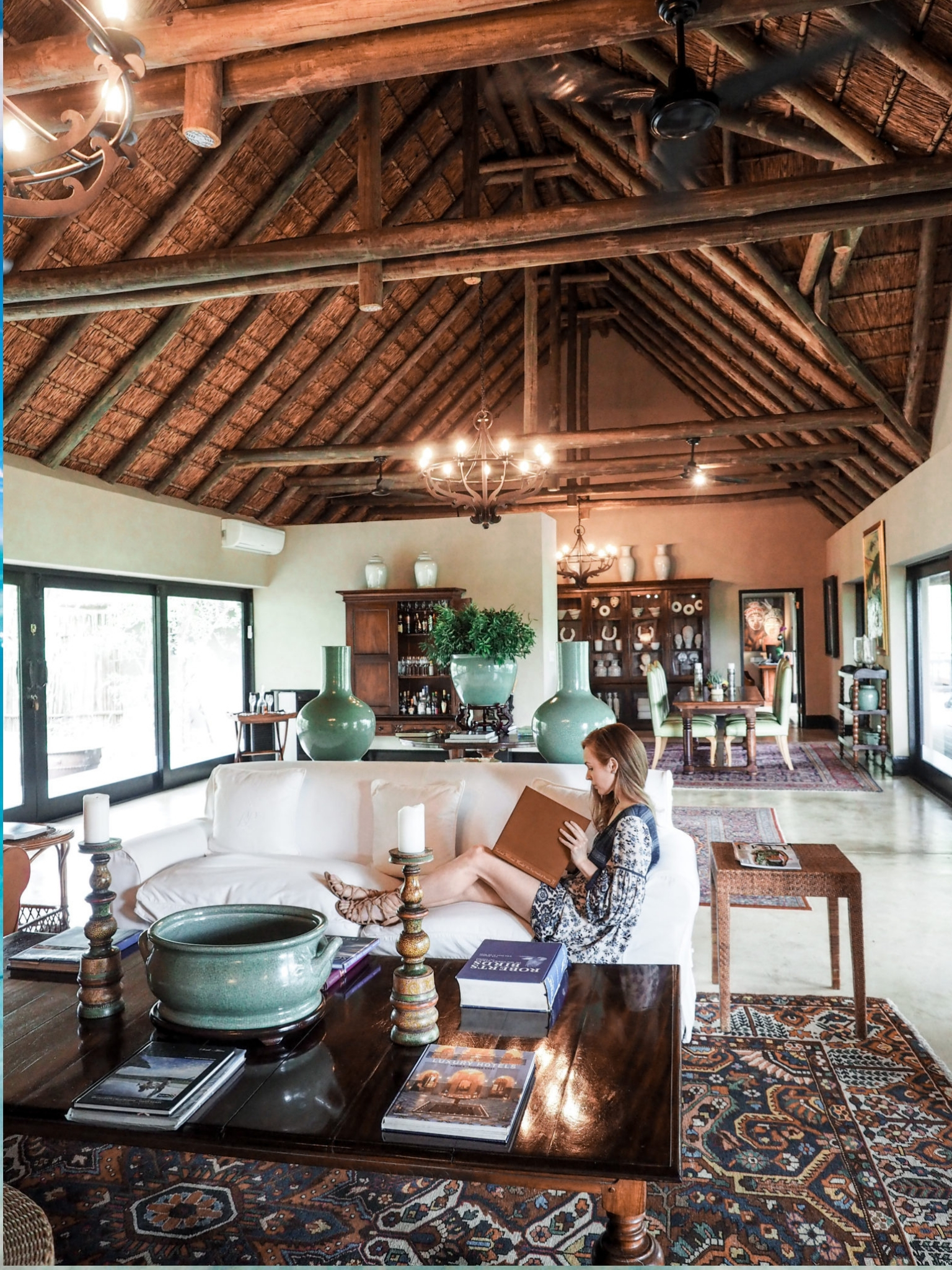
Royal Malewane, South Africa
As one of the oldest safari lodges in South Africa that welcomes back families year after year, Royal Malewane has a very long legacy that it continues to uphold with its regular clientele. Read this post to see more photos inside Royal Malewane and get the full experience on offer at this South African luxury lodge.
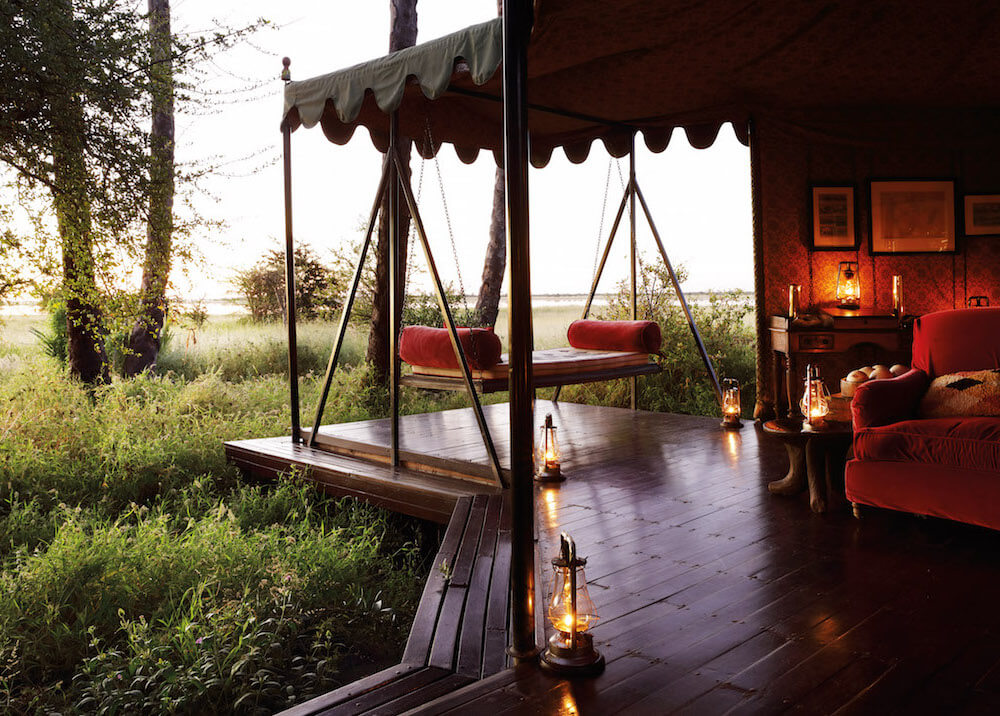
Jack’s Camp, Kalahari, Botswana
A safari destination that has long been on my list of must visit camps and hopefully will wangle its way on to my 2019 itinerary is the incomparable Jack’s Camp in the South of Botswana. This is the camp you should check yourself in to if you want to see meerkats up close, along with a huge range of wildlife in the atmospheric Kalahari desert.
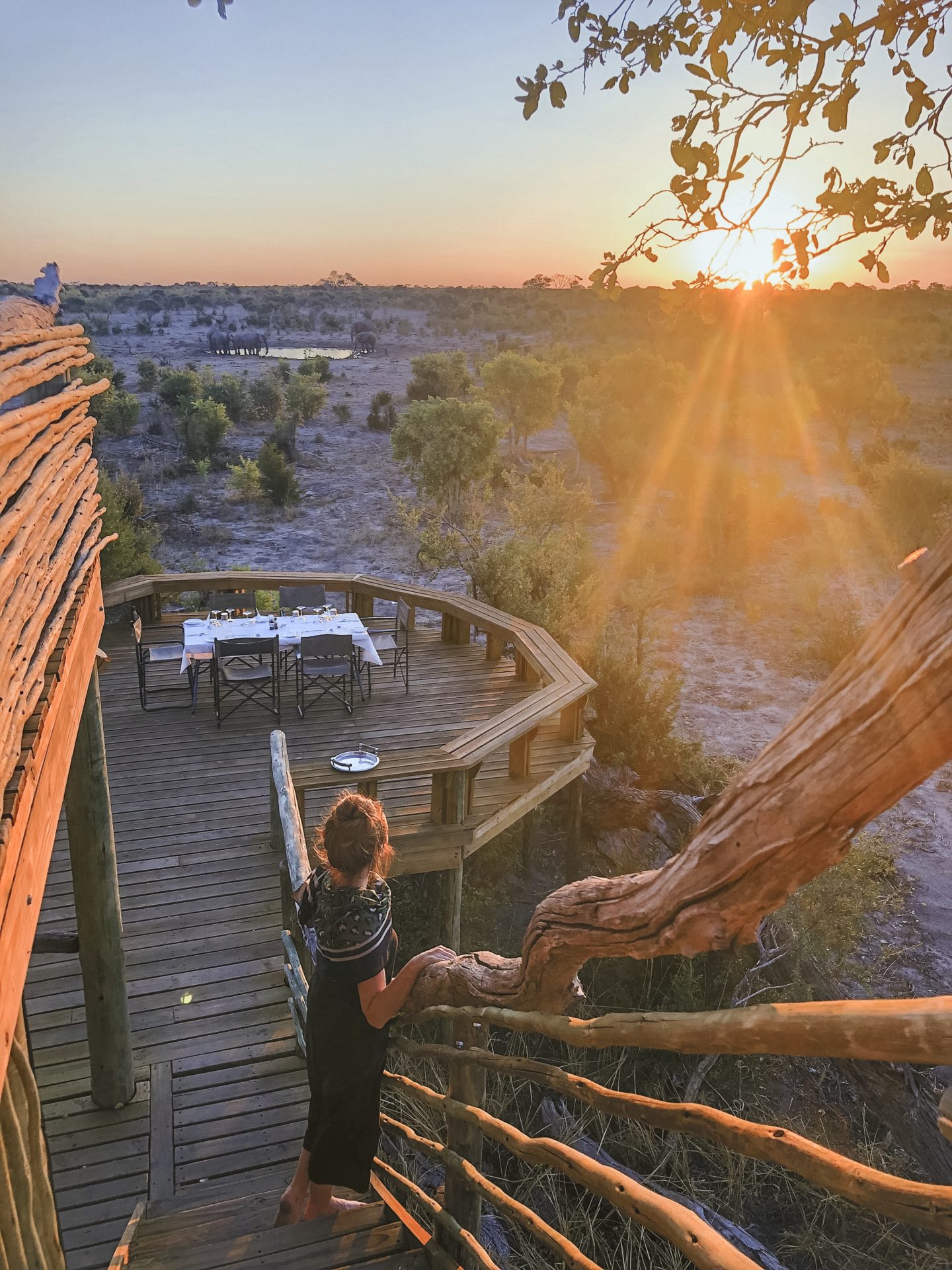
Skybeds, Botswana
If you see yourself totally immersed in the bushlands of Africa or perhaps you’ve heard the now infamous tale of Prince Harry and Meghan’s magical second date in Botswana, then you’ll have all your hopes and dreams of staying in the bush come true at Skybeds Botswana . As part of an add-on package for Natural Selection properties in the Okavango Delta, a night in the bush on top of a sky bed is as surreal as it sounds (and in some ways, as scary!) But once the fear settles and the realisation sets in that you’re in safe hands, a night under the stars is the kind of story you’ll talk about over the dinner table for years to come.
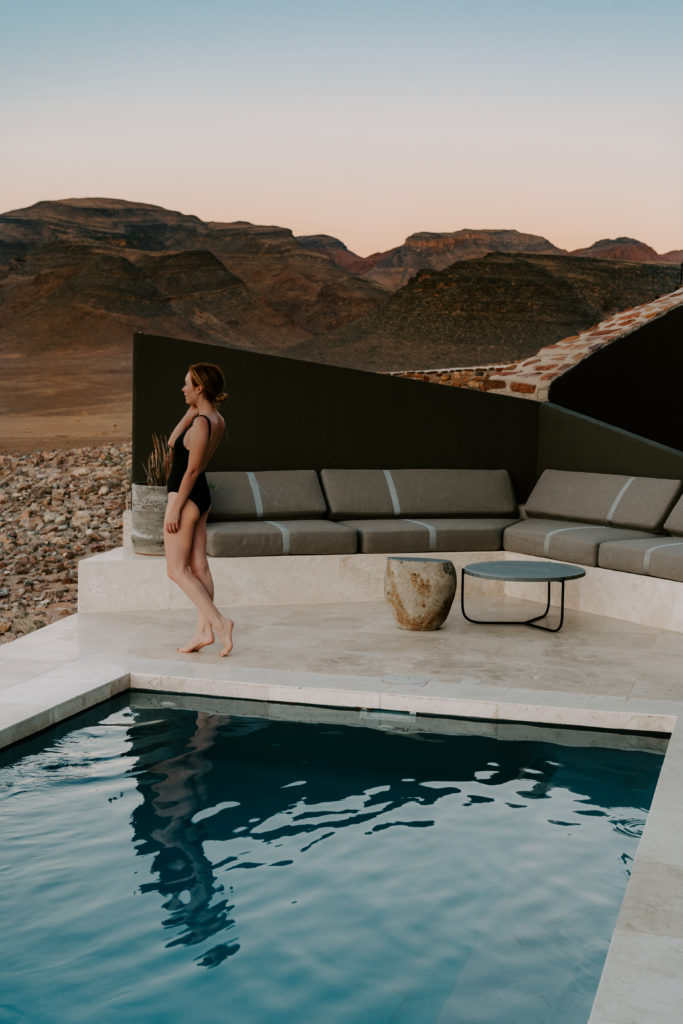
andBeyond Sossusvlei Desert Lodge
If you’re looking for something out of the ordinary, book yourself a stay in the ethereal and surreal Namib Desert. And if only the best will do, andBeyond Sossusvlei Desert Lodge is the best of the best. This soulful lodge in the heart of the Sossusvlei Desert offers an all-inclusive experience, with accommodation, food, drinks and a range of activities with experienced guides. Although not the ordinary safari experience, this is certainly a once in a lifetime lodge you’ll create memories to last a lifetime.
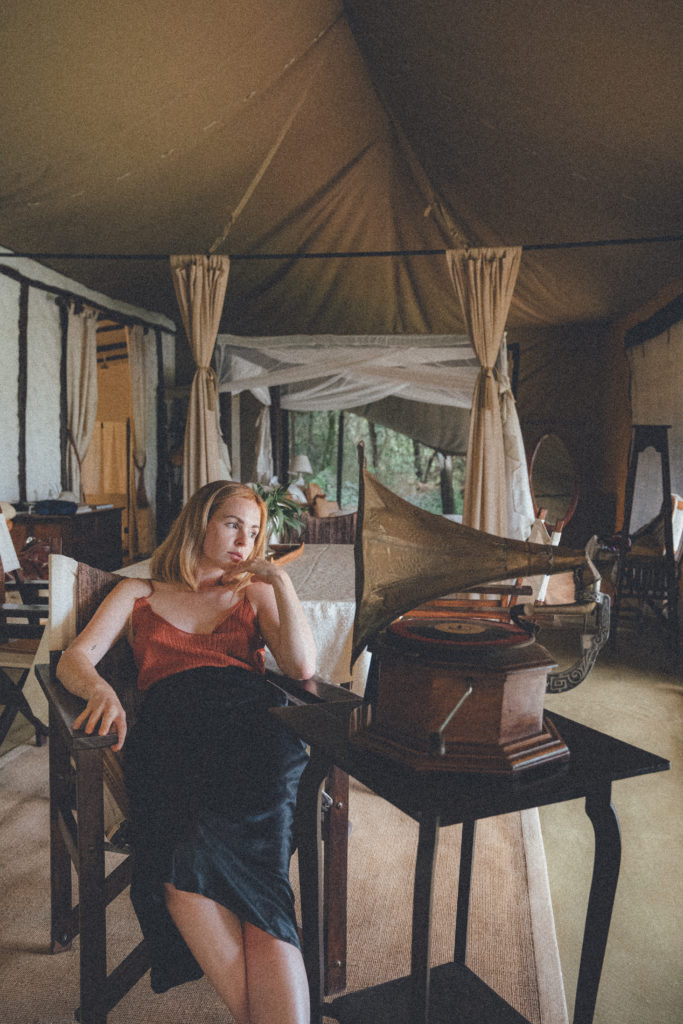
Cottar’s Safari Camp, Kenya
With a focus on conservation in the Greater Mara, Cottar’s Safari Camp is a World of Wanderlust favourite and also a favourite amongst celebrities. This vintage safari camp feels like stepping back in time, and no detail is overlooked! From the vintage tents to the antique details, this camp is a great way to feel the bygone era of safaris when they first swept across Africa.
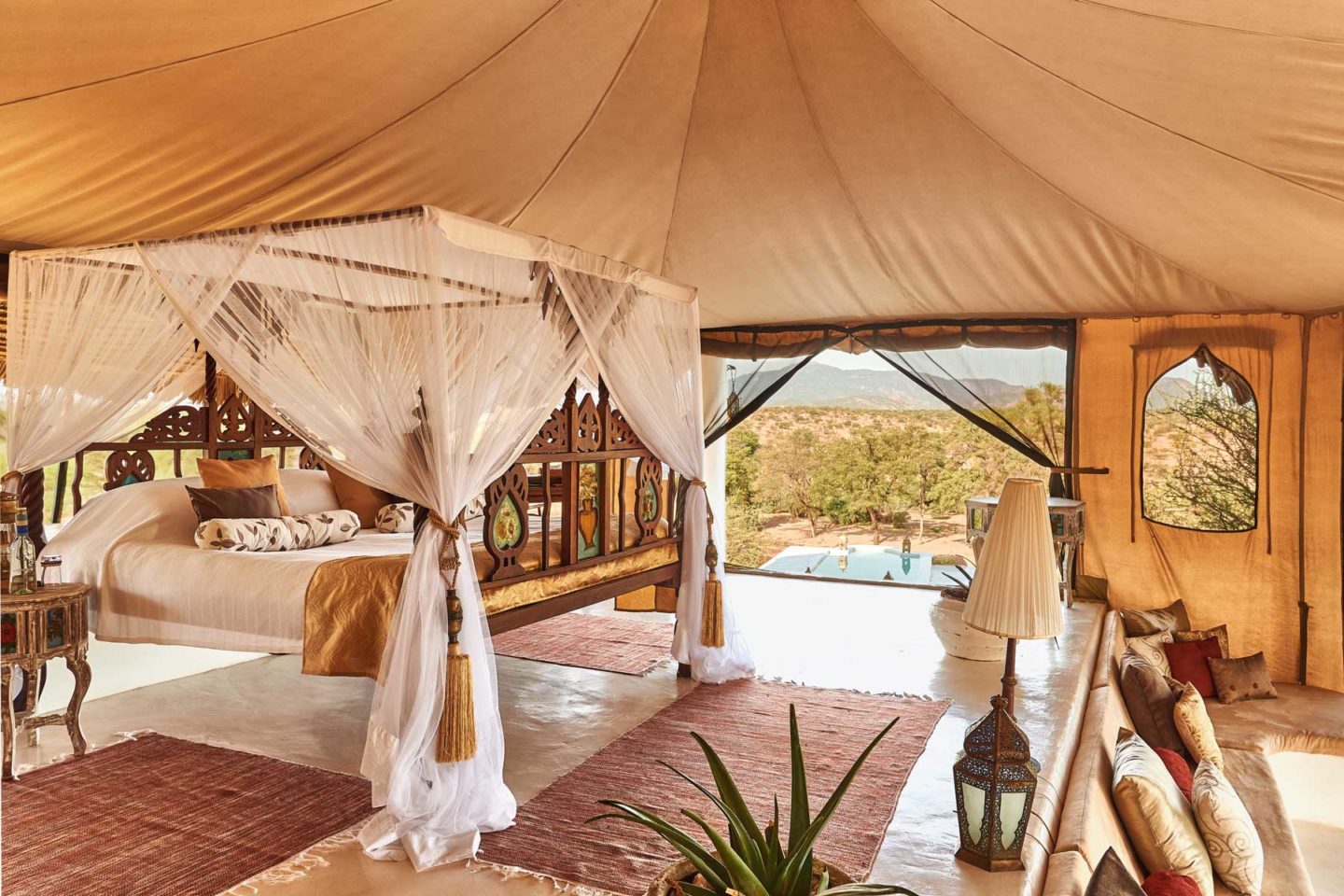
Sasaab, Samburu, Kenya
Offering the ultimate safari experience in Samburu National Reserve, Sasaab is a part of the highly celebrated safari collection. With decadent tents and an outlook over the open plains, this camp is one of Kenya’s most luxurious. Featuring Moorish architectural touches and Moroccan antiques, the camp feels other-worldly and is certainly one of our top picks for the best safari camps in 2022.
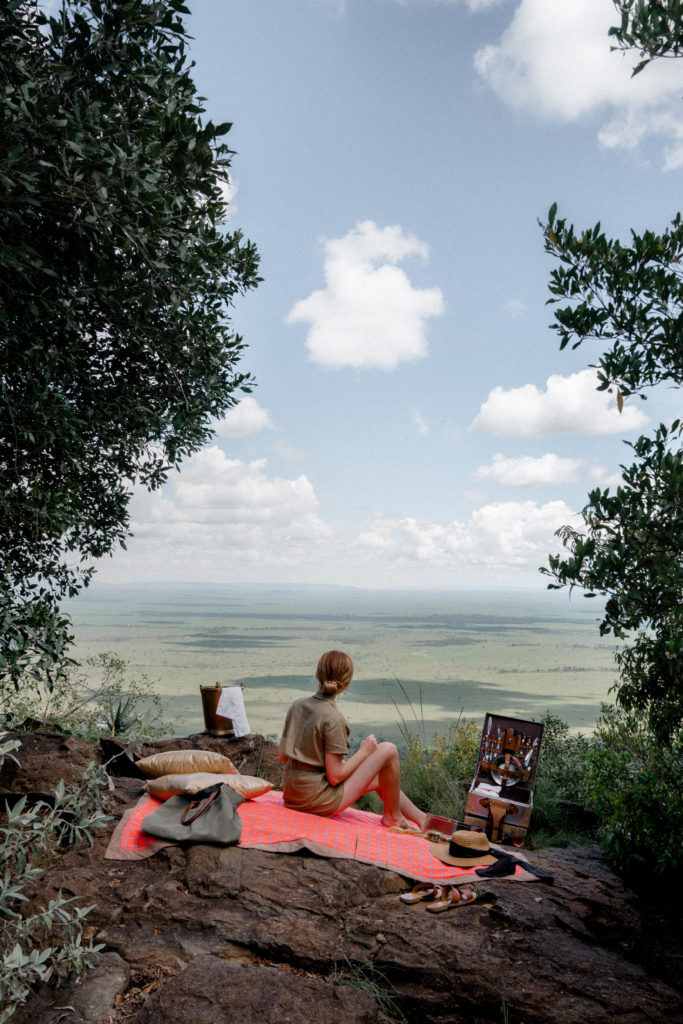
Angama Mara, Kenya
As one of Kenya’s most celebrated safari lodges and one of Kenya’s newest additions, Angama Mara is a top pick for travelers in search of modern luxury. Situated on top of a hill overlooking the Maasai Mara below, you can’t beat this location for exclusivity and serenity overlooking the Mara.
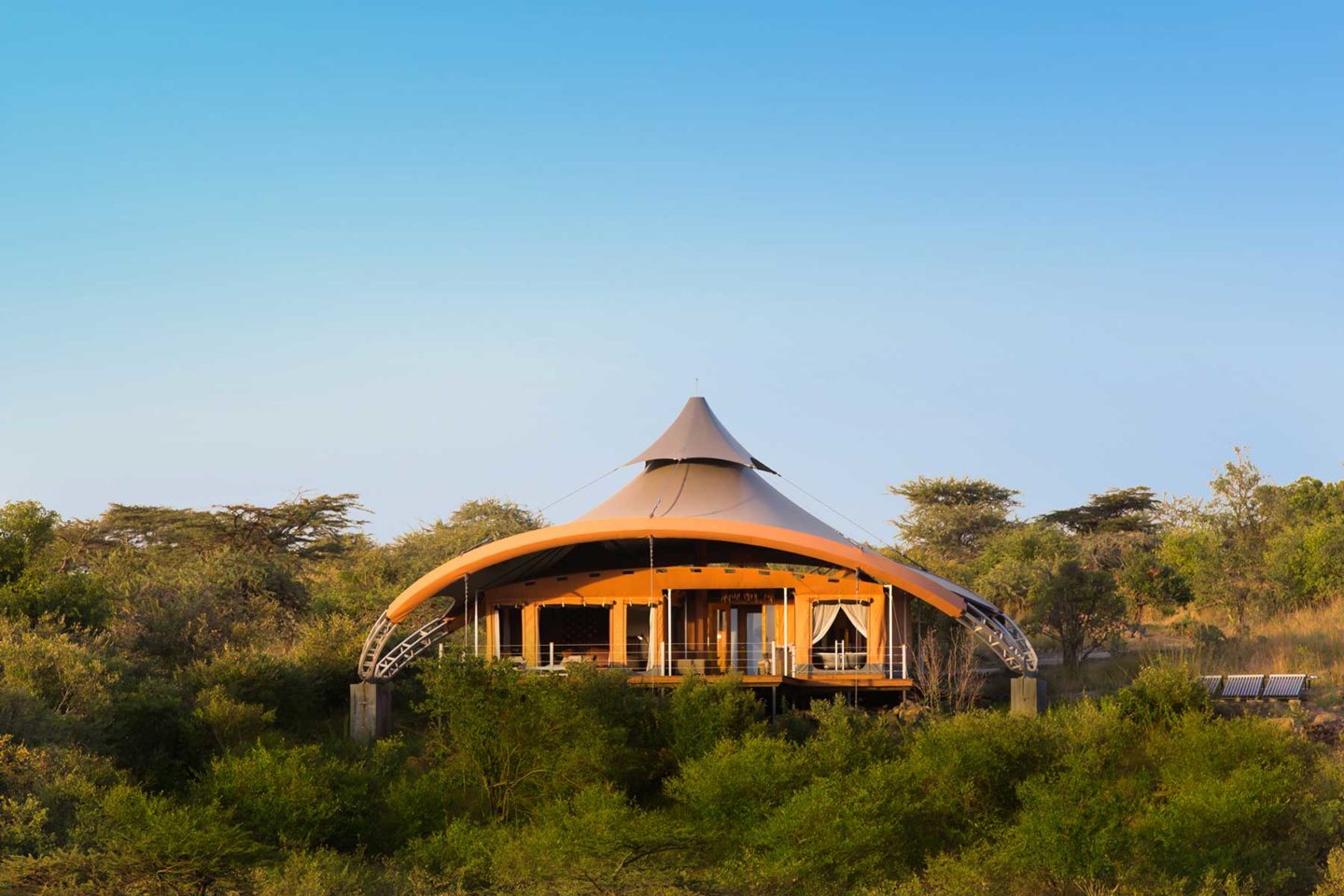
Mahali Mzuri, Kenya
Mahali Mzuri is Sir Richard Branson’s 12-tented luxury safari camp in the Kenyan Bush and having won the #1 position for the best hotel in the world in 2021, we’re pretty certain you can’t beat this camp for a safari in 2022! Offering refined permanent tents across the savannah, the service is just as polished and unforgettable.
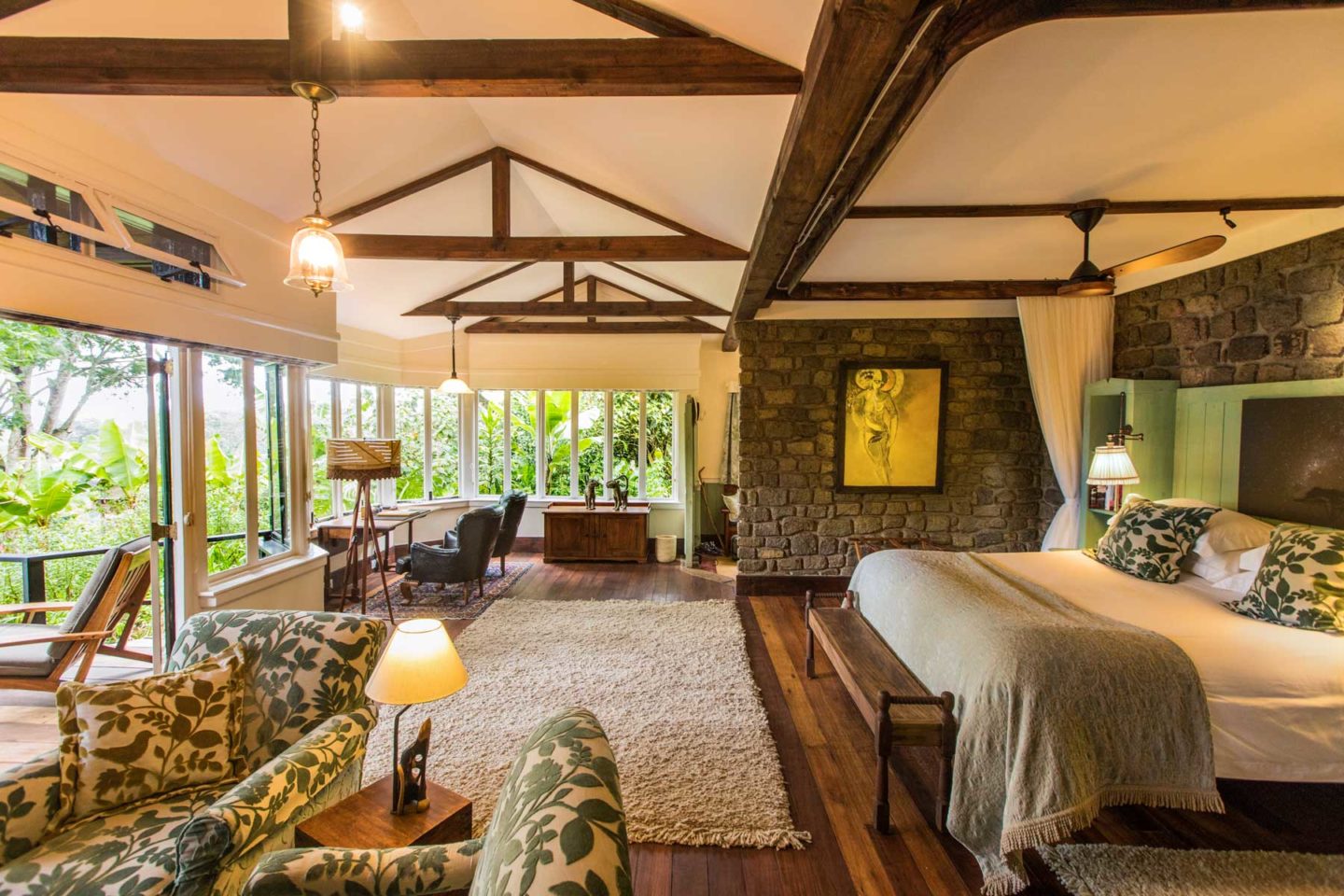
Gibb’s Farm, Tanzania
If you would prefer a safari camp that is more on the traditional side, Gibb’s Farm in Tanzania is the epitome of classic safari luxury. This idyllic lodge is located on the outer rim of the Ngorongoro Crater, one of Tanzania’s most sought after locations. A sanctuary for the senses, green thumbs will love spending time in the extensive gardens.
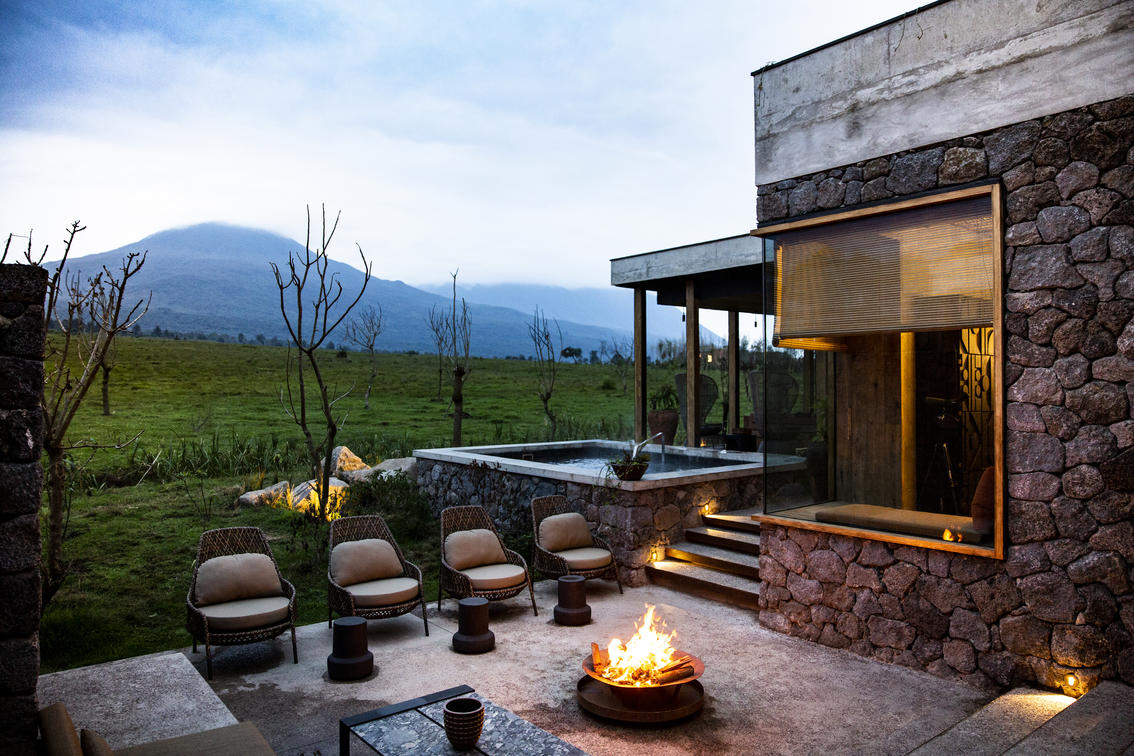
Singita Kataza, Rwanda
As far as safari camps go, many of the best camps are owned by tour operators who manage a number of camps. And in the luxury circuit, Singita is highly renowned as one of the most luxurious safari operators afross Africa. One of their newest camps, Singita Kataza, offers ultimate luxury in Rwanda. And if you’re looking for a safari camp in 2022 to experience mountain gorillas in Rwanda, this is it!
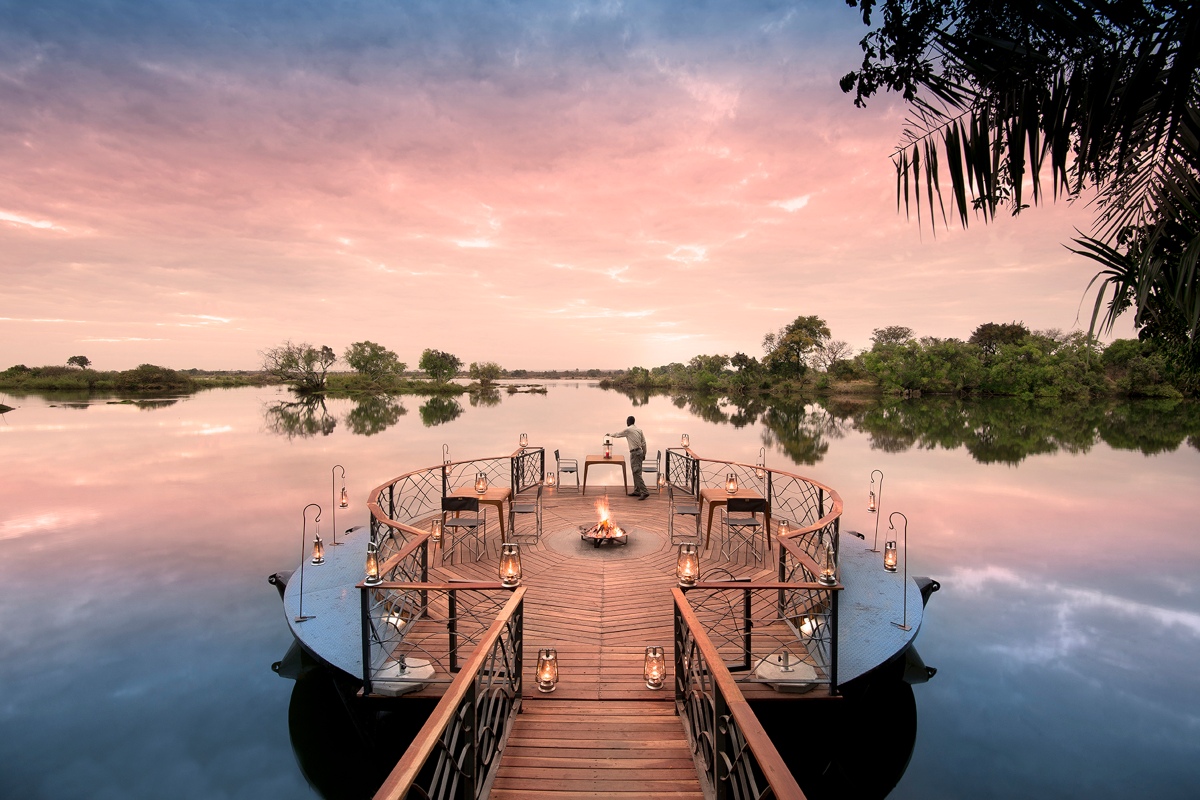
Thorntree River Lodge, Zambia
Zambia has its fair share of safari lodges to offer visitors, but if you ask us, Thorntree River Lodge is the cream of the crop! This beautiful and ethereal lodge sits quietly and serenely on a river, with just eight rooms making this one of the most exclusive lodges to check in to. Activities include a visit to Victoria Falls, village visits, safari and sunsets on the river.
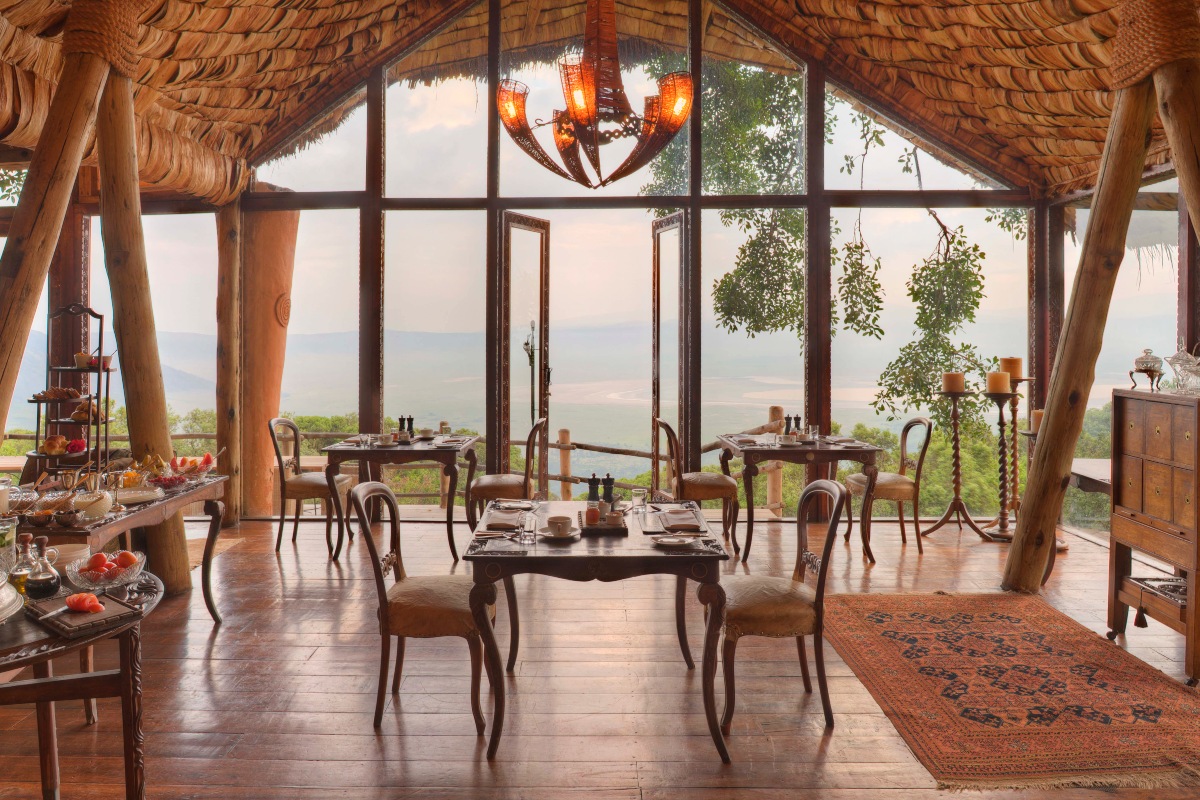
andBeyond Ngorongoro Crater Lodge
Ngorongoro Crater is one of Tanzania’s most sought after destinations. And if you find yourself making your way to the crater’s rim, you can’t beat andBeyond’s Ngorongoro Crater Lodge. This luxury all-inclusive lodge is one of the most romantic and serene safari lodges you will ever encounter, so be sure to stay a few days to make the most of the serenity.
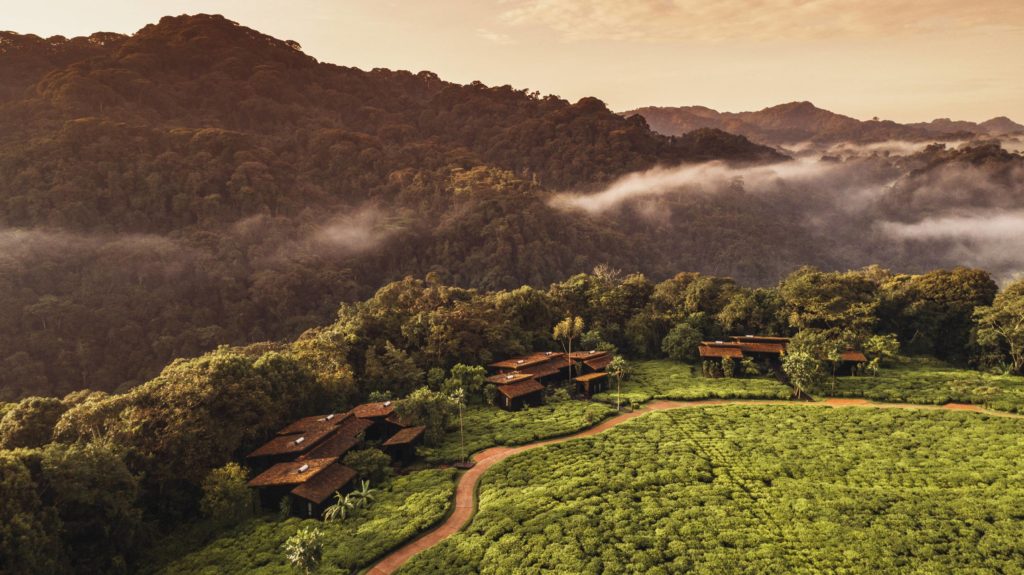
One&Only Nyungwe House Rwanda
If you’re looking for ultimate luxury in Rwanda, One&Only offers the ultimate journey into Rwanda’s rainforests and jungle terrain. Nyungwe House is set on a tea plantation, offering unreal landscapes to wake up to and feel the private serenity of Rwanda’s rolling hills.
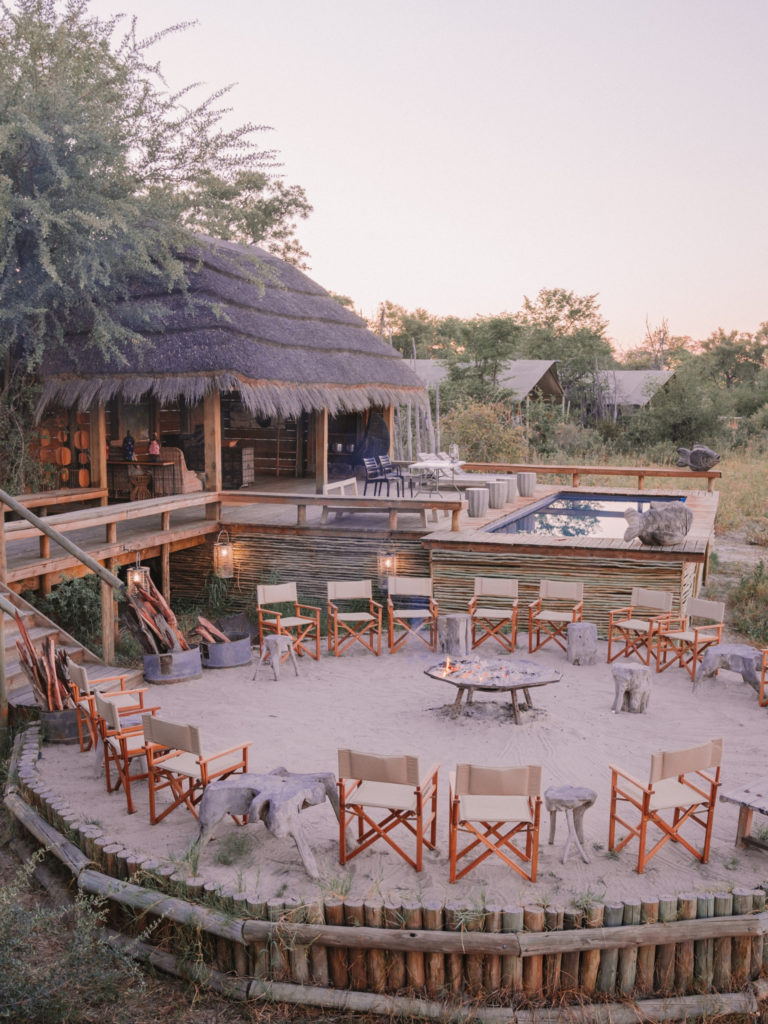
Sable Alley, Okavango Delta, Botswana
Last but not least, Sable Alley is one of the many lodges located in the heart of the Okavango Delta in Botswana. But what makes this lodge such a great choice in 2022 is the rustic appeal of the lodge, which truly makes you feel as if you’re staying in the heart of the bush. This is also a great camp to base yourself if you fancy a night in the Skybeds Botswana, as it is part of the same group.
Safari Style

Follow the journey on Instagram
Brooke Saward founded World of Wanderlust as a place to share inspiration from her travels and to inspire others to see our world. She now divides her time between adventures abroad and adventures in the kitchen, with a particular weakness for French pastries.
Find me on: Twitter | Instagram | Facebook
I just posted a question about which countries you recommend where one is most likely to see “the Big 5” and the most cats. I then read your story on The Ultimate Africa Bucket List, and found my answer: Botswana and Tanzania, along with Zimbabwe! Thank you!
I just follow this page and I already fell in love with the interesting articles which take you to the places described.

Los Angeles
Plan a trip
First trip solo
Packing guide
20 Best Places for Solo Female Travel
Travel after a break up
20 Places in your 20’s
WAYS TO TRAVEL
Solo travel
Adventure travel
Luxury travel
Learn a language
Become a blogger

4 Great Countries in Africa for Your First Safari
These experiences and operators offer a range of price points and embrace sustainable tourism practices..
- Copy Link copied
If you’ve never been on safari in Africa before, rest assured that no wildlife documentary can capture the awe of experiencing the region’s vastly contrasting landscapes and cultures in person. There are the sweeping savannas of the Serengeti-Mara ecosystem in East Africa, home to the world’s largest migrating animal herds, while green Central Africa is a habitat for the last remaining mountain gorillas on Earth. Southern Africa is home to such famous natural wonders as the Okavango Delta and the otherworldly Kalahari Desert. And in West Africa, forthcoming infrastructure in destinations like Pendjari National Park in Benin, where West African lions roam, is opening up lesser-explored areas for wildlife viewing.
Africa is composed of 54 countries with varying experiences ranging from thriving urban scenes to sublime landscapes. The continent’s seemingly endless wilderness experiences can be especially hard to navigate for the first-time safarigoer.
With that in mind, AFAR has picked four countries to get them started. Experiences include the fenceless savannas of Kenya, where such groups as the Maasai own and manage private conservancies; South Africa, with its family-friendly, malaria-free reserves and impressive rewilding projects; the wildlife-filled rivers of Zambia, known for family-owned camps and walking safaris; and Tanzania, home to sprawling, fenceless savannas and Mount Kilimanjaro.
These countries are only scratching the surface of nature-based experiences in Africa—and the beginning of a lifetime of return trips to explore. While we won’t cover the vibrant metropolises of these countries this time, you’ll regret skipping them, so ask your outfitter to work an urban experience into your trip. Here are four of the best places to go on safari if you’ve never been before.
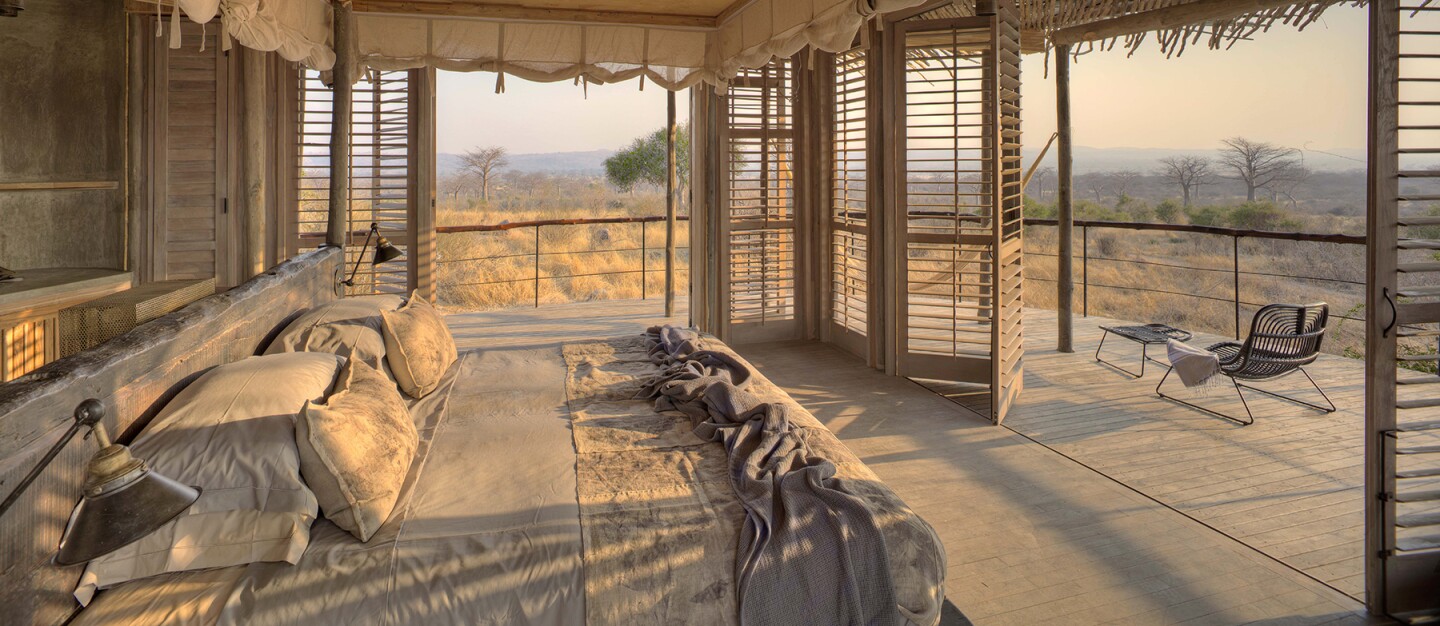
Asilia Jabali Ridge
With nearly two dozen national parks , Tanzania contains some of Africa’s largest remaining unfenced wilderness areas. It’s home to wildebeest who roam together in numbers upwards of a million and make dramatic crossings through the country’s river systems. Those who want to see the river crossings should aim for July to September, but the November-to-March green season can be even more appealing—the rains are short, there are fewer crowds, and you can catch the excitement of calf birthing season.
Serengeti-Mara Ecosystem
Tanzania’s most famous park gets the lion’s share of attention for being the site of the seasonal Great Migration of wildebeest. andBeyond Grumeti Serengeti River Lodge is well situated right in the path of a major river crossing area. A 2022 refurbishment transformed the camp into a design-driven retreat with sustainably sourced local hardwoods and colorful kitenge fabrics inspired by the region’s craft traditions. The camp, which now runs on 80 percent solar energy, offers plenty of ways to get outside of the safari vehicle, whether you’re tracking elephants on foot or visiting fishing communities on nearby Lake Victoria.
Sitting within the greater Serengeti-Mara ecosystem on its own 350,000-acre reserve, Singita Grumeti operates five lodges and camps, each with their own approach to the safari experience. There’s the hilltop Sasakwa Lodge, with its chandeliered guest rooms featuring four-poster beds, deep soaking tubs, and plunge pools that overlook the savanna. The lodge doubles as a museum, with rare artifacts from all over Africa and photography by the likes of Peter Beard. The recently renovated Sabora Tented Camp—an AFAR favorite—offers a more intimate connection with nature, thanks to outdoor showers and canvas walls that let all the noises of the bush lull you to sleep (or keep you awake).
Ruaha National Park
Ask a seasoned safari hand what their favorite wilderness area is in Tanzania, and there’s a good chance they’ll tell you it’s Ruaha National Park. Less-visited Ruaha happens to be the country’s second largest national park, and you could spend an entire trip exploring its widely varied landscapes, which range from miombo forests to sprawling wetlands. Asilia Africa’s camps offer a variety of experiences.
Located on a boulder-filled hill near the Mwagusi River, Jabali Ridge is a prime spot for sightings of lion prides and leopards, as well as elephants who dig beneath dry riverbeds in search of water. The design-driven camp itself features eight suites with a soothing palette of grays and natural woods; a massage in the airy spa comes with a soundtrack of birdsong. For those who want a hands-on conservation experience, the new Asilia Usangu Expedition Camp in the remote Usangu Wetlands offers that. It’s located in a former hunting block that the government is now researching and monitoring; Asilia stepped in as a partner to help raise tourism funds to go toward those efforts. Guests can help monitor wildlife by setting up camera traps and studying animal behavior through thermal monocular lenses—and any data they collect supports the research work happening here.
How to book
andBeyond puts together custom trips that include andBeyond Grumeti Serengeti River Lodge and other andBeyond and non-andBeyond camps. Niarra Travel can create individualized itineraries that include andBeyond, Singita, and Asilia camps.

Safari operators like Micato send guests to community-owned conservancies, which are sustainably operated and limit visitation.
Courtesy of Micato / Giuliana Provenzano
Kenya is a mosaic of contrasting landscapes and home to more than 40 distinct tribes and communities . In the arid hills to the northeast, the Laikipia Plateau is the historical land of the Samburu and Kikuyu among others; to the south, a safari in the Tsavo and Amboseli national parks means large elephant herds, self-drive safaris, and views of Mount Kilimanjaro. The iconic savannas of the Maasai Mara National Reserve are where millions of wildebeest known as the Great Migration roam, with hungry predators like lions and cheetahs in tow.
The Maasai Mara
The Mara fills with visitors in the dry period between June and October, when there’s less green foliage to hide wildlife; in July, hundreds of vehicles line the rivers to watch epic wildebeest herd crossings. But a visit outside of high season can be even more rewarding, according to Dennis Pinto, managing director of Nairobi-based Micato Safaris . “The lushness of the landscapes throughout Kenya right after the April rains, during the off-peak green season, makes for a photographer’s paradise,” he said. “Wildebeest, zebra, and multitudes of other plains game being born make April and May such a wonderfully literal time of renewal—along with the predators looking for easy prey.”
Micato frequently sends guests to the private, community-owned conservancies adjacent to the Mara reserve that are sustainably managing wildlife on their lands—and have more restricted visitation, which translates into fewer crowds, benefiting both visitors and nature. One such camp is the well-appointed, 12-tent Mahali Mzuri , a Virgin Limited Edition camp that leases land from the Masai-owned Olare Motorogi Conservancy .
Tourism on conservancies creates jobs and supports the creation of roads, schools, scholarships, hospitals, and enterprises such as basketry, according to Vincent Oluoch, the program officer who oversees tourism for the Kenya Wildlife Conservancies Association , which represents 174 conservancies across Kenya. Since the height of the pandemic, “most facilities within the conservancies have started experiencing a steady increase in visitor numbers, including domestic visitors, and in turn have started generating necessary revenues,” said Oluoch.
Some conservancies operate their own tourism businesses—often at gentler prices than international lodges. Oluoch recommends a safari in the Nashulai Maasai Conservancy , which owns and manages Oldarpoi Mara Camp , a series of midrange cottages and tents with en suite bathrooms and Maasai design touches. In the Tsavo Conservation Area, he suggests the recently renovated Kivuko Eco Camp , composed of a family house and camp accommodations run by the Taita Wildlife Conservancy.
Nairobi-based luxury outfitter Micato Safaris , owned and run by a Kenyan family, can arrange a custom-designed itinerary in Kenya that takes travelers to such private conservancies as Olare Motorogi and the Tsavo Conservation Area as well as the Maasai Mara National Reserve. Ask it to work in a couple of days in Nairobi, a vibrant city the company knows particularly well. Travelers can also book experiences directly through some conservancies, including Nashulai .
South Africa

The Tswalu Kalahari Reserve, in South Africa, is a popular—and malaria-free—spot.
Courtesy of Your Private Africa
With its winelands, grasslands, ancient forests, and windswept coasts, rural South Africa offers something for nearly everyone. Varying experiences also make it a year-round destination, with the cooler months falling between July and September.
Kruger National Park
In the country’s popular Kruger National Park, dry season falls between April and October. Green season can be a great option for those in search of better prices and fewer people. Showers are often brief, and less dust from the rain makes for beautiful light.
London-based tour operator Byron Thomas founded Niarra Travel in May 2021 to ensure that as much money travelers spend in a destination stays there—especially at smaller camps with few rooms that don’t have a lot of earning power. “Niarra’s goal is to get as much money to the destination as possible, and the best way to do this is booking directly,” said Thomas. “The second best way is to use a tour operator who has a real, vested interest in making sure they provide that service of putting together a trip that’s the right one for you as cheaply as possible for the particular destination.”
The Cape Town region
Niarra takes a 10 percent commission from companies on the ground, much lower than the industry standard, which can reach as high as 35 percent. The company also partners with responsibly run businesses with guidance from such groups as the Long Run , an organization that helps nature-based tourism businesses to drive such sustainability initiatives as community well-being and land and wildlife conservation. The 11-day Family Adventure itinerary starts with whale watching in the De Hoop Nature Reserve near Cape Town while staying at the four-bedroom Morukuru Ocean House. It continues to the malaria-free Madikwe Game Reserve, which has sunny days for much of the year. Game drives lead to lion, leopard, and elephant sightings, and guests sleep at the three-bedroom Morukuru River House .
Sabi Sand Game Reserve
For a safari that’s both ecofriendly and stylish, Nick Bay, founder of Seattle-based tour operator Your Private Africa , recommends Cheetah Plains in the Sabi Sand Game Reserve. Electric, solar-powered game drive vehicles offer not just a zero-emissions game drive but also quieter encounters with wildlife. The modern-feeling villa accommodations are a sight on their own, with their minimalistic interiors decorated with the work of contemporary African artists.
The Kalahari Desert
Bay also suggests heading north to the Kalahari Desert near the border of Botswana to experience Tswalu Kalahari Reserve , another malaria-free area set on a former cluster of overgrazed farmland that South Africa’s Oppenheimer family purchased and helped to rewild. Today it’s home to brown hyena, meerkats, desert black rhino, and large predators, including cheetah. Tswalu has an on-site researcher, Wendy Panaino, who is dedicated to studying ground pangolins , the world’s most trafficked animal, which can be found on the reserve.
Tswalu’s accommodations include the Tarkuni villa, a large home perfect for families. “The villa is especially family friendly, which is an emerging trend for safaris—bringing children six and under,” said Bay.
U.K.-based Niarra Travel offers several South African itineraries including the 11-day Cape, Wine, Wildlife, and Waterfalls, which goes to Kruger National Park and the country’s famous winelands. The 11-day Family Adventure in South Africa trip visits the malaria-free Madikwe Game Reserve for glimpses of big cats and elephants and the coastal De Hoop Nature Reserve for whale watching. U.S.-based Your Private Africa arranges customized private safaris for a wide range of travelers and budgets from start to finish, and it can organize hands-on conservation experiences at places like Tswalu.

Consider Chiawa Camp for a family-friendly safari.
Courtesy of Classic Portfolio / TCunniffe
Home to the Zambezi, Kafue, and Luangwa rivers, and sharing roaring Victoria Falls with neighboring Zimbabwe, Zambia offers a wide range of land- and water-based wildlife experiences. Safaris here are characterized by small, family-run camps that put guests especially close to nature through walking safaris, for which the country is famous (yet it’s still one of southern Africa’s less visited destinations). The popular dry season falls between July and November, but the April to June shoulder season, when the landscape turns green in the wake of the rains, is an especially good time to see Victoria Falls.
“Zambia is personally my ultimate safari experience,” said Suzanne Bayly-Coupe, managing director of Classic Portfolio , a collection of 53 independent lodges in 10 African countries. “It is one of the very few countries that has not been dominated by the bigger commercial safari companies.” According to Bayly-Coupe, Zambia’s water-based wildlife experiences rival those of the Okavango Delta in Botswana.
Lower Zambezi National Park
She recommends Chiawa Camp in Lower Zambezi National Park, which offers canoe rides along the crocodile-filled Zambezi River and has a multi-room family tent for parents with kids; about 20 miles to the east at Old Mondoro , five riverside chalets all have outdoor baths. In South Luangwa National Park, also known as valley of the leopard, add on a few nights at one of the half dozen tiny camps run by the Bushcamp Company .
South Luangwa
Niarra will soon add a trip in partnership with Green Safaris , which operates camps with light footprints, including the canvas-tented Shawa Luangwa Camp in South Luangwa. “We’ve been really impressed with the aptly named Green Safaris, which are all off-grid and all electric, including vehicles, bikes, and boats, and they’re doing a lot of good work on the ground,” Thomas said.
Lower Zambezi
According to Bay, some of the newest camps in Zambia focus on energy efficiency, resource conservation, and community capacity building. They include Lolebezi Safari Lodge in the Lower Zambezi, which is powered by solar panels, has its own water treatment plant, and was built with minimal use of concrete.
Livingstone
One of his favorite lodges in Zambia is Royal Chundu Island Lodge in Livingstone, which is easy to reach because of its location near Victoria Falls and an international airport. “Aggie Maseko, one of the owners, is a hospitality maven and makes it hard to ever leave,” said Bay. “The menu is composed of local ingredients elevated to French Relais & Châteaux standards.” Take a boat transfer to Katombora Island on the Zambezi River, where four sprawling villas have their own private river-facing decks that hover 40 feet above the ground. Go on a day tour to nearby Chobe National Park in neighboring Botswana for sightings of lions, cheetahs, wild dogs, and giraffes.
Book a tailored trip through southern Africa with these Classic Portfolio properties through such outfitters as Africa travel experts Explore Inc. or Your Private Africa. Niarra Travel offers a 13-day Victoria Falls, Okavango, and Cape Town itinerary that incorporates the Zambezi River and Falls into a three-country itinerary (Zambia, Botswana, and South Africa).


15 Best Safari Destinations in Africa for first timers
“if i have ever seen magic, it has been in africa,” – john hemingway..
Every love affair must start somewhere. For most, their love of Africa starts before they even arrive, feeling the lure and excitement whilst planning their first ever African safari. From the moment you first set foot on African soil and fully immerse yourself in your safari experience it is officially game over – you will be forever hooked, hopelessly and head-over-heels in love with the wild untamed natural beauty and enthralling magic of the African bushveld, never wanting to leave, and always yearning to return.
From unsurpassed natural wonders, astounding wildlife, and a vast diversity of contrasting landscapes, ranging from searing deserts, freshwater wetlands, dramatic coastlines, and soaring mountain peaks to thunderous waterfalls, endless stretches of open savannah plains, and lush tropical rainforests, Africa is unlike any other continent.
Declared one of the top safari and wildlife destinations in the world, Africa offers travelers some of the most astonishing safari and travel opportunities. With more luxury, privacy, and once-in-a-lifetime safari experiences than anywhere else on earth, Africa should be right at the top of your travel bucket list.
Boasting an array of astounding countries, game reserves, conservancies, and close to 300 National Parks, each offering a completely different, yet equally thrilling and rewarding, safari experience – how exactly do you decide where to go on your first safari in Africa?
Here are our 10 best safari destinations in Africa for first timers.
#1 Kruger National Park: True Home of Africa’s Big 5 | South Africa

South African tourism has a secret weapon – the Kruger National Park! Deemed one of the greatest National Parks in the world , the Kruger National Park is not only the second largest park in Africa, but South Africa’s flagship National Park. The pristine wilderness within the Kruger Park is spread across an impressive 2 million hectares of unspoiled African bushveld that stretches for 352 kilometres across the provinces of Mpumalanga and Limpopo in the far north-eastern corner of South Africa.
As the oldest, largest, and most established park, the Kruger National Park is home to the highest population density of Big 5 in South Africa. It is one of the very few places in the world where you are able to see every member of the African Big 5 in one place in their natural habitat.
The Kruger Park is believed to support the world’s largest population of white rhino (one of the mighty members of the Big 5), roughly estimated at 8,000, despite the rapid increase in poaching activity. Black rhino, on the other hand, are extremely rare and seldom seen. However, if you do happen to catch a glimpse of this remarkable animal (regardless of how brief it may be), you can count yourself incredibly lucky. In addition to being home to the largest population of white rhino, the Kruger National Park also boasts the largest wild concentration of leopards anywhere in the world.
The Kruger National Park’s superior Big 5 status has undoubtedly made it a staple destination on any safari-goer’s bucket-list, whether they’re a beginner or a seasoned traveller to Africa.
Besides the highly sought-after African Big 5, the Kruger National Park is also known for its vast diversity of wildlife and birdlife species as well as its spectacular sightings of several endangered or ‘rarely seen’ wildlife species, including the sable, roan antelope, cheetah, and African wild dog. In fact, the Kruger Park’s African wild dogs are one of the few populations of this endangered species left in the world. Its unfenced neighbour, the Sabi Sand Game Reserve, shares the park’s prolific abundance of wildlife.
Lying in the heart of the Lowveld, the Kruger Park offers an unparalleled African safari and wildlife experience that’s unlike anything you’ve experienced before. It’s no surprise that wildlife and nature lovers travel from all around the world to witness the unspoiled natural beauty and untamed wilderness of the Kruger National Park first-hand. If going on an authentic African safari in the Kruger National Park is not on your bucket-list, you better add it right away – trust us, you won’t be disappointed in the slightest!
** Check out our ‘Kruger National Park’ , ‘ Why you should go on a Kruger Park Safari’ , and ‘Best Time to go to the Kruger National Park’ blogs for absolutely everything you want, need, and absolutely must know about South Africa’s flagship National Park.
#2 The Masai Mara National Reserve: A True Out to Africa Experience | Kenya
The masai mara in kenya is nature’s magnificent masterpiece.

The magnificent ‘nature’s masterpiece’ that is the famed Masai Mara is not only one of our favourite and most beloved African safari destinations but also THE safari region that immediately springs to mind for first-time safari travellers when they are planning their first luxury African safari – and for good reason!
The Maasai Mara National Reserve and its neighboring conservancies form Kenya’s flagship conservation areas is one of the finest wildlife and safari destinations in Africa. Located in south west Kenya, the Maasai Mara National Reserve is renowned for its vast scenic expanse of gently rolling African savannah plains, measuring approximately 1510 square kilometers in area, bordering the notorious Serengeti National Park in Tanzania to the south. The Masai Mara’s sprawling wide-open plains provide a sanctuary for its abundant wildlife to freely roam the vast Maasai Mara wilderness and beyond.
Witnessing The Annual Great Wildebeest Migration – regarded as the ‘Seventh New Wonder of the World’ – also known as the Gnu Migration, Serengeti Migration and Maasai Mara Migration, up-close, in action, and first-hand is by far one of the top reasons why so many travelers tourists, globe trotters, and avid nature and wildlife enthusiast venture to Kenya’s Maasai Mara National Reserve and Tanzania’s Serengeti National Park. There are few things that can compare to witnessing and experiencing one of the greatest and grandest wildlife gatherings and spectacles in its full all-mighty force – It’s an unforgettable once-in-a-lifetime experience to say the least!

Beyond being the site of the great Annual Wildebeest Migration – one of the greatest and grandest wildlife migrations and spectacles in the world – the profound Maasai Mara National Reserve is widely known and celebrated for its amazing abundance and glorious diversity of wildlife species. Boasting the highest concentration of wild animals in the world, in fact, more than 40% of Africa’s larger mammals can be found roaming the endless Maasai Mara plains and landscapes, the renowned Maasai Mara truly is a not to be missed African safari destination for all head-over-heels nature and wildlife lovers. As an extra bonus, game viewing in the Maasai Mara is excellent all year round thanks to its varied landscapes, wide open spaces, temperate climate, and diverse population of resident game. Its champagne-colored savannahs are home to safari heavyweights like lion, leopard, elephant, buffalo, and rhino – making up the globally acclaimed African Big5 . While rhino sightings are scare, these enigmatic and endangered animals can well be spotted – if you’re super lucky – in the Mara Triangle.
Believe it or not, this is simply scratching the surface of the beyond remarkable array of amazing game and wildlife wonders and encounters you can expect to see and experience when visiting the Maasai Mara National Reserve. Trust us, the Maasai Mara has SO much more up its sleeve! Not to mention various wildlife highlights, two of which include spotting the elusive and endangered African Wild Dog, as well as the famous Maasai giraffe – the largest subspecies of giraffe which can only be found in Kenya and Tanzania – How incredible is that?
**Note: Though the Maasai Mara is one of Africa’s and the world’s foremost National Reserves and exceptional year-round wildlife and safari destinations, showcasing spectacular game viewing 365 days of the year, each Maasai Mara season and distinct time of the year offer visitors an entirely different, yet equally exciting and exhilarating, safari experience, wildlife sightings and encounters, range of attractions, and wilderness highlights to look forward to. This means you will NEVER be disappointed irrespective of when you choose / decide to visit the glorious Maasai Mara National Reserve – It will forever be one of Africa’s GREATEST safari destinations.
** Check out our ‘Top Reasons to visit the Masai Mara’ & ‘ Best Time to go to the Masai Mara’ blogs to find out everything you need to know about this magnificent African wildlife and safari destination & why you will not only fall deeply in love with its unapologetic natural beauty and everything it has to offer, but why it deserves a top spot on your global travel bucket-list.
#3 South Luangwa National Park: The unspoiled Africa | Zambia
South luangwa national park is one of the great remaining unspoiled regions of africa..

Its officially time to discover, explore, experience, and, of course, fall head-over-heels in love with everything the widely renowned and highly sought-after South Luangwa National Park has to offer – Are you ready? You better be, because it promises to be a truly unforgettable and beyond thrilling African wildlife and safari adventure – it doesn’t matter whether you’re a first-time safari-goer, an avid wildlife lover & enthusiast, or a wildlife & safari expert – South Luangwa National Park welcomes absolutely everyone with open arms, plus, you’re guaranteed to love every single second of your experience! Trust us!
South Luangwa National Park is by far the greatest safari highlight of eastern Zambia. Known by locals as simply ‘the South Park’, this impressive National Park covers an extensive area of approximately 9050 square kilometers of the Luangwa Valley floor. With its western and northwestern edge bounded by the Muchinga Escarpment, and the southern border lined with the meandering Luangwa River, there is no shortage of dramatic and fascinating topography and landscapes to explore in this stunning game-rich park. In fact, very few destinations in Africa can offer the unique combination of South Luangwa National Park’s open, grassy plains and mature, mesmerizing woodlands, crowned with the breathtaking Luangwa River.
One of South Luangwa National Park’s main allures, as well as what sets it apart from other pristine National Parks, game reserves, wilderness and conservation areas, and safari destinations in Africa, is that despite Zambia’s growing reputation as a spectacular and must-visit safari destination, South Luangwa National Park has retained its essence of true wilderness, remaining relatively untouched, and is therefore uniquely able to provide an unpredictable and exhilarating safari experience to absolutely anyone and everyone that visits this rare and remarkable wilderness gem.
South Luangwa National Park Wildlife & Birdlife

Beyond its untouched wilderness landscapes and sheer unapologetic natural beauty, Zambia’s South Luangwa National Park is known to draw wildlife enthusiasts from all corners of the globe. Accompanying its reputation for offering extremely high-quality expert guiding, South Luangwa’s concentration of wildlife is some of the densest in all of Africa.
Brimming with exuberance and fuelled by the life-giving Luangwa River – regarded as the most intact and unspoiled river system in Africa, with its tributaries and lagoons being the lifeblood of this region – South Luangwa National Park’s expansive savannah grasslands are home to over 60 species of wildlife, boasting a vast diversity of game that will undoubtedly satisfy any safari bucket list. From Africa’s top predators like the mighty majestic lion, lean and elusive leopard, agile cheetah, hungry hyenas, and the famed, yet endangered, African wild dog to big game favorites which include large herds of elephants, buffalos, rhinos, giraffes, and hippos (to mention merely a few) – you better believe South Luangwa National Park has it ALL, including the iconic African Big 5! *Here’s a quick tip – For the best Big 5 sightings and game-viewing experience, head to the Valley’s oxbow pools – you definitely won’t be disappointed!
South Luangwa’s wildlife wonders DEFINITELY don’t end there! This glorious National Park and wildlife haven is also home to a number of rare and endemic species as well as some of the most unique wildlife sightings, such as Zambia’s beloved Crawshay’s zebra herds (whose stripes are more distinct than those found further south and west), the Thornicroft’s giraffe, and Cookson’s wildebeest. Not to mention 14 different species of antelope, including the elusive bushbuck and the attractive kudu, with its spiral horns and delicate face.
Another one of South Luangwa National Park’s wildlife highlights takes place in late October, just before the start of the rain, when thousands of hippos gather in the Luangwa River’s deeper pools – It truly is a remarkable spectacle to witness as they jostle and fight for space.
Calling all avid birders – South Luangwa National Park has you covered too! In addition to its pristine wildlife, the park boasts over 400 different species of birds, including 39 birds of prey.
When Zambia’s dry season draws to a close, the Luangwa River becomes the ultimate hub of activity for hundreds of frolicking waterfowls – from the majestic yellow-billed storks and grandiose pelicans to the striking saddle-billed storks, elegant crowned cranes, and the stately goliath heron – you sure are in for quite the birdwatching treat! As if that isn’t enough, dozens of migratory species like the steppe eagle, the red-chested cuckoo, and the steppe buzzard swoop in just before the rains. On top of this, you’ll even get to spot hundreds of carmine bee-eaters nesting in the steep river banks. Talk about a utopia for twitchers! If you’re a head-over heals bird lover, South Luangwa National Park should be right at the top of your birding bucket-list!
To add an extra touch of thrill, South Luangwa National Park offers visitors both day and evening game drives, which is unique in the world of safari, this opens up a whole other nocturnal realm for your viewing excitement.
While South Luangwa National Park’s vast landscapes, abundant and diverse wildlife & birdlife species, and spectacular sighting & thrilling encounters is enough to make it one of the best safari destinations in Africa for first timers, there is so much more to discover, explore, and experience, believe it or not!
South Luangwa National Park Walking Safaris

Loudly and proudly claiming the title as ‘The Home of the Walking Safari’ – Zambia’s South Luangwa National Park is by far the top destination in Africa to go on a walking safari. Considered the birthplace of walking safaris, going on an exhilarating walking safari in the renowned South Luangwa National Park promises to exceed all your expectations – Because, as stated by the locals, a South Luangwa walking safari is not JUST a South Luangwa walking safari or a thrilling wilderness experience, adventure, or activity to be enjoyed, but rather a way of life.
If you decide / have the once-in-a-lifetime opportunity of going on a walking safari adventure on your visit to this iconic National Park you’ll have the additional privilege of traversing the untamed landscapes of South Luangwa National Park on foot while being guided by an exceptional, highly experienced, and incredibly knowledgeable wildlife guide or ranger.
So lace up those hiking boots and ditch the conventional 4×4 safari vehicle as you embark on your exhilarating and bucket-list worthy South Luangwa walking safari expedition – an experience this region pioneered and remains famous for even to this very day. As South Luangwa National Park is arguably one of the greatest wildlife-viewing destinations in Africa, you’ll cross paths with an incredible and diverse array of wildlife species, including large herds of elephants, buffalos, zebras, hippos, giraffes, an abundance of antelope, the mighty and magnificent lion – the ultimate king of the jungle – leopards, cheetahs, endangered African wild dogs, as well as Zambia’s beloved Crawshay’s zebra herds, the Thornicroft’s giraffe, and Cookson’s wildebeest. Boasting such an amazing abundance of wildlife your South Luangwa walking safari will undoubtedly be filled with the most magnificent up-close wildlife sightings and encounters.
South Luangwa’s essence of true wilderness, relatively untouched surroundings, remote location, and limited number of visitors allowed ensures a pristine walking safari experience that’s genuinely unparalleled. You’d be hard-pressed to find anything quite like it! With all that being said, South Luangwa National Park continues to wear the crown and covet the title as the ultimate destination in Africa for those who desire to traverse big-game terrain on foot and entirely immerse themselves in the natural world.
South Luangwa National Park Game Drives

While Zambia’s South Luangwa National Park is indeed ‘The Home of the Walking Safari’ and going on an exciting walking safari, where you traverse your way through the untamed natural landscapes of the park on foot and get up-close-and-personal with nature’s finest, is not only encouraged but an ABSOLUTE MUST, feel free to mix things up by going on a couple of game drives too! Because, why not?
With an expensive wilderness and countless untouched landscapes just waiting to be explored, going on an adventure-filled game drive in an open 4×4 safari vehicle is the perfect way to cover more ground as well as experience South Luangwa’s spectacular surroundings, wildlife, and birdlife from a whole new perspective – not only figuratively, but literally too! The high seats of the game drive vehicle provide unbeatable all-around views, making it easier to spot various wildlife species, especially those that enjoy being a little more elusive and harder to find, as well as capture every picture-perfect wildlife and safari moment on camera.
Going on a thrilling game drive in an open 4×4 vehicle with an experienced and knowledgeable wildlife guide by your side not only gives you the incredible opportunity to enjoy up-close wildlife and birdlife sightings and encounters like you never have before, but venture off the beaten path to game-rich areas where you’ll discover hidden wildlife gems seldom seen on foot.
If you’re eager to add a bit more excitement to your game drive experience why not venture into the South Luangwa wilderness at night and revel in every thrilling second of an exhilarating night game drive? Hearing a lion roar during a night drive or safari is without a doubt a once-in-a-lifetime wildlife experience you’ll never forget – there truly is nothing quite like it!
South Luangwa National Park River Safaris

With the twisting curves of the substantial Luangwa River flowing through this east part of Africa, it is no surprise that some of the best wildlife viewing on your Zambia and South Luangwa National Park safari will take place near and along the river itself. River Safaris and Boat Trips are an exciting and great way to be ‘wowed’ by the greatness of the iconic Luangwa River which is teeming with wildlife. River Safaris will also give you the amazing opportunity to spot and enjoy up-close sightings of some of South Luangwa’s wildlife species that are not as easily spotted by going on a game drive or walking safari. Not to mention the fact that you get to explore and experience the spectacular South Luangwa National Park from an entirely different and unique perspective.
Best Time to go to South Luangwa National Park
As most people travel to South Luangwa National Park for its sensational wildlife sightings – It does boast among the highest concentration of wildlife in all of Africa after all – the best time to visit / travel to South Luangwa National Park is during Zambia’s dry season , which takes place from July to October.
Due to the lack of rain / minimal rainfall experienced during Zambia’s dry season, most of the smaller water sources in South Luangwa National Park dry up. As a result, the famous Luangwa River becomes the primary gathering place for animals as an abundance of wildlife congregate around the river in search of the refreshment of the river’s clean water. As most, if not all, of South Luangwa National Park’s wildlife population congregate around this sole water source during the dry season, visitors to the park can expect to enjoy spectacular wildlife sightings and up-close encounters.
In addition to remarkable wildlife sightings and pristine game viewing, predator activity significantly increases during this time. As South Luangwa National Park is home to all of Africa’s top predators, including lions, leopards, cheetah, hyenas, and African wild dogs, visitors can expect to see these predators in action as they wait for the perfect moment to strike. Due to the abundance of wildlife that congregate around the Luangwa River it is essentially easy pickings / open season for predators.
Pros of visiting South Luangwa National Park during its dry season (April – October):
- The thick bush thins out and wildlife is easier to spot.
- Animals will gather around the river.
- Best time to spot the more elusive species on your list.
- Expect bright days and lots of sunshine.
- Less chances for malaria, since there are fewer mosquitos.
#4 Chobe National Park: Africa’s Elephant Paradise | Botswana

Are you eager to experience an authentic African safari adventure that will quite literally stampede its way into your heart and leave echoes of trumpeting giants lingering in your wildlife-loving soul? Then look no further than Botswana’s breathtaking Chobe National Park, where elephants reign supreme, and the powerful pulse of the great Chobe River breathes life into the endless stretch of unspoiled wilderness that makes up one of Botswana’s most glorious wildlife and safari gems. Diverse and dramatic, Botswana’s Chobe National Park is a force to be reckoned with – in the best possible way of course! Africa’s glorious elephant paradise – Chobe National Park – is definitely one of the top safari destinations in Africa for first time safari goers – no doubt about it! So, best you get your safari game-faces on first timers!
Nicknamed ‘The Land of the Gentle Giants’ , Chobe National Park boasts an impressive and exceptional population of African elephants , which is said to exceed 120,000 – Undoubtedly making it one of the top places, if not THE top place, on the planet to witness these remarkable gentle giants of the African bushveld in their natural environment. It’s safe to say that Botswana’s Chobe National Park’s elephants truly are celebrities in their own right with avid travelers, wildlife enthusiasts, and eager tourists flocking from all across the globe for the opportunity to witness these mighty and magnificent mammals and largest member of the African Big 5 in action and to experience breathless face-to-face encounters with these never-ending herds of the largest living land animal on earth.
**Tip: If you really, REALLY want to see as many wild African elephants as you possibly can on your Chobe safari trip, it’s hard to think of a better destination than the iconic Chobe River at the end of Botswana’s enervating dry season . Botswana’s virtually rainless winter begins in May and by late August the rest of the park has practically dried out completely; The bone-dry surroundings, due to the extreme lack of rain, means that ponds, streams, puddles, and smaller water sources around the park dry up. This forces animals to essentially congregate around the remaining large water source / sources – AKA the Chobe River – resulting in enormous concentrations of wildlife, including Chobe’s huge herds of elephants, on the riverfront – It truly is a sensational sight that has to be seen to be believed. That’s not all! During the months of September and October , thousands of elephants arrive cheek-by-jowl with enormous buffalo herds, trailed by prides of sleek lions. Game drives and boat cruises take you right into the centre of the action, providing you with seriously spectacular up-close sightings and encounters that are bound to leave you gob-smacked and utterly amazed.
Occupying a great woodland wilderness between the eponymous Chobe River and the fringes of the Okavango Delta in Botswana, Chobe National Park is one of Africa’s heavyweight reserves and a sanctuary for some of the continent’s healthiest populations of elephant, buffalo, lion, giraffe, zebra, leopard, jackals, and the widely beloved and endangered African wild dog, to mention merely a few. Chobe is also one of the best places in Africa to witness the most dramatic predator action – its Savuti region is where lions regularly clash with hyenas and powerful prides famously take down Africa’s biggest game like buffalo, giraffe and even elephants.
** Check out our ‘Chobe National Park: Botswana’s Elephant Paradise’ blog for everything you need to know about Africa’s elephant paradise & what it has to offer as well as our ‘ Top 5 Chobe National Park Safari Experiences ’ blog for some of the best and most exhilarating safari adventures and exciting things to do, see, and experience when visiting one of Botswana’s most iconic wildlife and safari destinations.
However, if wildlife viewing is not at the top of your African safari bucket-list, but rather its abundant, diverse, and extraordinary birdlife – Botswana’s Chobe National Park is perfect for you too! If you’re an avid bird lover looking the explore and experience a different side of Chobe National Park and what it has to offer, you’ll absolutely love the green season / wet summer season which takes place between November and April. During this period, the summer rains transform the savannah into a luscious green paradise, making it the perfect time for bird watching as migrant birds are present and in breeding. If you’re an avid bird enthusiast, be sure to plan your trip to Chobe National Park around December to March.
With over 500 species of birds recorded, Chobe National Park is any head-over-heels bird lover’s paradise. Boasting a vast diversity of beautiful and captivating bird species, be sure to keep your eyes peeled for an enchanting array of avian marvels, from giant kingfishers and African fish eagles to the sleek African skimmer, melodious collared palm, dazzling lilac-breasted rollers, and giant eagle owls. And let’s not forget the granddaddy of them all, the southern ground hornbill. Be sure to catch a glimpse of these winged wonders in their natural habitat. Other birds to look out for are some of the world’s largest flying birds, the kori bustard (weighing up to 18kg!) and the secretary bird.
Chobe’s vast diversity of resident birds are exciting enough to captivate any birding enthusiast’s eye, HOWEVER , when the hordes of summer migrants arrive, it’s enough to make anyone, avid birder or not, reach for a pair of binoculars.
#5 The Serengeti National Park: Africa’s wildlife wonder | Tanzania

If you’re looking for the classic safari as seen in the cinematic epics, there’s no better place to visit and fall head-over-heels in love with Africa than the renowned Serengeti National Park. The Serengeti National Park is arguably one of the most extraordinary National Parks in Africa, as well as one of the most celebrated wilderness areas in the world. It is also regarded as one of the most famous protected wilderness areas in all of Africa as well as Tanzania’s flagship conservation area, boasting one of the world’s greatest concentrations of wildlife species. It’s no surprise people travel from all over the world to experience all the wilderness magic, wildlife spectacles, and wild unapologetic beauty the Serengeti National Park has to offer. Whether you’re a first-time safari goer or a seasoned safari expert, the Serengeti National Park should undoubtedly be on every avid traveler, nature lover, and wildlife enthusiast’s African safari travel bucket list.
While the Serengeti is known for its magnificent and diverse wildlife as well as boasts some of the best year-round game viewing in Africa, including the iconic African Big 5 and various rare and endangered species, it is most renowned for being the site of the Annual Great Wildebeest Migration – One may call it the Serengeti National Park’s official claim to wilderness fame!

A wilderness spectacle like no other, the Serengeti Great Migration sees millions of wildebeest, zebra, and gazelle traversing the open plains of the park in search of fresh grass from seasonal rains. One of the greatest spectacles in the natural world, the migration follows the seasonal rains, spending the wet season in the south eastern plains of Tanzania and the dry season in the woodlands of north western Kenya. Witnessing this spectacular wildlife phenomenon truly is a once-in-a-lifetime experience.
However, as millions of wildebeest and zebra traverse these lands in search of sustenance, you better believe that Africa’s wild predators, such as lions, leopards, and hyenas, are not far behind and constantly on the hunt. The sheer volume of wildebeest and other wildlife crossing the river to make their way from the Serengeti National Park to the Maasai Mara in Kenya means facing approximately 3,000 crocodiles, patiently waiting for a kill, as well as the famous Serengeti lion population – by far the largest in Africa – right and ready to pounce whenever the opportunity strikes. These dramatic scenes of huge herds on the move, crossing rivers and vast plains, pursued by predators looking for their next kill, truly are the stuff nature documentaries are made of. This undoubtedly makes it the prime time to not only witness exceptional sightings of Africa’s most famous predators but see them in action.
Derived from the Maasai word “siringiti”, which means “endless plains,” this park rests on raised platens between the Ngorongoro highlands and the Tanzania/Kenya border, extending almost to Lake Victoria, making up 50% of the wider Serengeti–Mara ecosystem. Here, a diversity of grassy plains, Savanna and vegetation stretches endlessly, only to be broken up by acacias, wooded hills, and mountainous backdrops. The Serengeti is said to boast one of the oldest and most distinct ecosystems on earth, featuring a varied, vibrant, and thriving vegetation that has remained largely untouched for millions of years.
Did you know that The Serengeti National Park is made up of the Southern Serengeti, Western Serengeti, Central Serengeti, and the Northern Serengeti, each of which is characterised by its own unique landscape and vegetation?
General Guideline: When to see the Great Wildebeest Migration in the Serengeti National Park
(These guidelines are subject to change as per seasonal rainfall)
**Important Note: The above guidelines are approximate dates and places. The Wildebeest Migration is a year-round, circular journey and the river crossings cannot be predicted, although they generally occur between May and September.
As this awe-inspiring event is one of the last mass terrestrial animal movements left on the planet, experiencing the wild wonder that is the annual Serengeti National Park Great Migration is a once-in-a-lifetime experience that should be at the very top of every avid traveler and eager nature and wildlife enthusiast’s bucket list.
Check out our ‘Serengeti National Park’ and ‘Best Time to go to the Serengeti’ blogs for everything you need to know about this remarkable and thrilling African safari destination
#6 Akagera National Park: Central Africa’s Largest Protected Wetland | Rwanda
Akagera National Park is renowned for being the ONLY Big 5 safari destination in Rwanda. This makes Akagera National Park a true gem in Rwanda’s wildlife crown as it holds a special place as the country’s exclusive / one & only destination for Big 5 safari experiences and adventures.
Regarded as Central Africa’s largest protected wetland, Akagera National Park, located in eastern Rwanda, is a true conservation success story and definitely well worth a visit for first-time safari goers who are eager to see primates as part of their first African safari journey / experience. Akagera National Park’s amazing diversity, pertaining to both its wildlife species and terrain (which ranges from lakes, savannah, riverine forests, woodlands, and grassland plains), makes it a great safari destination in Africa for first timers as they will have the wonderful opportunity to experience and enjoy such an abundant variation of sensational wildlife, including sightings and encounters, all in one place.
One of the many things that makes Akagera so remarkable is despite the fact that it was once completely decimated by poachers and nearly lost forever due to human encroachment – well and truly being at the verge of vanishing entirely at one point in time – completely seizing to exist – this National Park in the heart of Rwanda experienced one of the most miraculous revivals ever as the last haven for savannah-adapted wildlife species in the area to the extent where Akagera National Park is now considered to be a true safari mecca! This massive & miraculous turn-around is largely and primarily owed to the beyond incredible African Parks taking Akagera National Park under its guardianship since the year 2010. Now that’s a truly triumphant return!
At the heart of Central Africa, you’ll discover the vastness of its largest protected wetland – a story of redemption and resilience that warms the heart.
African Parks, together with partners Rwanda Development Board and support from the Howard G Buffett Foundation, have transformed what was once teetering on the brink of disappearance into a Big 5 safari paradise, beckoning travelers, tourists, wildlife enthusiasts, and adventurers from all corners of the world. Brace yourself for thrilling game drives that bring you face-to-face with magnificent Maasai giraffes and captivating Burchell’s zebras. But that’s not all – as you explore the lakeside, prepare to be amazed by the graceful presence of hippos, the ancient majesty of crocodiles, and the intriguing elegance of shoebills among a vibrant tapestry of waterbirds.
Go right ahead, step into Akagera National Park, a place where the magic of second chances comes to life. Here, you’ll find yourself immersed in unparalleled wildlife encounters & spectacular Big 5 sightings amidst the magnificent untouched wilderness of Rwanda itself. Let the spirit of Akagera awaken your sense of wonder and curiosity as you forge unforgettable connections with nature and the magic of the African bushveld.
- When is The Best Time to Visit Akagera National Park: You can expect a great trip if you visit between June to September and mid-December to mid-February.
#7 Lower Zambezi National Park | Zambia
A beautiful, diverse, and vibrant landlocked country in southern Africa, Zambia has emerged as one of the most premier wildlife and safari destinations in Africa for avid travelers, globe-trotting tourists, and head-over-heals local and international wildlife and safari enthusiasts alike. The fact that Zambia boasts such an impeccable array of National Parks and game reserves – each one as incredible & exhilarating as the next – means you’ll never be disappointed! This makes it a great safari destination in Africa for first-time safari-goers.
Speaking of Zambia’s impeccable National Parks – the amazing Lower Zambezi National Park should be right at the top of your Zambia safari bucket-list! Situated along the lower section of the renowned Zambezi River, the remarkable Lower Zambezi National Park is one of Zambia’s premier National Parks & top wildlife & safari destinations among avid wildlife lovers and eager safari-goers from around the world – For good reason too!
One of the primary things that sets the park apart from other ‘bigger’ & more ‘renowned’ National Parks is the fact that despite Zambia’s growing reputation as one of Africa’s top safari destinations, its landscapes has remained relatively untouched and unspoiled.
That’s not all! The Lower Zambezi National Park’s somewhat remote & off-the-beaten-path location is by far one of its main draws. It has also helped the National Park retain its essence of true wilderness – providing an unpredictable and exhilarating safari experience to anyone that visits.
Encompassing vast and varied terrains, including forests, grasslands, and floodplains, the Lower Zambezi National Park supports a vast diversity of birdlife and wildlife. Home to plenty of big game, including elephants, lions, buffaloes, hippos, and Nile crocodiles, as well as several other wildlife species – the Lower Zambezi National Park will definitely not disappoint!
Wildlife viewing is best along the rivers, which border the park on three sides. The Zambezi River is the region’s main source of water as well as its top attraction, both for game and visitors alike.
When visiting the Lower Zambezi National Park you can opt to go on an exciting safari / game drive and explore all the wonders the park has to offer, not to mention encounter some sensational wildlife sightings. If you’re looking for something more immersive, you can enjoy an adventure-filled nature walk / walking safari led by an experienced guide. However, the most popular / highly requested (and definitely the most thrilling) safari experiences is going on a adventure-filled canoe safari along the Zambezi River – In fact, a canoe safari is by far one of the Lower Zambezi National Park’s top safari highlights! It is both peaceful and undeniably thrilling paddling and drifting past the twitching ears and snorts of submerged hippos and knobbly Nile crocodiles basking on the riverbanks. The guides are utterly attuned to the animals’ habits and behaviour and are completely at ease predicting their next moves – So you can rest assured you are in safe hands!
#8 Sabi Sands Nature Reserve: Luxury Living in Leopard-Rich Lands | South Africa

The spectacular Sabi Sand Game Reserve is without a doubt one of the most sensational must-visit safari destinations and premier private game reserves in South Africa, as well as one of the oldest and most beloved wildernesses in the country. Considered the birthplace of sustainable wildlife tourism in Southern Africa, the notorious Sabi Sand Game Reserve boasts 65,000 hectares of vast untamed wilderness and shares a 50km/30mi unfenced border with the world-renowned Kruger National Park (South Africa’s flagship National Park). This allows wildlife to roam freely between the reserves, ensuring an unforgettable and unmatched African safari and wildlife experience.
Boasting one of the richest game populations in the country, Sabi Sand Game Reserve is home to some of the most diverse and unique wildlife species in Africa. While Sabi Sands is regarded as one of the best places in Africa to view the renowned African Big 5 in its natural habitat, it is most famous for its spectacular leopard sightings, boasting the highest leopard concentration in South Africa – the most elusive member of the Big 5. However, in this revered Greater Kruger National Park reserve, you’ll find that leopards are not all that elusive at all – in fact, they are seemingly everywhere! These famously elusive creatures are so accustomed to cars that they are often seen in plain view and have even been known to hunt in the presence of a safari vehicle.

Besides its world-renowned leopard sightings as well as enjoying glorious up-close encounters of the iconic African Big 5, visitors can look forward to seeing a vast diversity of other game when exploring the varied landscapes of the Sabi Sands. Other popular wildlife species that freely roam the Sabi Sands’ terrain include, giraffe, hippos, zebras, wildebeest, cheetah, aardvark, African wild cats, hyenas, jackals, Cape porcupines, pangolins, and a wide array of antelope and plains game, to mention merely a few. In addition, several endangered species have slowly been reintroduced into the area over the last few decades, one of the most notable being the beloved African wild dog . The MalaMala, a game reserve located within the Sabi Sand Game Reserve, is especially known and celebrated for its remarkable African wild dog population as well as their various incredible conservation initiatives and efforts geared at keeping these extraordinary endangered species from going extinct. The vast, varied, and vibrant vegetation of the Sabi Sands Reserve provides a pristine wilderness haven for an abundance of magnificent wildlife species – big and small – especially white rhino, reedbuck, cheetah, eland, sable antelope, nyala, and hyena.

Bird lovers, this is for you! Beyond its top safari status and wildly diverse and abundant wildlife species, the Sabi Sand Game Reserve has become one of the most highly sought-after birding destination for passionate bird watchers from around the world. Boasting over 300 bird species, this premium birding hotspot is home to several curiously named species, some of which include the widow finch, buntings, cisticolas, mannikins, wydahs, and eremomelas. Other notable bird species avid birders should look out for when visiting the Sabi Sands include the Red-billed oxpecker, the Comb duck, and the purple heron. In addition, The Southern Ground Hornbill Project has also been doing some very successful conservation work here – Which is definitely something every bird lover can look forward to! By far the best way to experience the vast and vibrant birdlife of the Sabi Sands Reserve is by going on an exciting guided bushwalk or a walking or driving safari through the private reserve.
One of the great things about the iconic Sabi Sand Game Reserve is the fact that it is regarded as one of the top year-round wildlife and safari destinations in Africa, The Sabi Sand Game Reserve boasts two distinct seasons, the dry winter season (May – September) and the wet summer season (October – April), with each season offering travelers, adventurers, and nature and wildlife enthusiasts something unique and exciting to look forward to.
From one of the handful of exclusive luxury lodges in the reserve, guests can enjoy unparalleled exploration, tailored service and unmistakable silence and reverence of the African wild.
What’s more, together with the highest leopard concentration in South Africa, Sabi Sand’s Big 5 territory boasts many award-winning luxury lodges and excellent game viewing.
** Check out our ‘ Sabi Sand Game Reserve’ blog for everything you need to know about this extraordinary wilderness regions.
#9 Hwange National Park | Zimbabwe

Time to venture to Zimbabwe! Home to a number of game-rich wilderness areas, northern Zimbabwe is regarded as the top region for wildlife safaris. Zimbabwe’s Hwange National Park is arguably one of Africa’s very best Big 5 safari destinations and National Parks. Covering a vast expanse of around 5,655 square miles/14,650 square kilometers, it is both the largest and the oldest National Park in the country, not to mention one of Zimbabwe’s most sought-after safari destinations among avid wildlife enthusiasts from around the world.
Home to over 100 species of mammals, including the iconic African Big 5, Hwange National Park is considered to have the biggest diversity of mammals out of the world’s National Parks – Ensuring truly unparalleled game viewing and unbelievable once-in-a-lifetime wildlife sightings and encounters! If that’s not impressive enough, in addition to its extraordinary game viewing and exceptional diversity of wildlife species, this world-renowned National Park has yet another claim to wildlife fame – its profound population of elephants which is said to exceed over 50 000. The Hwange elephant population is thought to be one of the largest in both Africa and the world.
That’s not all! This magnificent wilderness and wildlife gem also boasts one of the largest populations of endangered African wild dogs in the continent. Furthermore, travelers and wildlife lovers can look forward to spectacular sightings of various other wildlife species, including masses of hippos, crocodiles, zebra, giraffe, impala, cheetah, several rare antelope species such as roan and sable antelope (a Hwange special), plenty of plains game, African wildcats, serval, honey badgers, civet, and spotted hyaenas, to mention merely a few. Not to mention hyenas, bat-eared foxes, and springhares, all of which are known to inhabit the Kalahari sands of the region. With such a vast and impeccable diversity of wildlife sightings and encounters to look forward to, Zimbabwe’s Hwange National Park truly is any avid wildlife enthusiast’s dream safari destination and one that is not to be missed.
To top it off, Hwange National Park offers eager travelers, tourists, globe-trotting adventurers, families, and wildlife lovers various exciting and memorable ways to explore and enjoy their bucket-list worthy Big 5 safari adventure – from exhilarating 4×4 open-vehicle game drives, immersive walking safaris, horseback rides, and helicopter flights – there is something for absolutely everyone!
- When is The Best Time to Visit Hwange National Park: The best time for Big 5 safaris is between July to October.
#10 Laikipia National Park & Conservancy | Kenya
Once dominated by livestock ranches in the colonial era, the immense Laikipia Plateau has since been transformed into one of East Africa’s finest, highly acclaimed, and most exclusive National Parks and wildlife & safari destinations in Africa. Overseen by the non-profit Laikipia Wildlife Foundation, the several dozen private and community-owned sanctuaries of the vast Laikipia Plateau now function as Kenya’s second largest wildlife sanctuary and conservancy, encompassing a vast 9,500km2 in total.
In addition to its exclusivity, top-tier African safari standing, remarkable conservation status and size, Laikipia is home to a wildly abundant and incredibly diverse wildlife population – it is unmatched, to say the least! As the plateau is transitional to the central highlands and northern deserts, it provides an extremely important stronghold for wildlife rarities such as the endangered African wild dog, Grevy’s zebra, and the black rhino – giving avid and first time safari goers the incredible opportunity to witness these remarkable and rare wildlife species first-hand. The Laikipia National Park and plateau also supports several dry-country wildlife species, such as the greater and lesser kudu, gerenuk, reticulated giraffe, and Beisa oryx, along with substantial populations of Africa’s iconic and highly sought-after big cat predators – leopards, lions, and cheetahs!
There are also a number of extraordinary sanctuaries and conservancies located within Laikipia and Laikipia Plateau. Ol Pejeta Conservancy , a Big 5 conservancy found in the foothills of Mount Kenya, is one of Laikipia Plateau’s prime / top conservancies and sanctuaries. Ol Pejeta Conservancy is widely renowned for its exceptional conservation initiatives. Its highlights include the largest black rhino sanctuary in East Africa; a population of southern white rhino; a refuge for the last two northern white rhinos left in the world (Ol Pejeta Conservancy is where the last male northern white rhino, Sudan, died in 2018; the last females of the sub-species still live at Ol Pejeta and are protected around the clock). The Sweetwaters Chimpanzee Sanctuary can also be found in the Laikipia Conservancy. The Sweetwaters Chimpanzee Sanctuary houses orphaned and abandoned chimpanzees as well as chimpanzees rescued from the black market. Lewa and Borana Wildlife Conservancies are two more conservancies situated in and among the rolling hills of Laikipia, within the foothills of Mt Kenya. These conservancies are fully committed to conservation and innovative wildlife protection programs which include anti-poaching teams, conservation of specific endangered species, as well as community development and support.
Visiting the iconic Laikipia National Park, Laikipia Plateau and its profound and beyond remarkable array of sanctuaries and conservancies, especially Ol Pejeta Conservancy, is not only one of the top (not to mention most remarkable and rewarding) things to do / experience in Kenya and all of Africa, but a great destination, perhaps even one of the greatest, to learn more / as much as you possibly can about the relationship that exists between people / humans and wildlife. Not to mention learn about the vast and various challenges, complexities, extreme difficulties, and constant, deeply-rooted uphill battles the conservation industry has to face / encounter as they fight the good (yet, incredibly tough) fight in order to ensure the preservation of our beloved wildlife species.
**BONUS: Wildlife lovers & visitors will also have the opportunity to enjoy a range of exciting wildlife and safari experiences and adventures such as lion tracking, horseback riding, exhilarating bush walks / walking safaris, and thrilling night drives and safaris / game drives – How lucky are you? Be sure to soak up every glorious second of these once-in-a-lifetime African safari experiences! You can even spend time with the Maasai people who guide you across the plains, teaching you all about the deep connection they have / share with this land and how they have lived off it for millennia – it is a truly immersive, enriching, eye-opening, and rewarding experience everyone that travels to Africa should add to their bucket-list!
#11 Okavango Delta: One of the Seven Natural Wonders of Africa

Deemed one of the last remaining pure wildernesses in the world, The Okavango Delta is not only Botswana’s most iconic wildlife haven, but one of Africa, and the world’s, most extraordinary wilderness regions and largest inland deltas on the planet. This vast and virtually untouched freshwater wetland area is a declared UNESCO World Heritage Site as well as one of the Seven Natural Wonders of Africa.
What makes the Okavango Delta particularly unique is that unlike nearly all deltas around the world, which are generally places where rivers and other bodies of water empty into an ocean or sea, the Okavango Delta is an inimitable and ever-changing inland delta. Approximately 2.5 trillion gallons of water carried by the Okavango River, and other permanent and ephemeral rivers, empty into a dusty plain hundreds of miles from the nearest coast. The delta is therefore responsible for transforming an otherwise bone-dry landscape into a lush, green, bustling, and thriving hub of activity. Pretty extraordinary isn’t it?
As a Wetland of International Importance (RAMSAR site), the Okavango Delta’s unique and wildly complex ecosystems nurture a vast diversity of superb wildlife and birdlife species. In fact, while this virtually untouched freshwater wetland that is the magnificent Okavango Delta lies at the heart of Botswana’s arid Kalahari Desert, it supports a prolific abundance of various wildlife within a setting of dazzling natural beauty. In fact, the Delta is widely known as one of the most wildlife-rich areas in Africa.

A myriad of wildlife species can be found within the delta, some of which include: African Bush Elephant, African Buffalo, Hippopotamus, Topi, Blue Wildebeest, Giraffe, Nile crocodile, Lion, Cheetah, Leopard, Brown Hyena, Spotted Hyena, Black Rhinoceros, White Rhinoceros, Plains Zebra, Warthog, and Chacma Baboons (to mention merely a few). That’s not all! You will also encounter several unusual antelope species like puku, sitatunga and red lechwe (many of which you may never have encountered before) – Making the Okavango Delta any wildlife lover’s dream come true! The Okavango Delta is also famous for being a stronghold for predators. This means wildlife enthusiasts are in for quite a thrilling wildlife experience and African wilderness adventure when visiting the Okavango Delta.
Each year, large numbers of wildlife retreat from the dry interior towards the Delta’s floods. It is estimated that around 260,000 mammals congregate around the delta during this time. As the Okavango Delta is affected by seasonal flooding with flood water from Angola reaching the Delta between March and June, peaking in July, coinciding with Botswana’s dry season, it results in a great migration of plains game from the dry hinterland. In addition, enormous herds of buffalo, elephant, zebra, and wildebeest (to mention merely a few) flock to these water sources, creating a prime hunting ground for predators. Not to mention sensational wildlife sightings and encounters.
In the Dry Season (between May and October) when the flood waters have made their way down and the Delta has doubled in size, that’s when the true spectacle begins. It is also the time when many fall head-over-heels in-love with not only the Okavango Delta, but Africa as a whole.
**Okavango Delta BONUS: The Okavango Delta is by far the best destination in Africa to go on a thrilling water-based safari – AKA a traditional Mokoro Safari!
**What is a Mokoro: A Mokoro is a traditional dug-out canoe which is used to traverse and explore the waterways and channels of the Okavango Delta. Enjoying a mokoro journey through the Delta is not only a unique bucket-list worthy safari experience, but gives you the opportunity to see and explore hidden gems, secret spots, and rare sightings you might miss on a traditional game drive.
Nowhere else in the world can you experience the sublime serenity of being poled along in a traditional dugout canoe as birds like jacanas and herons walk among the lilies, elephants peacefully feed on the surrounding soft grass, and sitatunga antelope retreat shyly into the reeds. Trading in the 4×4 game-vehicle for an authentic and exciting Mokoro safari opens up the world’s most unspoiled wetland of Botswana’s Okavango Delta to be fully explored, discovered, and experienced from a whole new perspective. The Delta truly becomes a game viewing paradise!
Check out our ‘ 5 Reasons to Visit the Okavango Delta’ and ‘ Best Time to go to the Okavango Delta’ blogs for everything you need to know about this extraordinary wilderness regions, and largest inland deltas in the world.
Why the Okavango Delta is a great destination for those going on their first safari in Africa:
- The Okavango Delta offers a truly authentic African safari and wildlife experience – perfect for first time safari goers to Africa
- The Okavango Delta is one of the premier safari destinations and is one of the last true wilderness areas left in Africa
- The number of visitors is very tightly controlled, you can experience the beauty of the area as it has been for hundreds of years
- The wildlife has been undisturbed for generations, resulting in spectacular game viewing & thrilling wildlife sightings and encounters
#12 Madikwe Game Reserve | South Africa

Deemed as somewhat of an African safari hidden gem, the expansive Madikwe Game Reserve is the fifth largest game reserve in the country and lies in South Africa’s North West Province, bordering Botswana and the Kalahari Desert. With diverse landscapes, including bushveld, grasslands, and rocky slopes, the area is a pristine location for Big 5 safaris. Boasting an extensive and gloriously diverse wildlife population, Madikwe Game Reserve is not only home to all the members of Africa’s highly sought-after Big 5, with encounters almost guaranteed on any visit, but also gives wildlife enthusiasts the incredible opportunity to witness several endangered animals, especially African wild dogs, as well as enjoy exceptional sightings of various wildlife species, including the elusive cheetah, brown hyena, aardwolf, elephants, giraffes, hippos, lions, and zebras (to mention merely a few), all of which are a common sight within the reserve. In total, the reserve is said to shelter approximately 10,000 mammals and 350 bird species.
In addition to its wild, untamed, and unapologetic natural beauty, and abundance of wildlife species, Madikwe Game Reserve is regarded as one of Africa’s most sought-after wildlife and Big 5 safari destinations as well as one of the continents best conservation areas.
Beyond preserving wildlife, one of the many things that sets this remarkable game reserve apart is its unwavering dedication to community upliftment. Madikwe is not only a massive champion of social investment and responsible tourism in the region, but plays a major role in economically uplifting the various communities within the area.
Why Madikwe Game Reserve is a great destination for those going on their first safari in Africa:
- It offers world-class game viewing
- Madikwe Reserve is malaria free
- The reserve is home to the Big 5 (lion, leopard, elephant, rhino and buffalo) as well as excellent cheetah and wild dog sightings
- Madikwe is highly exclusive. The general public is not permitted into the reserve, only people staying at the lodges can go on safari in the Madikwe Reserve
- The perfect destination to find some quiet and enjoy the beauty of the African bush
- This beautiful reserve is just a four hour drive from Johannesburg Airport
When is The Best Time to Visit Madikwe Game Reserve: Plan your visit around May to September for the best wildlife viewing.
#13 Timbavati Game Reserve | South Africa

A piece of unspoiled Africa, the renowned Timbavati Game Reserve forms part of the Greater Kruger National Park and offers wildlife enthusiasts from all around the world some of the best game viewing and Big 5 encounters in all of Africa.
Located in the heart of the Lowveld region of South Africa, Timbavati Game Reserve shares an unfenced border with the Kruger National Park – this allows wildlife to migrate and roam freely between the reserves, ensuring high-quality, exciting, and exceptional sightings and an unbelievable and unforgettable African safari and wildlife experience in every way possible.
When it comes to birdlife & wildlife sightings & encounters – Timbavati Game Reserve is truly unmatched. Home to the Timbavati ‘Magnificent 7’ , which includes the lion, leopard (Timbavati Reserve boasts a large leopard population), elephant, rhino, African wild dog, buffalo, and cheetah, Timbavati Game Reserve has loudly and proudly established itself as one of the top and most highly sought-after African wildlife and Big 5 safari destinations in Africa and South Africa for local and global wildlife lovers alike.
On average, Timbavati is home to approximately 40 species of mammals, including various endangered animals, such as the Honey Badger, Bat, Oxpecker, and the Ground Hornbill. An abundance of plains game like kudu, giraffe, wildebeest, and waterbuck (to mention merely a few) can frequently be spotted, as well as several fascinating nocturnal species such as Porcupine, Serval, Genet, and Civet, amongst many others, when embarking on an exciting Timbavati Game Reserve night drive safari adventure.
Where not done yet – oh no! In fact you’re not going to want to miss this next part!

Undoubtedly one of Timbavati’s top wildlife highlights is its white lions! Timbavati Game Reserve is home to one of nature’s most magnificent wildlife species, the remarkable, rare, and highly endangered white lion. White lions are indigenous to the Timbavati Game Reserve , with the earliest records of white lion sightings in this region dating back to 1938. Born with a crème-coloured – snow white coat, and ice blue eyes, the sheer beauty of this extraordinary animal is beyond captivating.
**Interesting Fact: While the magnificent white lion has been the target of countless trophy hunters and poachers over the last few decades, several anti-poaching organisations and wildlife protection initiatives have made it their mission to preserve and protect this beloved species. In fact, The Global White Lion Protection Trust (GWLPT) reintroduced white lions into their natural habitat in 2009, and they have been breeding successfully ever since.
Here’s another interesting fact – Due to the continuous hunting and poaching efforts of these rare and remarkable white lions, as well as their endangered status and small numbers, white lion offspring have been known to be born by ‘normal coloured’ lion parents. This phenomenon is known as Leucism. This has resulted in a ‘new’ very pale species of lion (as they carry the pure white lion gene) which can frequently be spotted roaming the vast Timbavati Game Reserve.
- When is The Best Time to Visit Timbavati Game Reserve: We recommend you visit during the dry season from May to September.
**BONUS: Check out our ‘Timbavati Game Reserve’ blog for everything you need to know about this incredible South African game reserve.
#14 Hluhluwe iMfolozi-Park: The Gateway to Natal’s wild Wonders | South Africa
The village of Hluhluwe (roughly pronounced shloo-shloo-wee) lies within the heart of Zululand on South Africa’s east coast. Surrounded by bright sugarcane fields and pineapple plantations, the village is located near the banks of the Hluhluwe River and acts as the gateway to Hluhluwe-iMfolozi Park. Covering approximately 96,000 hectares of forested, mountainous, and rippling savannah landscapes, Hluhluwe-iMfolozi Park is renowned for being one of the top Big 5 safari destinations in Africa.
This National Park in the heart of Zululand not only boasts the largest population of white rhino on the globe, it is home to an incredible and diverse variety of birdlife and wildlife species. In addition to over 350 bird species, visitors to Hluhluwe-iMfolozi Park can expect excellent and exciting sightings of the highly acclaimed African Big 5, wildebeest, cheetah, hyena, and giraffe (to mention merely a few), as well as carefree crocodiles, hefty hippos, and an array of fish which can be found in the park’s lakes deeper inland.
Game aside, Hluhluwe-iMfolozi Park is also renowned for its remarkable conservation efforts and initiatives. The Emdoneni Cat Rehabilitation Project for example feeds and cares for threatened African cats, creating the perfect opportunity for visitors to interact with cheetah, serval, caracal, and various African wildcats.
While many know Hluhluwe to be a Big 5 reserve, few people are aware that Hluhluwe is, in fact, a small town located in the north of Durban in central Kwa-Zulu Natal. Its prime location acts as a gateway to several great areas and destinations, such as Lake St. Lucia, iSimangaliso Wetland Park, various private game reserves, and of course Hluhluwe-iMfolozi Park.
The unspoiled beaches of St Lucia, Cape Vidal, and Sodwana Bay are all easily accessed from Hluhluwe. The surf is popular for diving, snorkelling, canoeing, surfing, body boarding, and fishing. Dolphins are frequent visitors to the bays and can be seen frolicking in the waves while the humpback whales make their slow, annual migration to the warm Mozambique waters. It’s all this and so much more that makes the impeccable Hluhluwe a destination that should be at the top of every traveller and wildlife enthusiast’s bucket-list.
- When is The Best Time to Visit Hluhluwe-iMfolozi Park: May to September is a great time to visit Hluhluwe iMfolozi-Park.
#15 Moremi Game Reserve | Botswana

Botswana’s Moremi Game Reserve, also known as the Moremi Wildlife Reserve, is situated in one of the largest inland deltas and premier wilderness areas in the world, the vast and virtually untouched freshwater wetland of the glorious Okavango Delta. Encompassing a quarter of the Delta within its borders, covering most of its eastern sector, Moremi Game Reserve spans across several thousand square kilometers, boasting vast floodplains, lagoons, grasslands, forests of acacia trees, remarkable open savannahs pains, islands, and dense mopane woodlands. Celebrated for its ecological diversity, Moremi Game Reserve is not only host to Botswana’s richest blend of habitats (which directly translates into awe-inspiring wildlife encounters and prolific birdwatching), but also one of Africa’s most renowned protected wilderness areas of incredible biodiversity.
Regarded as the beating heart of the Okavango Delta, Moremi Game Reserve is the only proclaimed wildlife reserve in the Okavango Delta – and is known to boast an exceptional and abundant diversity of wildlife species – including the highly sought-after African Big 5 – undoubtedly making it a prime destination for a Big 5 safari in Africa. While sightings of these sensational wildlife species are more rare than other large National Parks (making it all the more worthwhile when you do spot them) Africa’s critically endangered black rhino and near threatened southern white rhino have both been re-introduced into Moremi Game Reserve successfully.
Extending into the immense Okavango Delta, the Moremi Game Reserve preserves the heart of Africa’s finest game viewing region. Well protected, the reserve provides refuge for an abundant and diverse population of African wildlife. Moremi, together with adjoining private land concessions in the Okavango, also provide the perfect environment in which to see endangered African wild dogs and other rare wildlife species in their natural habitat. Some of these rare species include, the Black-maned Kalahari Lion, Sitatunga, Puku and Red Lechwe antelope, Brown Hyena, the African Skimmer. and Aardvark.
To top it off, the local Basarwa Bushmen also reside in the area, offering visitors an intimate look into their traditional way of life – adding something entirely unique, authentic, and memorable to your Big 5 safari experience in Africa.
**Interesting fact: The reason why Moremi was elected as a game reserve instead of a National Park was to still allow the native Bushmen and people of Batswana (native to the land) to stay within the Moremi area in 1963, which made the Moremi the first protected reserve of the Okavango Delta.
- When is The Best Time to Visit Moremi Game Reserve: You should aim to visit between July to October for the best safari experience.
**BONUS: Check out our ‘Moremi Game Reserve’ blog for everything you need to know about this extraordinary and must-visit game reserve.
#16 Bwindi National Park | Uganda
Although Uganda isn’t your conventional first time safari destination, it is definitely one to consider if you have the mountain gorillas on your bucket list. The safari experience is very different to other countries in East and Southern Africa like Tanzania, Botswana, and South Africa. Instead, the parks are very green and dense but, with elephants, buffalos, lions, and hippo aplenty, Uganda still offers a good safari experience in Murchison Falls and Queen Elizabeth National Park. For a first time gorilla trekking experience, Uganda’s Bwindi National Park is a fantastic option: the rangers, guides, and trackers are excellent and the experience is completely humbling.
Contact Secret Africa
+27 21 204 6073
Email: [email protected]
Address: Workshop17, 17 Dock Road, V&A Waterfront, Cape Town, 8005
Important Pages
- Privacy Policy
- Terms & Conditions
- Newsletter Sign Up

This site uses cookies. By continuing to browse the site, you are agreeing to our use of cookies.
Cookie and Privacy Settings
We may request cookies to be set on your device. We use cookies to let us know when you visit our websites, how you interact with us, to enrich your user experience, and to customize your relationship with our website.
Click on the different category headings to find out more. You can also change some of your preferences. Note that blocking some types of cookies may impact your experience on our websites and the services we are able to offer.
These cookies are strictly necessary to provide you with services available through our website and to use some of its features.
Because these cookies are strictly necessary to deliver the website, you cannot refuse them without impacting how our site functions. You can block or delete them by changing your browser settings and force blocking all cookies on this website.
These cookies collect information that is used either in aggregate form to help us understand how our website is being used or how effective our marketing campaigns are, or to help us customize our website and application for you in order to enhance your experience.
If you do not want that we track your visist to our site you can disable tracking in your browser here: Click to enable/disable Google Analytics tracking.
We also use different external services like Google Webfonts, Google Maps and external Video providers. Since these providers may collect personal data like your IP address we allow you to block them here. Please be aware that this might heavily reduce the functionality and appearance of our site. Changes will take effect once you reload the page.
Google Webfont Settings: Click to enable/disable Google Webfonts.
Google Map Settings: Click to enable/disable Google Maps.
Vimeo and Youtube video embeds: Click to enable/disable video embeds.
You can read about our cookies and privacy settings in detail on our Privacy Policy Page.

See More Stories Like This


- South Africa
- The Ultimate Safari Planning Guide
- Safari Packing List
- Safari Luggage
- Safari Budget Guide
- Safari Reading List
- First-Timer’s Tips
- A Typical Day on Safari
Africa , Botswana , Kenya , South Africa
Where to go on safari in africa.
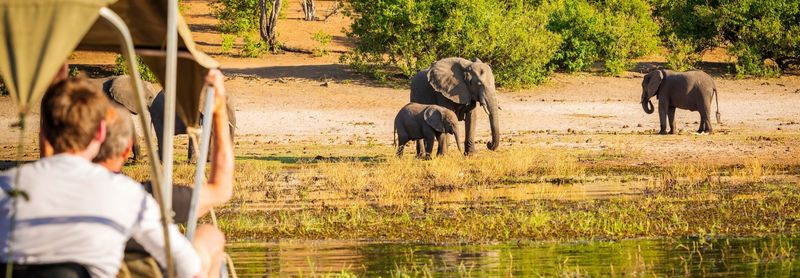
Once you’ve decided an African safari is your dream holiday (and who can blame you?!) the fun can really start. But where to go on safari?
There are numerous places in Africa that offer opportunities aplenty to see all of the Big 5, as well as many other endangered and beautiful species.
This post shares the best places in Africa to head out on safari, to help you choose the best destination for you. We’ll share the pros and cons of each African safari destination, as well as our own opinion on our favourite safari destinations. We’ll round it all off with a dedicated quiz, to guide you through the decision-making process based on your budget, your tastes, when you’re travelling and your favourite animals too.
So keep reading, and you’ll soon know where to go on safari next. Let’s get started:
Best for: A multi-activity holiday, where safaris form just one part.
Whenever I’m asked to recommend a good first-timer’s safari destination, I always say South Africa .
It was the first place we headed, and therefore where our love of safari began. Not only is it more budget-friendly than a lot of other African destinations due to the sheer amount of choice available, but it also offers lots of other things to do in case you tire of wildlife viewing (though, how could you?)
Pair a safari holiday to South Africa with a road trip along the Garden Route, where adrenaline junkies can bungee, photographers can marvel at the scenery, and wine and culture lovers can enjoy South Africa’s mother city of Cape Town. What’s not to love?
Sightings of the Big 5 are common in the major national parks and game reserves, but smaller private reserves offer a more intimate experience with sundowners, off-roading and bush walks too. It’s well worth searching these lodges out.

Struggling to choose between South Africa and Botswana ? Our guide compares the two, so you don’t have to!
Fast facts about South Africa:
- Regular sightings: South Africa is home to all of the Big 5, but you may also be lucky enough to spot a pack of wild dogs, cheetahs, meerkats and hippos.
- Types of safari: Walking safaris, game drives, sundowners, night safaris, photographic safaris.
- Budget: £-£££££
- Best time to go: May-September. The country’s winter months are best for wildlife viewing as there’s little rain or vegetation cover, meaning animals congregate around watering holes to feed and drink.
Best for: Sightings of the Big 5 and the big cats.
If animals are your top priority when choosing your safari destination, there’s nowhere better than Kenya .
Some of the most traditional game reserves and lodges can be found here, in prime position for safari-goers to witness the largest mammal trek in the world – the Great Migration. Thousands of zebra and wildebeest make the treacherous journey from Tanzania to Kenya to find the most plentiful grasslands in July and August. Outside of these months, visitors are treated to exceptional sightings of big cats, huge herds of elephants and birdlife too.
Lodge staff and guides/trackers are often hired from local Maasai villages, offering a unique perspective on the Maasai lands as well as the flora and fauna that live there. Safaris are often accompanied by visits to traditional villages, where you may see mud huts, farmland and displays of music and dance from the villagers.

Fast facts about Kenya:
- Regular sightings: All of the Big 5 and the Great Migration, with sightings of big cats are particularly common in Kenya.
- Budget: ££-£££££
- Best time to go: Visit Kenya between June and September as well as January and February, thanks to the great weather and wildlife spotting opportunities around the waterholes. If it is your dream to see the Great Migration, go in August.
Best for: A twin-centre safari + beach holiday.
Home to the world-famous Serengeti, Tanzania is a dream destination for wildlife lovers in Africa.
The other half of the Great Migration starts here between late April and June when immense herds of zebra and wildebeest head north after giving birth to their offspring. Visitors line the river banks and predator-rich plains as they watch the most incredible wildlife spectacle in the world.
Besides the wildlife, another huge draw for visitors to Tanzania is its natural beauty. In the north of the country, you’ll find Africa’s highest peak, Kilimanjaro, while just off the eastern coast, the tropical island of Zanzibar makes Tanzania an ideal twin-centre destination for both a safari and the beach.

Fast facts about Tanzania:
- Regular sightings: All Big 5, predators including cheetahs, hyenas and jackals.
- Best time to go: Visit between July and October, when Tanzania is at its driest. This also coincides with the Great Migration river crossings but, just like in Kenya, the dry season offers amazing wildlife sightings across the whole of Tanzania at this time.
Best for: An unforgettable water-based safari in the Okavango Delta.
Botswana is widely considered to be one of the best places in Africa to go on safari thanks to its beautiful landscapes, varied wildlife and exceptional hospitality .
If you’re heading to Botswana for the wildlife, no trip would be complete without taking in the Okavango Delta. Here, lucky visitors can spy on elephants, hippos and other water-based animals from a serene trip on a dug-out canoe or a motorised boat, while traditional game drives in the area are also filled with sightings of the big 5.
For an experience almost polar-opposite to the Okavango Delta, Botswana is also famous for the Makgadikgadi Pans. A dried-out lake, this is considered to be the largest salt flat in the world, and a wonderful place to see hardy species including meerkats, aardvarks and brown hyenas, as well as dark-maned lions and cheetahs chasing their prey.

Fast facts about Botswana:
- Regular sightings: All of the Big 5, as well as many other popular African safari animals like cheetahs, wild dogs, hippos and thousands of species of birds too.
- Types of safari: Walking safaris, game drives, sundowners, night safaris, photographic safaris, and boat safaris.
- Best time to go: Head to Botswana during the dry season between June and September, which brings high water levels in the Okavango Delta and beautiful weather.
Best for: Coming face-to-face with primates in their natural rainforest habitat.
Uganda is one of the only countries in the world you can see gorillas in their natural rainforest habitat.
Visitors flock to Uganda (and neighbouring Rwanda) to lay eyes on a gorilla family as they rest groom and chew on bamboo shoots. The aptly named Impenetrable Forest is where you’ll find them, but you’ll need to rise early, climb difficult terrain and trek in humid conditions for this experience that will stay with you forever.
Uganda’s rainforests are also home to incredible populations of other animals, including chimpanzees, monkeys and many bird species. But those in search of a more traditional safari should head to Queen Elizabeth National Park for encounters with the Big 5, away from the crowds.

Fast facts about Uganda:
- Regular sightings: Gorillas, chimpanzees and monkeys in the rainforests, as well as the Big 5 in the National Parks.
- Types of safari: Walking safaris, game drives, photographic safaris, gorilla trekking safaris.
- Best time to go: Visit during its two dry seasons: between December and February, and between June and August, when conditions are particularly good for gorilla trekking.
Best for: Gorilla trekking through Volcanoes National Park.
With its spectacular landscapes and gorillas among its mountains, Rwanda’s not called ‘the land of a thousand hills’ for nothing.
For many, the biggest draw of a trip to Rwanda is the opportunity to see mountain gorillas in Volcanoes National Park, but Nyungwe is also a wonderful place to spot chimps and 12 other species of primate. Here, the Canopy Walkway (a large suspension bridge) offers beautiful views right across the park.
More traditional safaris in Akagera National park make it possible to see the Big 5 – but only if you’re very fortunate! Buffaloes and elephants are most common here, with leopards sometimes seen at night. Following the reintroduction of black rhinos and lions in the last decade, sightings of these are becoming increasingly regular.

Fast facts about Rwanda:
- Regular sightings: Gorillas, elephants, buffalo, zebras, giraffes, monkeys and antelope.
- Best time to go: Visit Rwanda during the drier period from June to September, when you have the best chance at spotting the mountain gorilla.
Best for: Viewing wildlife against surreal landscapes and bright red sand dunes.
What Namibia lacks in greenery, it more than makes up for in spectacular wildlife sightings and scenery.
The country is home to almost half of the world’s remaining population of black rhinos, while Etosha National Park is the place to spot four of the Big 5 (everything but buffaloes lives here!) Sightings of cheetahs, giraffes and hyenas are also common. Marine lover? Head to the coast to find Mola molas, whales, dolphins, seals and penguins on tours from Walvis Bay.
Aside from the wildlife, Sossusvlei’s Mars-like landscapes make for beautiful photos. Surrounding this huge, white salt and clay pan and its skeletal trees are some of the highest sand dunes in the world at almost 400m tall. No trip to Namibia is complete without a climb to the very top!

Fast facts about Namibia:
- Regular sightings: Lions, elephants, cheetahs, seals, oryx and the gemsbok – an antelope only found in Namibia.
- Best time to go: Travel to Namibia between July and October for bearable temperatures and dry weather. This is also the best time for wildlife viewing.
Best for: Combining wildlife spotting on walking safaris with trips to the world’s largest waterfall.
Blending a rich history and culture with beautiful natural sights and animals, Zambia may just be Africa’s best-kept secret.
Zambia is considered to be the home of the walking safari and is where many guests ditch the game vehicle and head out on foot. Accompanied by exceptional guides, safari-goers in South Luangwa National Park are often treated to sightings of elephants, antelopes and big cats. Traditional game drives and walking safaris are also on offer in Zambia’s other national parks, so there’s something for everyone here!
Beyond the wildlife, head to the border with Zimbabwe for an exhilarating experience at the spectacular Victoria Falls. Here, you can enjoy a bungee jump, join a walking tour, take to the skies in a helicopter or negotiate the rapids of the Zambezi in a raft.

Fast facts about Zambia:
- Regular sightings: Elephant, hippo, buffalo, zebra, lion, leopard and hyena.
- Types of safari: Walking safaris, game drives, night drives, photographic safaris, and boat trips.
- Best time to go: The best time to visit Zambia is during the dry season between June and November. At this time of year, the days are hot but the nights are cool.
Best for: Witnessing one of the most bio-diverse countries in the world.
A place unlike any other, Madagascar is home to animals you simply won’t find anywhere else in the world.
The island’s rainforests are teeming with wildlife, including over 100 species of lemur which are native only to Madagascar. Lucky visitors can spot the cuddly ring-tailed lemurs and ruffed lemurs among many others, swinging from the trees in search of fruit. Carnivore fans will be in constant search of the fossa, Madagascar’s top predator, which, despite its resemblance to a small cougar, isn’t actually a cat.
Madagascar’s position in the Indian Ocean makes it an ideal wildlife destination for those in need of relaxation, thanks to its beautiful landscapes, coral reefs and tropical sandy beaches.

Fast facts about Madagascar:
- Regular sightings: Lemurs, cat-like fossas and many species of birds and reptiles.
- Types of safari: Walking safaris, game drives, photographic safaris, boat safaris
- Best time to go: Travel between September to October when the weather is mild and the lemurs are more active.
Best for: Mixing elephants with natural wonders, including the thundering Victoria Falls.
Home to one of the largest populations of elephants in the world, Zimbabwe is a mainstay on many safari lovers’ bucket lists.
Occupying an area similar to Belgium in size, Hwange National Park is the largest wildlife reserve in Zimbabwe, perfect for game-rich safari sightings. As well as elephants, the rest of the Big 5 can be found here, along with one of Africa’s largest surviving populations of wild dogs.
For those looking for more, Zimbabwe offers a range of natural wonders to see alongside its wildlife. Head to the northern border to view the thundering Victoria Falls. Adrenaline seekers will love the adventurous activities available nearby, including zip lining, abseiling and white water rafting on the Zambezi.

Fast facts about Zimbabwe:
- Regular sightings: All of the Big 5, wild dogs and unusual antelope like sable and roan.
- Types of safari: Walking safaris, game drives, sundowners, night safaris, photographic safaris, boat safaris
- Best time to go: Visit Zimbabwe between July and October, when game viewing is at its peak around the lakes, man-made waterholes and rivers.
If you’re still not sure where to go, spend a few minutes taking the interactive quiz coming soon. Just know that, wherever you choose, you’re in for a real treat and it won’t be long before you tick them all off your list!
Anna is the founder of Really Wildlife. She's a 30-something lover of wildlife travel, vegetables and listening to the Lion King soundtrack on full blast.
9 Best Countries in Africa to Visit on Safari
Customers rate Zicasso's travel referral service 4.9 on a scale of 1 to 5 based on 1554 reviews on Trustpilot
We match you with top tour companies that specialize in the trip you want, whether it's a customized private tour or a group tour.
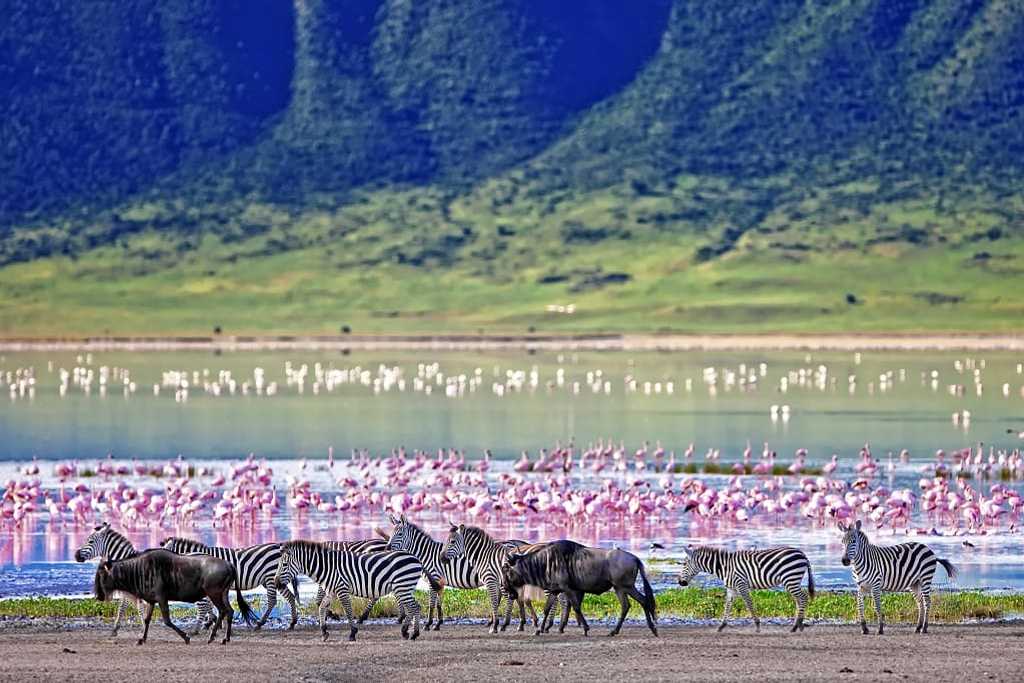
Ngorongoro Crater, Tanzania
Africa is home to conservation parks and canyons, deserts and deltas, and rivers and ravines which create an ideal canvas for a dream adventure across our best safari countries.
Focus is given to East and Southern Africa, where unfathomable numbers of animals and breathtaking landscapes set the scene for an adventure some only dream of. A beach-and-bush endeavor intertwined with majestic waterfalls, tranquil lakes, and off-the-beaten-path activities makes planning an African safari not only exciting but perhaps a little daunting, with options stretching from border to border.
As a continent that captures the soul in so many ways, you can find our recommendations for the best African safari countries, with ideas of where to go within them.
1. Botswana
5. south africa, 6. tanzania, 9. zimbabwe, why you should visit africa, best time to visit africa, is africa safe, explore the best countries in africa on safari.
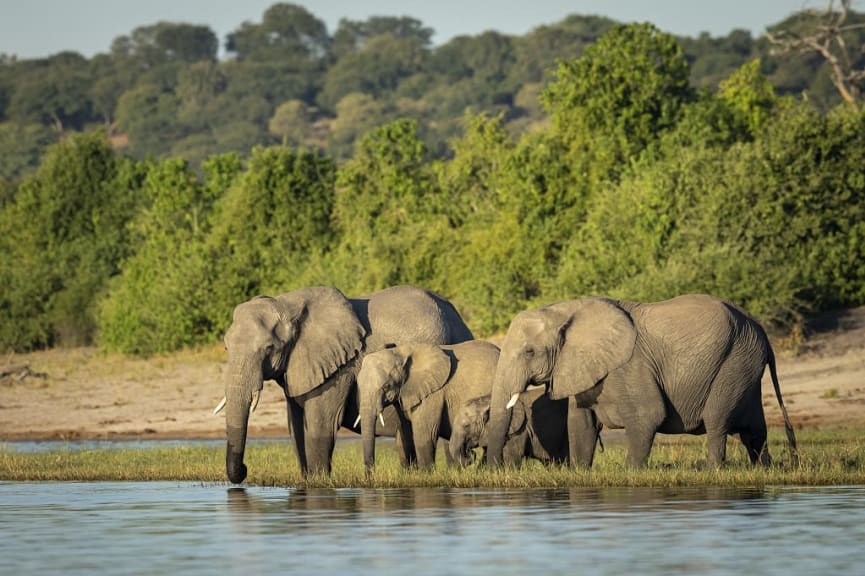
Chobe National Park, Botswana
Botswana offers some of the most incredible wildlife experiences and several must-see destinations and landscapes.
The humbling natural beauty presents scenes ranging from stark desert beauty to thickets of acacia trees, and the winding waters of the Okavango Delta only scratch the surface of reasons to choose Botswana for your safari . With exclusive, adventurous exploration and unforgettable wildlife encounters, Botswana is the ideal playground for any safari seeker.
Whether looking for a Botswana safari for seniors or interested in a luxury Botswana safari , you can find the right place for your style of travel and more at the following spectacular places.
Okavango Delta
Where is it? The channels and grasslands of the Okavango Delta lie in northwestern Botswana, the water coming down from Angola and flooding the plains to create a wonderland offering water- and land-based safaris for a variety of exciting experiences when on an Okavango Delta safari .
Highlights of the area:
- Discover how the channels of the Okavango Delta provide a pathway through reeds and bushes to highlight some of the best birdlife and smaller wildlife in Sub-Saharan Africa
- Witness how the landscape shifts from desert-like sand to stony savannas
- Embrace unparalleled game experiences to find the likes of elephants and lions, lively avifauna and foraging mongoose
When to visit: May to September, when the days are cooler, the grasses low, and game viewing is at its prime, will show you the delta at its best. The dryer, winter months of the Southern Hemisphere are simply perfect to explore on water or land.
Chobe Game Reserve
Where is it? In the north of Botswana, Chobe is the country’s third-largest game reserve. It lies not too far from the Zimbabwe border and is a water taxi ride away from Zambia.
Highlights of the park:
- Great herds of elephants, an incredible sight to witness from within the reserve and from a tender boat on the Chobe River
- Proximity to Victoria Falls to experience it as a day trip
- Combines well with the Okavango Delta and Maun to create the overall Botswana safari adventure
When to visit: Winter in the Southern Hemisphere is the best time, so consider the drier, cooler months of June to the end of September. Combining Chobe with a visit to the famous Victoria Falls works exceptionally well during the winter months as the falls are at their most magnificent from May to the end of July.
Kalahari Desert
Where is it? Crossing several countries, the Kalahari Desert covers around 70% of Botswana, starting from the southern border with South Africa and expanding up into Botswana. It offers some of the typical topography and features you would expect from a desert experience, plus much more.
- Bask in the diverse wildlife, flora, and fauna during dramatic variations in temperature
- Visit with the renowned Bushmen, who have lived in the distinctive landscape and temporal conditions for millennia
- Enjoy stargazing and nature walks to embrace the encompassing majesty of the Kalahari Desert
When to visit: Consider the wet season to embrace all of the region’s offerings, most noticeably the prolific birdlife that can be seen from December through to March. Animals also congregate around the pans, so wildlife spotting is good. The cooler and drier months will make road travel easier, so you could say this is a year-round destination.
Where is it? In the northwestern corner of Chobe National Park, near the river border of Namibia, lies the swamp-like safari wonder of Linyanti. It is remote and rugged, and offers exceptional off-the-beaten-track safaris.
- View the vast herds of elephants to experience one of the main highlights of any safari in this region
- Indulge in the stillness, remoteness, and incredible birdlife associated with the serene corner of Botswana
When to visit: September stands out as a peak time to visit, with the best bird-watching months being January and February. The winter in southern Africa falls from June through to the end of August, making wildlife sightings easier during dry months when the grass is low.
Learn more: Botswana Safaris • Botswana Safari Guide
Expert Tips for Discerning Travelers

Amboseli National Park, Kenya
Comprising vast savannas, flourishing lakes, and impressive mountains, Kenya sits along Africa’s eastern coastline and is a gateway to some of Africa’s key safari destinations.
With opportunities to enjoy a Kenya Great Migration safari or honeymoon safari across Kenya , the county’s well-known parks lure you in with promises of thundering herds in the Maasai Mara or views of Mount Kilimanjaro from Amboseli, just two highlights of your safari journey.
Timeless and offering fantastic times to visit year-round, discover safari excellence in this incredible country at the following iconic destinations.
Where is it? Perfectly positioned along Kenya's southern border, the Amboseli National Park offers a frontline view of one of the most majestic sights of all time, Mount Kilimanjaro.
- Enjoy the national park with one of the best panoramic views of Mount Kilimanjaro
- Explore the wilderness to find the variety of wildlife in a park that’s home to the Big Five
- Indulge in the natural landscapes of Kenya as you venture through one of Africa’s most scenic national parks
When to visit: The drier months of the Southern Hemisphere’s winter are prime time to experience this part of Kenya. Visit anytime from the end of May to the end of September and discover mild days and cool nights, with quality game viewing guaranteed.
Maasai Mara
Where is it? Kenya’s most famous safari park is located in the southwest of the country, bordering Tanzania, and offers some of the best game viewing in Africa. The Maasai Mara is the quintessential safari destination and the place most first-time safari goers look to experience on Maasai Mara safaris .
- Discover the wilderness in the Maasai Mara as you search for the Big Five and herds of game
- Explore the vast savannas with exceptional guides, inviting lodges, and premier camps
- Take advantage of the sensational opportunity to witness the greatest wildlife spectacle on Earth, the Great Migration
When to visit: The Great Migration usually occurs around July and again in reverse around the end of October to provide the best game-viewing opportunities. Birding is wonderful in January and February, and the Southern Hemisphere’s winter months of June to August are known as the peak safari period. The Maasai Mara is one of the few safari destinations that almost assures you of a great experience any time of year.
Where is it? Centrally located, Laikipia County runs across vast open plains, dense hilly areas, and impressive mountain ranges. It overlooks the Ewaso Nyiro River, is home to Maasai and Samburu communities, and an array of wildlife.
- Find a refuge for a large number of endangered black rhino and other captivating wildlife, such as giraffe, kudu, waterbuck, eland, and leopard
- Revel in the wilderness from a different perspective on walking and horseback-riding safaris
- Discover the active colors, songs, and hunting prowess of the impressive avifauna with distinctive bird-watching opportunities.
When to visit: For optimum game viewing, the drier months of June through to September are perfect. If you are an avid bird watcher, be sure to include Laikipia in your East African safari itinerary and visit in January and February.
Lake Nakuru
Where is it? In west-central Kenya, three hours from Nairobi, Lake Nakuru is a captivating lake in the Great Rift Valley. The destination is often included in a standard Kenyan itinerary, adding a splash of color to a safari.
- Focus on the thousands of flamingos that cover the shimmering waters of the lake as they forage, rest, and cast a slightly pink hue across the water
- Search the landscape amongst the shrubs and along the shoreline to find vibrant wildlife, such as crocodiles and baboons
When to visit: Make the most of the dry, Southern Hemisphere winter by visiting between June and September.
Learn more: Kenya Safaris • Kenya Safari Guide
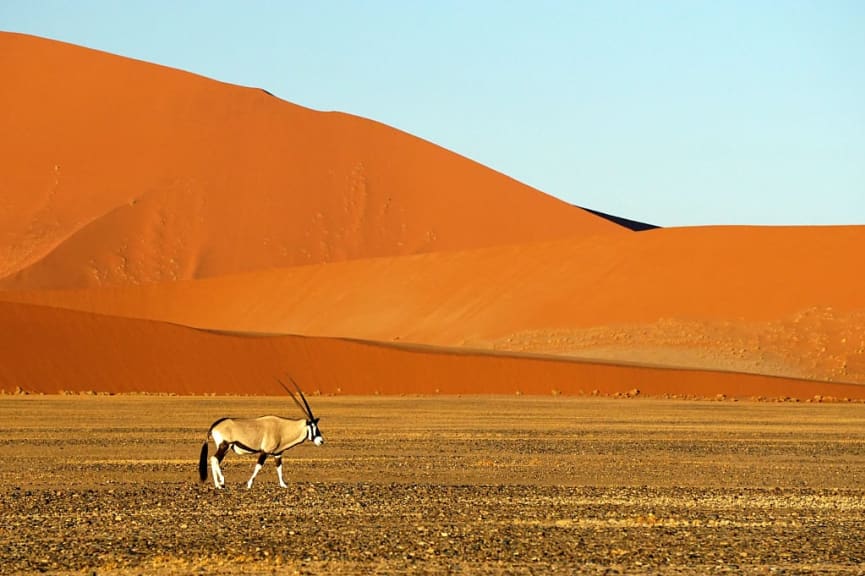
Namib Naukluft National Park, Namibia
Red desert scenery, vast safari parks, a breathtaking canyon, and an eerie yet serene coastline sum up the fascinating country of Namibia, with so many incredible places to see and experience .
A strong German influence is experienced in the town of Swakopmund and spending time with the Himba tribe as its people share their lifestyle and environment is unforgettable.
Ghostly Kolmanskop is captivating and spending time exploring the Bushmen paintings at Twyfelfontein and marveling at the petrified rocks at Vingerklip round up a magnificent experience of the following places.
Etosha National Park
Where is it? In the north of Namibia, Etosha resonates with safari goers who want to explore more than the famous dunes, San culture, and quaint coastal towns of this fascinating country.
- Witness the Big Five roaming through the park during the dry winter months
- Discover elephants and a variety of buck as they gather at waterholes amid arid open savannas
When to visit: Consider the drier winter months of the Southern Hemisphere between June and September for optimum game viewing. The days are cooler too, making the destination ideal overall.
Namib Naukluft
Where is it? On the southwest coast of Namibia, the Namib Naukluft Park is the largest game park in Africa and covers part of the Namib Desert.
- Embark on the key highlight at Sossusvlei, a salt and clay pan surrounded by magnificent rusty-red sand dunes
- Explore the Sesriem Canyon, an impressive gorge carved by the Tsauchab River
When to visit: Discover the area in the cooler, Southern Hemisphere winter months of May to September.
Learn more: Namibia Safaris
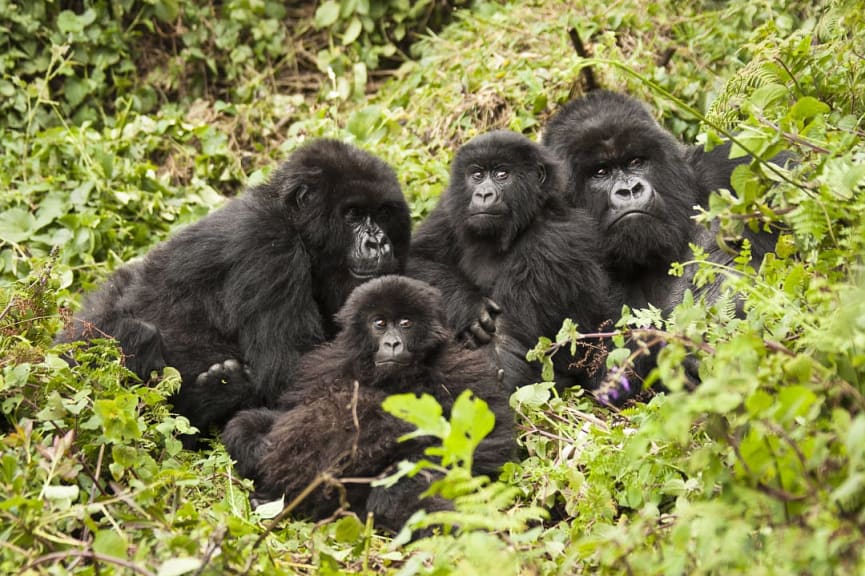
Volcanoes National Park, Rwanda
A land of a thousand hills, as it is known, Rwanda thrills with its volcanoes, rainforests, and open plains.
Wildlife is incredible, with the ultimate adventure found in the form of a Rwanda gorilla-trekking safari in one of the world’s key destinations to experience just that.
Below is one of the most iconic places in Rwanda that you can visit on vacation.
Volcanoes National Park
Where is it? In the northwestern part of Rwanda, part of the Virunga Conservation Area and covering more than 48 square miles, the park is home to five extinct volcanoes, the Muhabura, Sabyinyo, Gahinga, Karisimbi, and Bisoke.
- Venture deep into the dense jungle of Rwanda to uncover the endangered mountain gorillas
- Trek through the lush forests and trees to see the rare and rambunctious golden monkeys
- Enjoy wilderness hikes that take you into the rainforest for unique views and experiences with prolific birdlife
When to visit: Enjoy the cooler, drier months of May to the end of August. A shorter dry season runs from mid-December to early February, a perfect time for bird lovers.
Learn more: Best Places to Visit in Rwanda
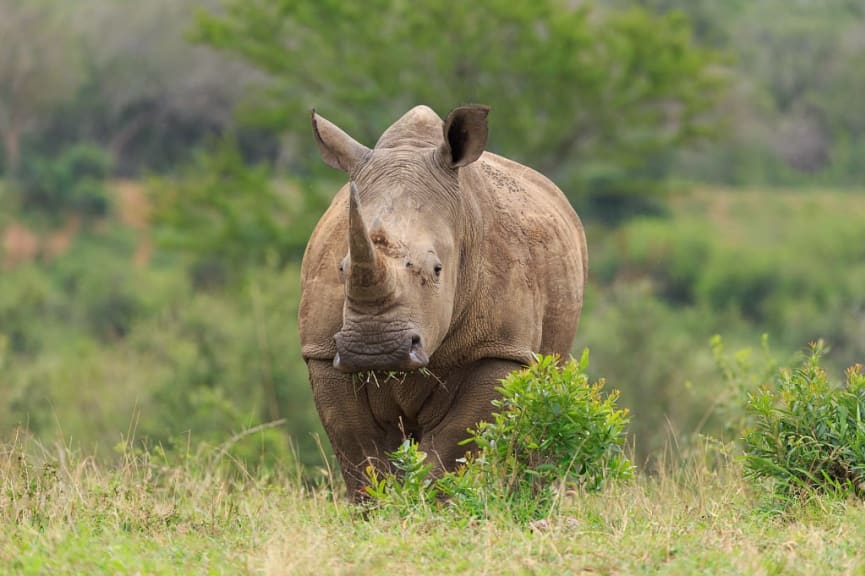
Hluhluwe, South Africa
South Africa is definitely one of the top safari destinations in Africa, and with unparalleled natural reserves and breathtaking scenery, you can easily be immersed in the wonder of the Big Five and other majestic wildlife.
The country offers a handful of malaria-free reserves and parks, and with safari options available throughout the country, embarking on a trip like this is easily combined with visits to other parts of the country for a fantastic introduction to a South Africa safari for families or a safari with a South Africa food and wine tour .
With exceptional wildlife to see , here are some of the best places within South Africa that you can explore during your vacation.
Where is it? One of the most famous safari parks in Africa, the Kruger lies on the northeastern border of South Africa and Mozambique, and is said to be slightly larger in size than Switzerland. An immersive exploration of the landscape can be had on a Kruger National Park safari .
- Explore the breadth of the Kruger National Park to find some of safari’s most notable wildlife, including the Big Five and so much more
- Experience a day of game drives to reach deep into changing landscapes across the park’s distinctive ecosystems
- Enjoy discovering the Kruger with a specially trained guide as you travel in a private vehicle or an open 4x4
When to visit: Take advantage of the cooler, drier months of May to September to get optimum game viewing. Avoid school holidays, as many locals enjoy the park at this time. Otherwise, the Kruger is a year-round destination with fascinating wildlife viewing, no matter the season.
Where is it? Lying adjacent to the famous Kruger National Park, Sabi Sands offers a private safari experience, with game drives conducted in a smaller, private area on a very popular safari circuit.
- Indulge in the comforts and attention a private game reserve provides as your find prime game viewing on smaller sections of land
- Delight in the opportunity to see more wildlife at your leisure and pace, while also seeing fewer vehicles while you traverse this prime safari region
When to visit: The Southern Hemisphere’s winter is the ultimate time to go on safari, with mild days, low grass, and fantastic game viewing from May to September.
Where is it? Nestled in Zululand in the KwaZulu-Natal province, inland of South Africa’s east coast, it is about four hours from Durban’s King Shaka International Airport.
- Revel in the opportunity to spot rhinoceros in Hluhluwe, one of the best destinations for spotting the animals in their natural habitat
- Enjoy the lushness of the hills and the picturesque scenery that create an unforgettable safari experience in South Africa’s oldest national park
When to visit: The dry winter months of June, July, and August are best for game viewing, while the rainy season from late December through to February hinders wildlife sightings.
Where is it? Madikwe Reserve is in South Africa’s North West province, near the Botswana border and the Kalahari Desert, and it boasts malaria-free status.
- Explore a national park famous for wild dog sightings and strong conservation efforts focused on the preservation of wild dog packs
- Discover the comforts and capabilities of safari in a smaller, lesser-known park, while still having access to Big Five viewing
- Enjoy the freedom of a safari experience in a malaria-free zone
When to visit: The Southern Hemisphere’s winter months from June to September are the peak time to enjoy a safari here. Daytime temperatures are mild, with low grass offering incredible wildlife sightings.
Where is it? Adjacent to Sabi Sands, on the western edge of the Kruger and in the Mpumalanga province, you will find the Timbavati Game Reserve. It is close to the town of Hoedspruit and the Eastgate (Hoedspruit) Airport.
- Experience the depth of beauty in the open plains and dense bush as you traverse Timbavati with a trained guide
- Revel in the open views and access to wildlife among fewer 4x4 vehicles traversing the park
- Travel through the park in search of the famous white lions that, while rarely spotted, still roam the savannas
When to visit: Stick to the drier months of May through to September for your safari. Mild days and low grass make for a truly great experience.
Learn more: South Africa Safaris • South Africa Travel Guide
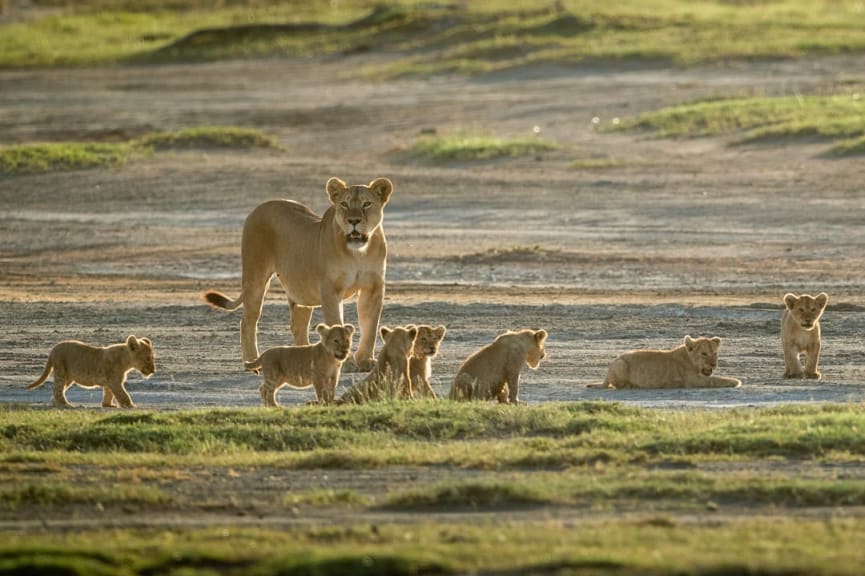
Serengeti National Park, Tanzania
Tanzania’s northern circuit is a popular safari itinerary and a key reason people visit this part of East Africa. Swahili tradition is found throughout every property.
Serengeti Great Migration safaris and luxury game adventures in Tanzania appeal to all safari inclinations, in location and style, with famous game parks giving way to lesser-known reserves for those seeking something more or different.
There are endless reasons to choose Tanzania for your safari , from the endless plains to the gorgeous craters and lakes, and our top recommendations when exploring this African safari destination will immerse you in the wonders of the natural world.
Ngorongoro Crater
Where is it? The famous Ngorongoro Crater is located in the highlands of Tanzania, approximately 110 miles west of Arusha. It forms part of Tanzania’s northern safari circuit.
- Embrace the wonders of the crater as a key feature of the safari as you travel around one of the world’s largest inactive volcanic calderas
- Delight in viewing the Big Five in an incredible setting that provides a memorable combination
When to visit: Peak safari season is during the Southern Hemisphere’s winter months, so plan to visit any time from May through September to enjoy an incredible safari experience. If you do want to be present for the birthing season, travel in January or February.
Serengeti National Park
Where is it? In the northern part of the country, the Serengeti National Park is Tanzania’s most famous safari destination and shares a border with Kenya.
- Traverse Serengeti National Park in search of the incredible amount of wildlife, open savannas, rocky outcrops, and five famous rivers
- Wander the exciting stage of the Great Migration as you witness one of the ultimate safari experiences.
When to visit: For a chance to catch the migration, visit in October or November to watch thousands of wildebeest cross from the Serengeti to the Maasai Mara.
Where is it? Tarangire National Park is in the northern part of Tanzania, in the Manyar region. It is named after the Tarangire River that runs through it.
- Discover the wonderful addition to the northern Tanzania safari circuit as you travel along the Tarangire River
- Search for atmospheric baobab trees and the thriving elephant population to enjoy the captivating safari ambiance
When to visit: Enjoy the dry season and Southern Hemisphere’s winter months any time from June to October.
Lake Manyara
Where is it? Part of the northern safari circuit, Lake Manyara lies on the East African rift of the Manyara regions of Tanzania. It boasts the seventh-largest lake in the country.
- Indulge in the iconic image of Lake Manyara as you find thousands of flamingos that make their home on the soda-ash lake
- Travel the lush and wet landscape to find the distinctive tree-climbing lions
When to visit: Visit the park in the cooler months of May through to September, when the days are mild and drier, and game viewing is at its best.
Where is it? Located around 130 miles from the city of Dar es Salaam, in the southern part of Tanzania, the park is larger than the Serengeti, yet relatively undiscovered and a perfect addition to a northern-circuit safari.
- Embrace the quieter experience of the often-overlooked park to find dramatic landscapes comprised of waterways and forests
- Discover the incredible hippo, crocodile, and amazing birdlife populations as you traverse the variety of ecosystems
- Experience why the less-famous national park is also a UNESCO World Heritage Site.
When to visit: Consider the cooler winter months and plan your visit from May through September. While birding is great year-round, April is good for bird lovers.
Learn more: Tanzania Safaris • Tanzania Safari Guide
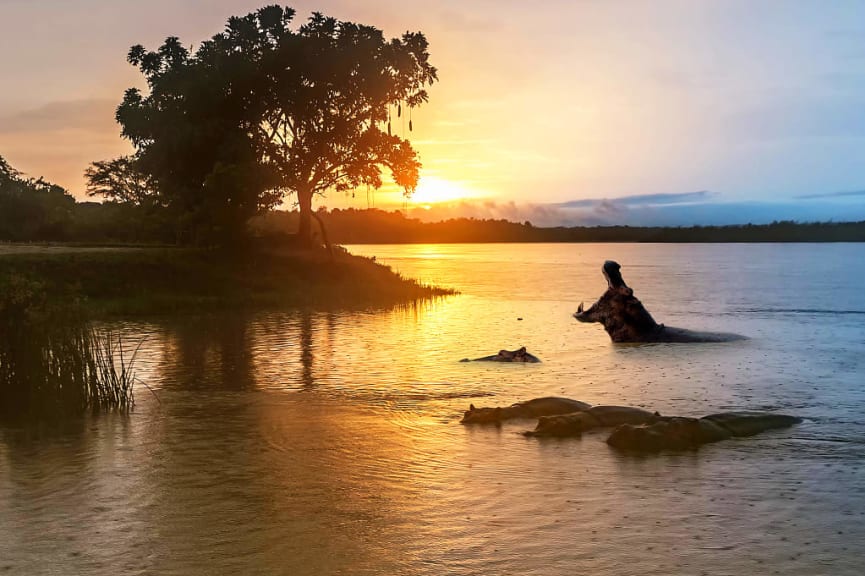
Murchison Falls National Park, Uganda
A diverse landscape of lakes and mountains, savannas and forests, Uganda offers a variety of views and adventures.
Wildlife abounds, with gorilla and chimpanzee trekking a highlight, while the culture will touch your soul. Known as the Pearl of Africa, it certainly is a gem and offers a unique safari and scenery experience at the following must-see places.
Queen Elizabeth Park
Where is it? Queen Elizabeth Park lies in western Uganda, between the Kazinga Channel and the George and Albert lakes.
- Enjoy the prolific birdlife and sightings of wildlife along the Kazinga Channel as you travel along the water by boat
- Spot tree-climbing lions in the Ishasha Game Reserve, which lies in Queen Elizabeth Park.
When to visit: The park is great to visit at any time of the year. However, consider the drier, cooler months of June and July. If you are a bird lover, January and February are amazing here.
Murchison Falls
Where is it? The Murchison Falls National Park is in the northern part of Uganda, just northwest of the capital, Kampala.
- Experience the alluring thunder of Murchison Falls, known as one of the world’s most powerful waterfalls
- Explore the diverse wildlife habitat created by the massive waterfall as you travel near the famous Ziwa rhino sanctuary
When to visit: Consider visiting in June and July or January and February. Bird watching is best during the wet months of April and May and August to October.
Bwindi Impenetrable Forest
Where is it? Covering around 120 square miles, the Bwindi Impenetrable Forest lies in southwestern Uganda, bordering the Democratic Republic of the Congo.
- Revel in the density of Bwindi Impenetrable National Park as you trek through the trees in search of the renowned gorilla population
When to visit: June to September and December to February are the drier and more desirable months to go gorilla trekking.
Learn more: Uganda Safaris and Gorilla Trekking • Best Places to Visit in Uganda

Victoria Falls bordering Zambia and Zimbabwe
A southern African gem, Zambia is a lesser-known yet simply fantastic safari destination. It is certainly worth considering when planning your trip.
Wide-open spaces and an abundance of wildlife are just two of the country’s major attractions, with walking safaris a distinct highlight when exploring the best places to visit in Zambia .
The incredible safari circuit is accompanied by the majestic Victoria Falls, which shares its glory with neighboring Zimbabwe, with many more excellent destinations to discover during your trip.
Lower Zambezi
Where is it? You can find the Lower Zambezi National Park in southwestern Zambia, along the north bank of the Zambezi River.
- Enjoy the pristine wilderness of the Lower Zambezi National Park safari to find quality experiences
- Discover camps and lodges that are unfenced, suggesting a vast exploration experience
- Travel beneath big skies that offer incredible stargazing opportunities
When to visit: Get in ahead of the October heat and plan to visit from June to September, when it is drier and cooler.
South Luangwa
Where is it? This park is in southwestern Zambia, in the valley of the Luangwa River, and is referred to by locals as simply “the South Park”.
- Venture through grasslands, savannahs, riverine, and woodlands when discovering the splendor of South Luangwa National Park, one of the most beautiful in Zambia
- For phenomenal wildlife sightings, travel near the Luangwa River to find many animals gathering.
When to visit: Most of the lodges and camps only operate seasonally, so the ideal time to visit is during the drier months of June through to September.
Kafue National Park
Where is it? Zambia’s largest and oldest national park is in western Zambia, also said to be one of the largest in Africa.
- Discover a sensational landscape perfect for walking safaris with a professional guide to view wildlife that does not migrate
When to visit: Kafue is a year-round destination. However, the drier months of May to November are the better time to visit.
Learn more: Zambia Safaris

Mana Pools National Park, Zimbabwe
Once known as the breadbasket of Africa, Zimbabwe hosts safari parks and scenery that range from lakes and waterfalls to wildlife havens that rival more popular African destinations, easily demonstrated in the top places to visit in Zimbabwe .
A country filled with a rich cultural history, it is a wonderful consideration as a standalone destination or combinable with other incredible safari locations.
Hwange National Park
Where is it? Around 60 miles from Victoria Falls, the Hwange National Park sits on a railway path that connects the famous falls to Bulawayo.
- Delight in the reserve surrounded by great herds of elephants
- Experience the dynamism of the wilderness in which wild dogs play
When to visit: Enjoy a safari here any time between May and October. If combining it with viewing the famous Victoria Falls, then June and July are the ideal months.
Mana Pools National Park
Where is it? The Mana Pools National Park is in northern Zimbabwe, along the lower Zambezi River. Heavy rains turn the floodplains into a bountiful lake.
- Discover a waterhole popular with wildlife as the surrounding lakes dry during the winter season
- Explore a UNESCO World Heritage Site in a remote corner of Zimbabwe for an authentic and wild experience
When to visit: Consider the drier months of May through to the end of September, when the animals tend to gather in search of water.
Learn more: Zimbabwe Safaris

Great migration in the Serengeti, Tanzania
Africa is a haven for safari-goers and wildlife enthusiasts. Its national parks and game reserves are home to the Big Five, African wild dogs, hippos, giraffes, wildebeest, and many more iconic wildlife sightings, in addition to thousands of species of endemic birdlife. From witnessing the Great Migration in the Serengeti to tracking gorillas in the mist-shrouded forests of Uganda, Africa promises unforgettable encounters with nature’s most magnificent creatures.
The continent also boasts breathtaking rugged landscapes, from the vast Sahara Desert to lush rainforests, towering mountains to pristine beaches. Whether you seek adventure or relaxation, Africa’s varied terrains provide ample opportunities for exploration and discovery.
Finally, the continent’s cultural diversity is another compelling reason to visit. Each country has its own unique traditions, art, cuisines, and ways of life, and these can differ greatly between communities within each country. Immersing yourself in the warmth and hospitality of local communities can be a profoundly enriching experience, offering insights into ways of living that may challenge and expand your worldview.
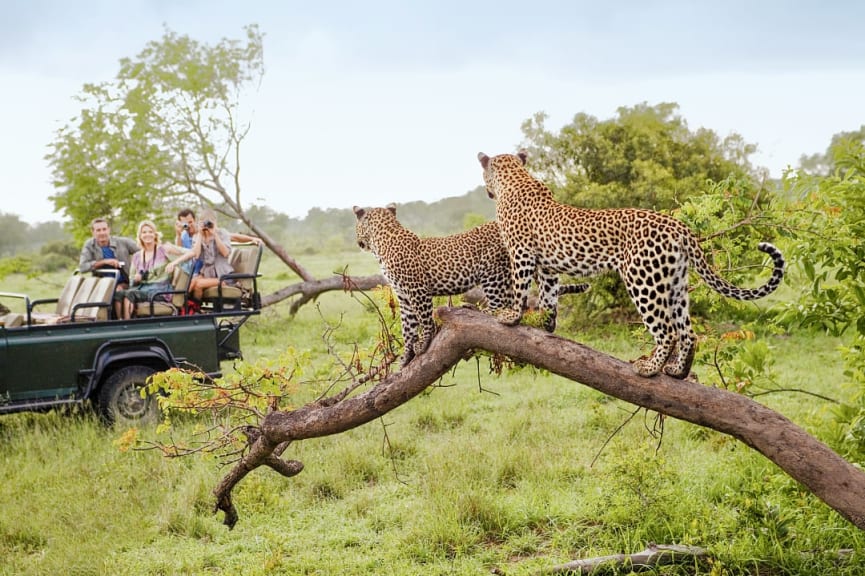
Kruger National Park, South Africa
The best time to visit Africa depends on your desired experiences and travel destinations within the continent's diverse regions. For many countries in eastern and southern Africa, the dry season from June to October is an ideal time, offering superb wildlife viewing as animals congregate around scarce water sources. This peak season also promises warm, sunny days and minimal rainfall, perfect for game drives.
If you're drawn to the otherworldly landscapes of northern Africa, spring, from March to May, and fall, from September to November, are generally the most pleasant times to visit. Temperatures are milder, making it more comfortable to explore iconic destinations like the pyramids of Giza, the winding medinas of Marrakech, and the ancient Roman ruins scattered across the region.
For those seeking to witness the breathtaking annual migrations in Tanzania's Serengeti National Park or Kenya's Maasai Mara, July to October is the prime viewing period. Coinciding with the dry season, this extraordinary natural spectacle attracts wildlife enthusiasts and photographers from around the world.
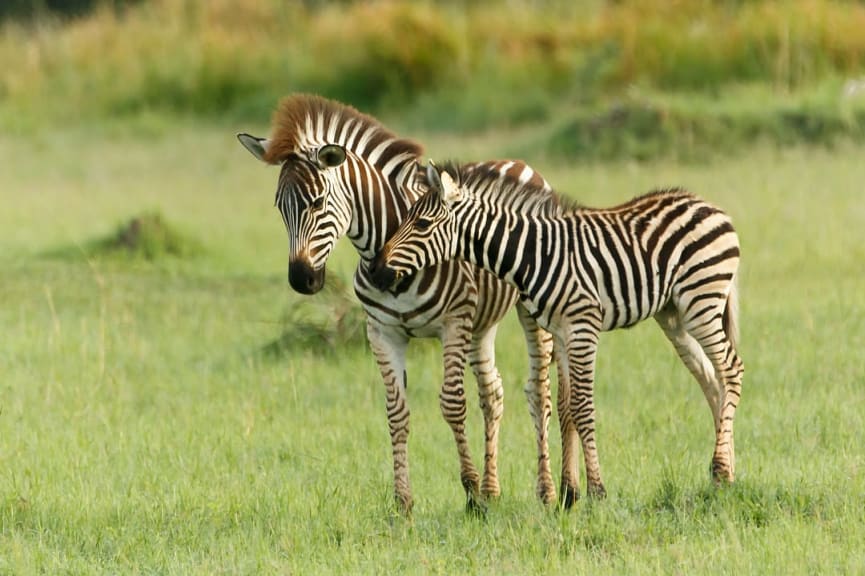
Moremi Game Reserve, Bostswana
While it's natural to have concerns about safety when traveling to a new region, Africa is a vast and diverse continent, and many African nations are not only safe for tourism, but have robust travel infrastructures and well-established safeguards in place to protect visitors.
As with travel to any international destination, you should take basic precautions, such as avoiding solitary exploration of unfamiliar areas, being aware of your surroundings, and respecting local customs to ensure a safe and enjoyable trip to Africa.
Africa rewards the intrepid and open-minded traveler with unparalleled cultural immersion, awe-inspiring natural beauty, and life-enriching experiences. Many parts of this remarkable continent are safe to explore when traveling with reputable private guides.
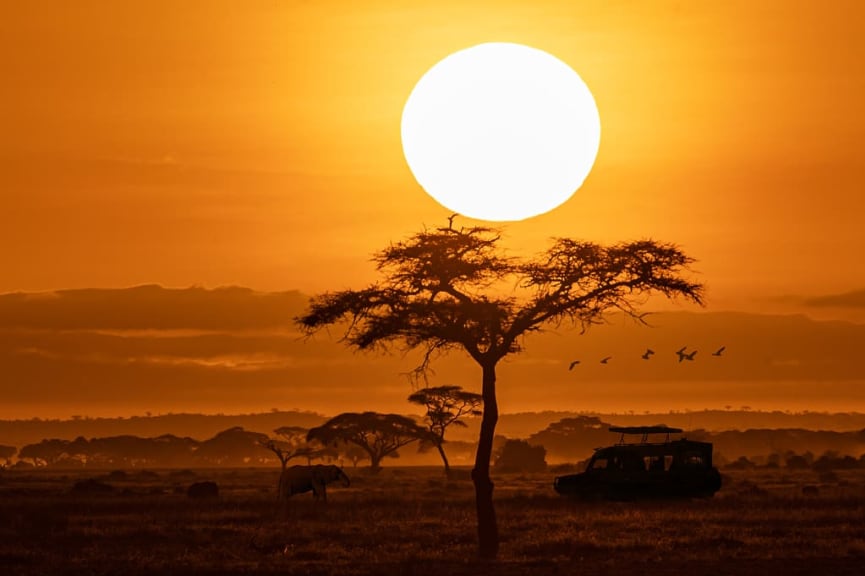
Masai Mara, Kenya
Africa is a dynamic and intriguing continent, with several east and southern African countries setting the scene for unique drama and beauty in wildlife encounters and breathtaking scenery. Choosing to go on an African safari is the first step; knowing where to go may require a bit more research to narrow your options down to specific countries.
Let one of our Zicasso travel experts guide you in booking your safari after you find inspiration for your best trip with our African safaris sample itineraries or African safari travel guide .
Life-Enriching Travel Designed Just for You
Trips curated by the world’s top destination experts
Concierge-level service leading up to and during your trip
Unique, exclusive experiences and insider access
Help Me Plan My Trip
Get Top Travel Specialists to Help Plan Your Trip
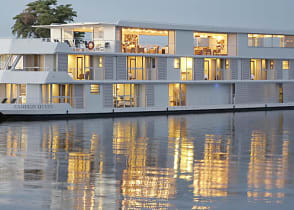
Places to Visit in South Africa: A 2-Week Bucket List Trip

https://www.foratravel.com/guides/KSLLZ6/places-to-visit-in-south-africa-a-2-week-bucket-list-trip-lee-newell
South Africa
Adventure Travel
Nature Escapes
Bucket List-Worthy
Sightseeing

Curator’s statement
South Africa is a beautiful country with so many places to go. From stunning vistas to incredible wildlife, winelands to game reserves in Kruger and Sabi Sands, the offerings are vast. From the gorgeous beaches in Hermanus to the eco-conscious and stunning Grootbos Nature Reserve, the landscape and sheer beauty will leave you wanting more. From here, you go on safari and experience a life-changing trip. I'm very pleased to offer my expertise and guide highlighting the best places to visit in South Africa.
The Fora Difference
Book with Lee to access exclusive perks and experiences on your trip.
Killer perks
Free upgrades, spa credits and more—we got you
Personalized recs
Customized travel planning for your style
Insider knowledge
Expert advice from people who’ve actually been there
Where to stay
Mount nelson, a belmond hotel, cape town.
A historic standout in pink at the base of Table Mountain, stay here for the storied history, art-focused activities and luxe spa.
Breakfast daily.
Afternoon/evening tea for two.
Upgrade & extended check-in/out whenever possible.
12 Apostles Hotel & Spa
A hotel at the very tip of Africa, p oised above the Atlantic Ocean and flanked by the majestic Twelve Apostles Mountain range and Table Mountain National Park.
$100 hotel / resort credit.
The Table Bay Hotel
Elegant hotel along the V&A Waterfront with refined rooms and suites.
Cape Grace, A Fairmont Managed Hotel
Indulge in unparalleled luxury and timeless elegance at Cape Grace, a Fairmont Hotel.
Complimentary lunch or dinner for two.
Taj Cape Town
In a walkable old city location, this popular stay is in a historic building and gleaming modern tower.
$100 food / beverage credit.
The Cellars-Hohenort Hotel
This charming hotel boasts 51 elegant guest rooms and suites with breath-taking views of South Africa’s iconic Table Mountain range and the property’s extraordinary gardens.
$50 hotel / resort credit.
Unlock perks by contacting Lee to book your trip.
Get in touch with Lee
Reach out to customize and book your own experience. Or, just to chat about travel in general.
You can normally expect a response from Lee within a business day or so. You’ll also be subscribed to our travel newsletter (you can unsubscribe at any time).
Your message has been sent to Lee !
Learn more about what to expect when working with an advisor.
Days 1-4: Cape Town
How to get to South Africa from the US
Fly into Cape Town (United Airlines offers non-stop flights from Newark and Dulles/DC to Johannesburg and Cape Town, and Delta has non-stop flights from Atlanta). Pro tip: if you have rewards miles, use them to upgrade to a business or first-class seat — the flight is approximately 16 hours. While in South Africa, the best mode of transportation will be private guides and domestic flights to get between Cape Town, Kruger, Sabi Sands and Johannesburg.
Places to visit in Cape Town
Spend a full day exploring Cape Town and all that it has to offer
Visit the Victoria & Albert Waterfront and enjoy fantastic shops, restaurants and galleries
Shop for local crafts at The Watershed
Take a food tour in Bo-Kaap for some delicious local flavor
Visit the Castle of Good Hope, the oldest surviving building in South Africa
Take a full-day tour to Table Mountain National Park. There are so many attractions within the park: Boulders Penguin Colony, Cape of Good Hope and Cape Point, Table Mountain and more. You can also take boat trips from the Simon’s Town Harbor, including whale-watching tours, pelagic birding tours and boat diving.
Take a full-day tour of Stellenbosch and Franschhoek wineries. During your winery tours, visit the charming towns of Stellenbosch and Franschhoek.
Take a private tour or ride the ferry to Robben Island, where Nelson Mandela was imprisoned.
Where to eat in Cape Town
Hemelhuijs is an exclusive inner-city restaurant and homeware store, located on the Fan Walk in central Cape Town.
Between Us : Opened by twin sisters Jesse and Jamie Friedberg, Between Us is the perfect restaurant for an easygoing but decadent breakfast or lunch date. The restaurant is homey and welcoming with beautiful decor.
Days 5-6: Visit Hermanus in the Overberg region
The coastal riveria is known for its charming town and whale watching. One of the World Wildlife Fund’s 12 best whale-watching destinations in the world, Hermanus is a major breeding ground for southern right whales. From June to December, these migratory animals are present with pods of up to 50 creatures frolicking close to land.
Things to do
Take a whale-watching boat trip
Relax on the beautiful beach
Go kayaking where you are sure to see dolphins and seals
Take a drive to Cape Agulhas, the southernmost tip of Africa and the meeting point of the Indian and Atlantic Oceans
Where to eat
Bientang's Cave : Set on the shores of Walker Bay, this award-winning restaurant is carved into the depths of a century-old cave. Whale watching right from your table!
Char'd : Traveler’s Choice Award-winning restaurant known for their meat dishes. Great choice for families — kids will love the milkshakes.
Days 7-9: Stay at Grootbos Garden Lodge
Grootbos Garden Lodge was arguably the most unique and special stop on our trip. Grootbos is a world leader in sustainable tourism and has been awarded some of the highest international accolades possible. Situated on the slopes of Grootbos, overlooking the Hermanus seascape, you are captivated by the view from the moment you arrive. I could do an entire trip report just on Grootbos, but here are the highlights and what makes this lodge so special:
Over 900 unique plant species thrive at Grootbos, including three amazing milkweed forests.
All-inclusive, five-star, eco-friendly property including gourmet meals.
They have an on-site gallery, the Grootbos Florilegium, a unique collection of botanical illustrations by a collaboration of local and international artists. The collection depicts the rare, endangered and charismatic plants found on the Grootbos reserve and surrounding regions.
Lots of things to do during your stay: Marine safaris, bird watching, botanical 4 x 4 tours, horseback riding, fat tire bike riding to the beach, whale watching and more.
Accommodations include the Garden Lodge, which caters to families, the adults-only Forest Lodge and two luxury villas that are perfect for multi-gen families, special celebrations and milestones. Each villa comes with a private chef and guide, butler and a fully stocked pantry. All meals are created specifically to suit their guests' needs and desires.
Days 9-11: Safari
Now it is time to go on safari! I’ve had the pleasure of going on safari in Kenya and Tanzania (East Africa) and Kruger and Sabi Sands (South Africa). Each safari and game drive is a unique, beautiful experience. My first safari eight years ago led me to my calling: becoming a travel advisor. Safaris are typically all-inclusive, providing lodging, meals and guided game drives.
Take a domestic flight from Cape Town to Eastgate Airport. You will be met by your private transfer and whisked off to Thornybush Game Reserve in Kruger Park, a private game reserve.
There are four lodges within Thornybush. We stayed at Thornybush Game Lodge, which was wonderful. For a more romantic, couples-focused stay, I would choose Saseka Tented Camp. The service was some of the best I’ve ever encountered, from our wait staff to our guide and tracker to the spa staff. Five-star service.
You’ll arrive in the early afternoon and have lunch. Unpack and then head out for your 3:30 pm game drive. Each game drive is approximately three to four hours long. End your first day with a sundowner in the bush while seeing the beautiful African sunset with a gin and tonic in hand — pure magic.
Awake at 5:30 am for coffee and biscuits, which can either be served to you in your room or you can gather in the main bar/restaurant area. At 6 am, you depart for your sunrise game drive. Morning game drives are my favorite — you can see incredible wildlife, the temperatures are just right and you can see the sunrise from your open-air vehicle. You’ll return around 8:30 or 9 am and have a delicious breakfast. Digest and relax and review your morning’s photos. Have lunch, relax or have a spa treatment. At 3:30 pm, you’ll head out on your second game drive. You will return after your sundowner around 6:30 or 7 pm, just in time for a cocktail at the bar. Refresh and head to dinner.
While this day will be a repeat of your previous day, you are guaranteed to see something different on your game drive. No day is ever quite the same! That is the magic of safari. On our last day, we were blessed to find a leopard sleeping in a tree — we stayed for about 20 minutes waiting for him to put his head up!
Days 12-14: Sabi Sabi
Transfer by car or air to Sabi Sands. We stayed at the most incredible private lodge, Sabi Sabi Earth Lodge. Sculpted into the Sabi Sabi landscape, the lodge blends seamlessly with its surroundings. A National Geographic Unique Lodge of the World, this lodge is for the luxury client who enjoys unique architecture, beautiful modern decor, art and gourmet food. We spent two full days and nights here and it was not enough. I would recommend extending to three nights minimum. Earth Lodge doesn’t allow children under 12. However, there are three other private lodges and Bush Lodge is a great option for families.
Our days at Sabi Sabi Earth Lodge followed the same basic structure as all safari lodges. You wake early (5:30/6 am) for your sunrise game drive. You come back and have an amazing gourmet breakfast. Spend the day relaxing in your amazing suite (each suite at Earth Lodge has a private plunge pool). Take in a spa treatment, relax in the common areas and then join your afternoon game drive and end with an amazing sundowner —a definite favorite part of the day for most.
Game viewing
We saw the Big 5 at Sabi Sabi on our first day: lions, elephants, leopards, white rhinos and cape buffalo. We were also blessed to see lots of babies: lions, leopards (very rare) and a baby rhino.
Pro tip: National parks are open to people to self-drive, but you sacrifice a bit — you cannot go off road and it is typically very crowded — leading to some frustration for wildlife viewing and photo opportunities. With private reserves, you can go off-road with your guide and tracker — which is key for catching the best wildlife — and the experience is more intimate and less crowded than in the national parks.
Safari key notes
When booking a safari, it is highly recommended you use a travel advisor versus trying to plan on your own. We have numerous on-the-ground partners who are experienced experts and can coordinate every detail from the time you arrive at Cape Town Airport until you leave either from Cape Town or Johannesburg. Safari is a very nuanced trip and, by using a trusted travel advisor, you can be guaranteed to have a seamless trip that exceeds your expectations. Sadly, it is time to say goodbye and take your flight home from Johannesburg. I can promise you that after visiting South Africa, you will want to return again.

Travel Advisor
Let's talk about customizing this itinerary for you. Or, about other destinations.
Did you like this guide? Reach out to customize and book your own experience. Or, just to chat about travel in general.
This itinerary is part of our ongoing series on travel to South Africa . Looking for more travel inspiration? Check out Fora Advisor Jennifer Lopez's guide, A South Africa Honeymoon .
iOS 18 makes iPhone more personal, capable, and intelligent than ever
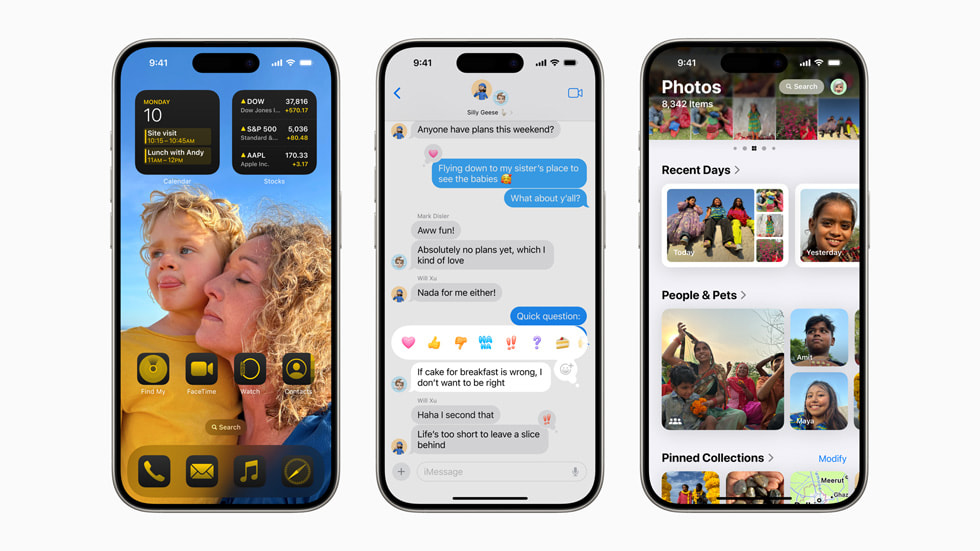
New Levels of Customization and Capability
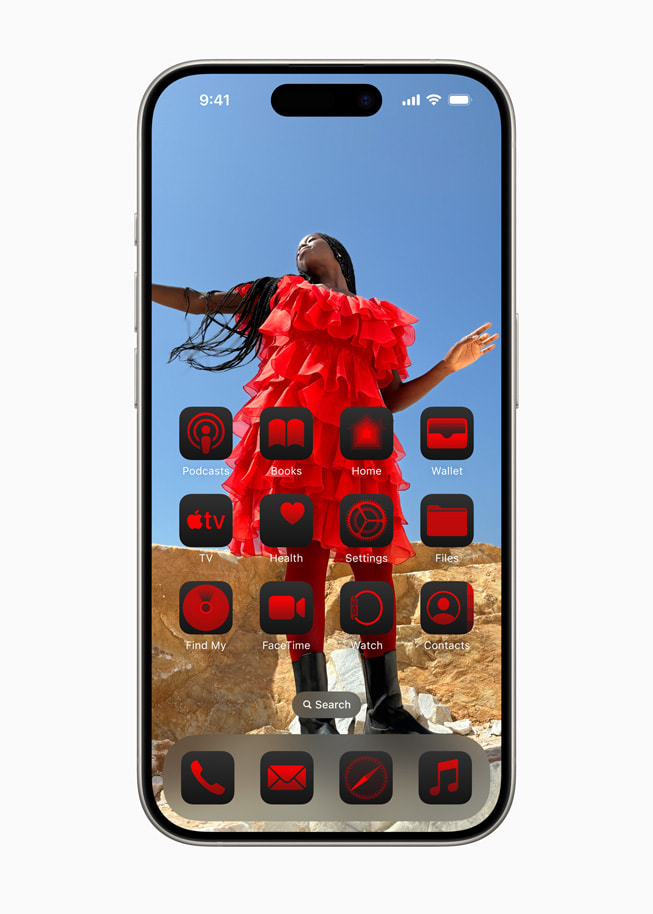
Photos Gets a Unified View, New Collections, and Customization
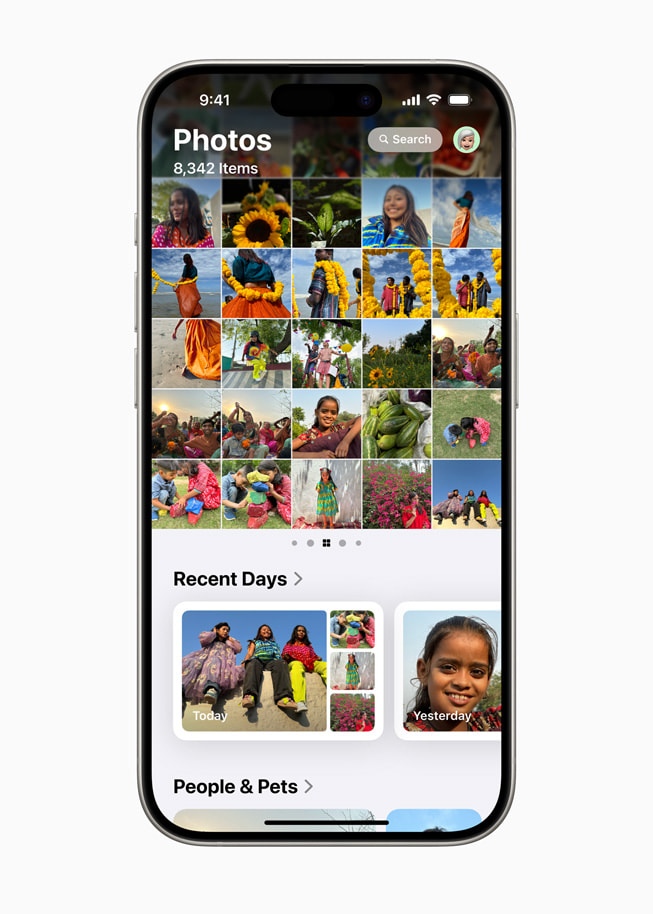
Powerful Ways to Stay Connected in Messages
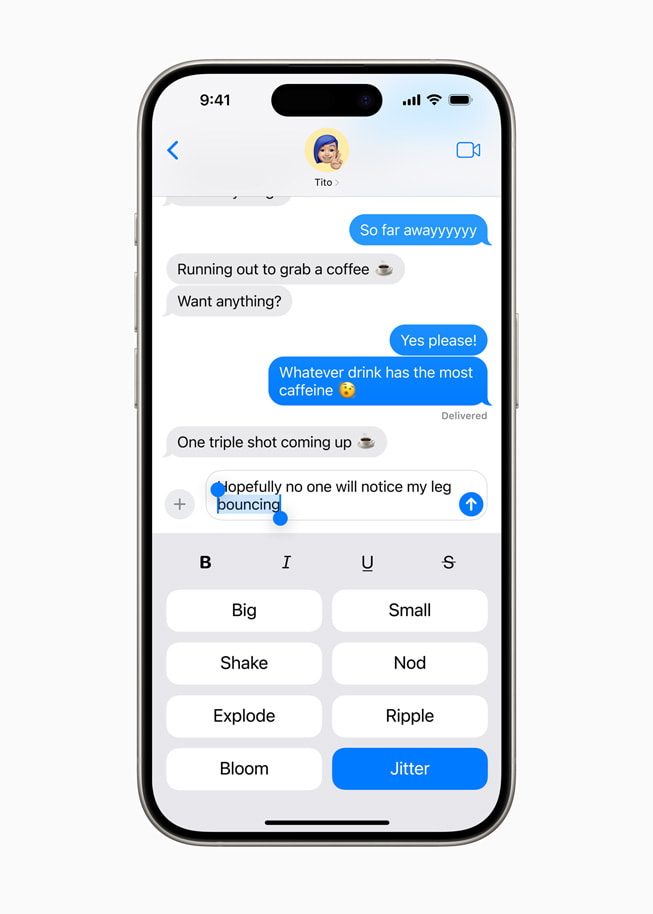
Enhancements to Mail

Big Updates to Safari
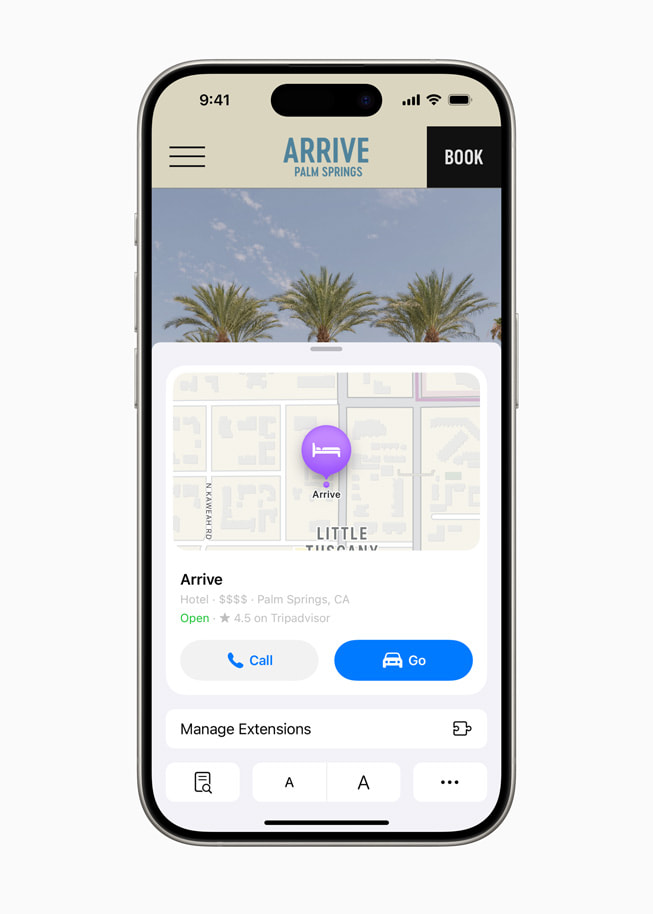
Introducing the Passwords App

New Privacy Features Designed to Empower Users
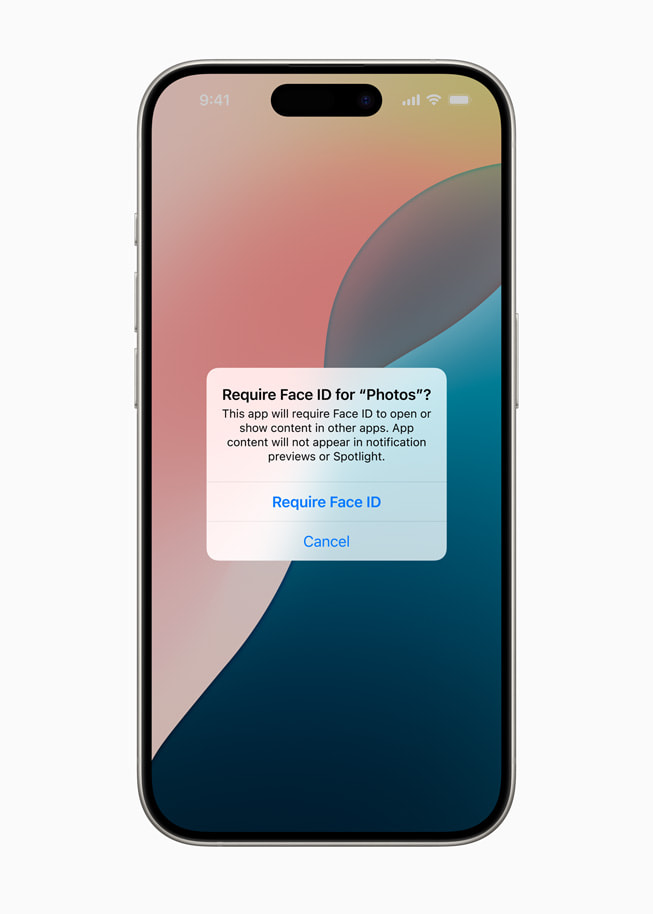
Apple Intelligence Transforms the iPhone Experience
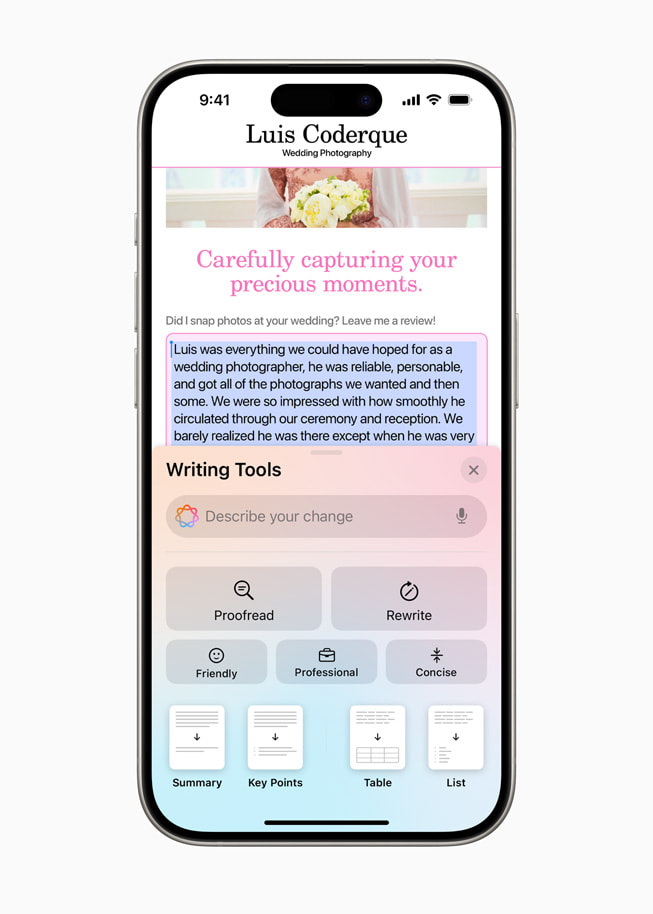
- In Apple Maps , users can browse thousands of hikes across national parks in the United States and easily create their own custom walking routes, which they can access offline. Maps users can also save their favorite national park hikes, custom walking routes, and locations to an all-new Places Library and add personal notes about each spot.
- Game Mode enhances the gaming experience with more consistent frame rates, especially during long play sessions, and makes wireless accessories like AirPods and game controllers incredibly responsive.
- Users get new ways to pay with Apple Pay , including the ability to redeem rewards and access installments from their eligible credit or debit cards. 5 With Tap to Cash, users can send and receive Apple Cash by simply holding two iPhone devices together. 6 Tickets in Apple Wallet bring a richer experience for fans, putting key event information like stadium details, recommended Apple Music playlists, and more at their fingertips. 7
- SharePlay with Apple Music allows even more users to share control of music playing from HomePod, Apple TV, or any Bluetooth-enabled speaker, making listening together more fun and engaging.
- The AirPods experience gets even more personal, private, and convenient with Siri Interactions, allowing AirPods Pro (2nd generation) users to simply nod their head yes or gently shake their head no to respond to Siri announcements. For even clearer call quality, Voice Isolation comes to AirPods Pro, ensuring the caller’s voice is heard in loud or windy environments. AirPods updates also provide the best wireless audio latency Apple has ever delivered for mobile gaming, and add Personalized Spatial Audio for even more immersive gameplay.
- In the Notes app , formulas and equations entered while typing are solved instantly with Math Notes. New collapsible sections and highlighting make it easier to emphasize what’s important.
- In Journal , an all-new insights view helps users keep track of their journaling goals, and the ability to search and sort entries makes it easy to enjoy past memories. Time spent journaling can be saved as mindful minutes in the Health app, and users can log their state of mind right in Journal. A Journal widget is now available for users to quickly start an entry from the Home Screen or Lock Screen, audio recordings are automatically transcribed, and users can export and print journal entries.
- Calendar becomes even more helpful by showing both events and tasks from Reminders . Users can create, edit, and complete reminders right from Calendar, and the updated month view provides an overview of events and tasks at a glance.
- In the Health app , Medical ID has been redesigned to make it even easier for first responders to find the most important information in an emergency. The Health app can help users better understand their data during pregnancy by making adjustments and recommendations to reflect changes in their physical and mental health.
- Emergency SOS Live Video allows users to share context through streaming video and recorded media. In the middle of an emergency call, participating emergency dispatchers can send a request for a user to share live video or media from the user’s camera roll over a secure connection, making it easier and faster to get help.
- The Home app introduces guest access, providing users with easy ways to grant guests control of select smart home accessories, set schedules for when guests can access the home, and more. For an effortless home entry experience, hands-free unlock with home keys leverages Ultra Wideband technology to allow users to instantly open supported entry locks as soon as they are six feet away from their door. With convenient updates to the Energy category, the Home app makes it easier for eligible users to access, understand, and make more informed decisions about their home electricity use.
- Accessibility updates include Eye Tracking, a built-in option for navigating iPhone with just eyes; Music Haptics, a new way for users who are deaf or hard of hearing to experience music using the Taptic Engine in iPhone; and Vocal Shortcuts that enable users to perform tasks by making a custom sound.
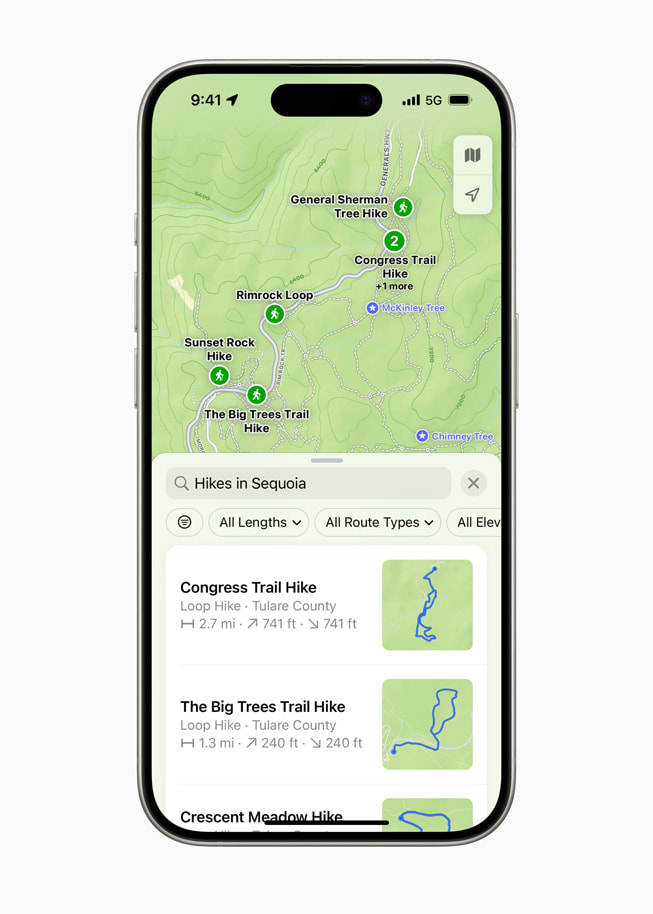
Text of this article
June 10, 2024
PRESS RELEASE
The release introduces all-new customization options, the biggest-ever redesign of Photos, powerful updates for staying connected, and Apple Intelligence, the personal intelligence system
CUPERTINO, CALIFORNIA Apple today previewed iOS 18 , a major release that features more customization options, the biggest redesign ever of the Photos app, new ways for users to manage their inbox in Mail, Messages over satellite, and so much more. Users will be able to arrange apps and widgets in any open space on the Home Screen, customize the buttons at the bottom of the Lock Screen, and quickly access more controls in Control Center. Photo libraries are automatically organized in a new single view in Photos, and helpful new collections keep favorites easily accessible. Mail simplifies the inbox by sorting email into categories using on-device intelligence, and all-new text effects come to iMessage. Powered by the same groundbreaking technology as existing iPhone satellite capabilities, users can now communicate over satellite in the Messages app when a cellular or Wi-Fi connection isn’t available. 1
iOS 18 also introduces Apple Intelligence , the personal intelligence system for iPhone, iPad, and Mac that combines the power of generative models with personal context to deliver intelligence that’s incredibly useful and relevant. 2 Built with privacy from the ground up, Apple Intelligence is deeply integrated into iOS 18, iPadOS 18, and macOS Sequoia. It harnesses the power of Apple silicon to understand and create language and images, take action across apps, and draw from personal context, to simplify and accelerate everyday tasks.
“We are thrilled to introduce iOS 18. It is a huge release with incredible features, including new levels of customization and capability, a redesigned Photos app, and powerful ways to stay connected with Messages. There are so many benefits for everyone,” said Craig Federighi, Apple’s senior vice president of Software Engineering. “This release also marks the beginning of a tremendously exciting new era of personal intelligence with Apple Intelligence delivering intuitive, powerful, and instantly useful experiences that will transform the iPhone experience, all with privacy at the core. We can’t wait for users to experience it.”
iPhone users have new ways to customize the Home Screen, Lock Screen, and Control Center. Users can now arrange apps and widgets in any open space on the Home Screen, including placing them right above the dock for easy access or perfectly framing a wallpaper. App icons and widgets can take on a new look with a dark or tinted effect, and users can make them appear larger to create the experience that is perfect for them.
Control Center has been redesigned to provide easier access to many of the things users do every day, and it gets new levels of customization and flexibility. The redesign delivers quick access to new groups of a user’s most-utilized controls, such as media playback, Home controls, and connectivity, as well as the ability to easily swipe between each. Users can now add controls from supported third-party apps into Control Center to quickly unlock a vehicle or jump right into capturing content for social media — all from one place. The new controls gallery displays the full set of available options, and users can customize how the controls are laid out, including adjusting them to the ideal size and creating entirely new groups.
For the first time, users can now switch the controls at the bottom of the Lock Screen, including choosing from options available in the controls gallery or removing them entirely. With the Action button available on iPhone 15 Pro and iPhone 15 Pro Max, users can quickly invoke controls available in the gallery.
Photos receives its biggest-ever redesign to help users easily find and relive special moments. A simplified, single view displays a familiar grid, and new collections help users browse by themes without having to organize content into albums. Plus, collections can be pinned to keep favorites easily accessible. A new carousel view presents highlights that update each day and feature favorite people, pets, places, and more. Autoplaying content throughout the app brings libraries to life, so past moments can be enjoyed while browsing. Because each user’s photo library is unique, the app is customizable, so users can organize collections, pin collections to access frequently, and include what’s most important to them in the carousel view.
iMessage receives all-new text effects that bring conversations to life by amplifying any letter, word, phrase, or emoji with dynamic, animated appearances. Users can better express tone by adding formatting like bold, underline, italics, and strikethrough. Tapbacks expand to include any emoji or sticker, and now users can compose a message and schedule to send it at a later time.
When messaging contacts who do not have an Apple device, the Messages app now supports RCS for richer media and more reliable group messaging compared to SMS and MMS.
iOS 18 introduces Messages via satellite for the times when cellular and Wi-Fi connections aren’t available. Powered by the same groundbreaking technology as existing iPhone satellite capabilities, Messages via satellite automatically prompts users to connect to their nearest satellite right from the Messages app to send and receive texts, emoji, and Tapbacks over iMessage and SMS. 3 With Dynamic Island, users always know when they are connected to a satellite. Because iMessage was built to protect user privacy, iMessages sent via satellite are end-to-end encrypted.
Later this year, Mail will introduce new ways for users to manage their inbox and stay up to date. On-device categorization organizes and sorts incoming email into Primary for personal and time-sensitive emails, Transactions for confirmations and receipts, Updates for news and social notifications, and Promotions for marketing emails and coupons. Mail also features a new digest view that pulls together all of the relevant emails from a business, allowing users to quickly scan for what’s important in the moment.
Safari, the world’s fastest browser, 4 now offers an even easier way to discover information on the web with Highlights and a redesigned Reader experience. Using machine learning, Safari can surface key information about a webpage. For example, users can review a summary to get the gist of an article; quickly see the location of a restaurant, hotel, or landmark; or listen to an artist’s track right from an article about the song or album. Reader has been redesigned to offer even more ways to enjoy articles without distraction, with a summary and table of contents included for longer articles.
Building on the foundation of Keychain, which was first introduced more than 25 years ago, the new Passwords app makes it easy for users to access their passwords, passkeys, Wi-Fi passwords, and verification codes. The app also includes alerts for users regarding common weaknesses, such as passwords that are easily guessed or used multiple times and those that appear in known data leaks.
iOS 18 gives users even more control with tools to manage who can see their apps, how contacts are shared, and how their iPhone connects to accessories.
Locked and hidden apps offer users peace of mind that information they want to keep private, such as app notifications and content, will not inadvertently be seen by others. Users can now lock an app; and for additional privacy, they can hide an app, moving it to a locked, hidden apps folder. When an app is locked or hidden, content like messages or emails inside the app are hidden from search, notifications, and other places across the system.
iOS 18 puts users in control by letting them choose to share only specific contacts with an app. In addition, developers now have a way to seamlessly connect third-party accessories with iPhone without letting an app see all the other devices on a user’s network, keeping a user’s devices private and making pairing seamless.
Deeply integrated into iOS 18 and built with privacy from the ground up, Apple Intelligence unlocks new ways for users to enhance their writing and communicate more effectively. With brand-new systemwide Writing Tools built into iOS 18, users can rewrite, proofread, and summarize text nearly everywhere they write, including Mail, Notes, Pages, and third-party apps.
New image capabilities make communication and self-expression even more fun. With Image Playground, users can create playful images in seconds, choosing from three styles: Animation, Illustration, or Sketch. Image Playground is easy to use, built right into apps like Messages, and also available in a dedicated app.
Memories in Photos lets users create the stories they want to see just by typing a description. Apple Intelligence will pick out the best photos and videos based on the description, craft a storyline with chapters based on themes identified from the photos, and arrange them into a movie with its own narrative arc. In addition, a new Clean Up tool can identify and remove distracting objects in the background of a photo — without accidentally altering the subject.
With the power of Apple Intelligence, Siri takes a major step forward, becoming even more natural, contextually relevant, and personal. Users can type to Siri, and switch between text and voice to communicate with Siri in whatever way feels right for the moment.
With Private Cloud Compute, Apple sets a new standard for privacy in AI, with the ability to flex and scale computational capacity between on-device processing, and larger, server-based models that run on dedicated Apple silicon servers. When requests are routed to Private Cloud Compute, data is not stored or made accessible to Apple and is only used to fulfill the user’s requests, and independent experts can verify this privacy.
Additionally, access to ChatGPT is integrated into Siri and systemwide Writing Tools across Apple’s platforms, allowing users to access its expertise — as well as its image- and document-understanding capabilities — without needing to jump between tools.
Additional features in iOS 18 include:
Availability
The developer beta of iOS 18 is available through the Apple Developer Program at developer.apple.com starting today, and a public beta will be available through the Apple Beta Software Program next month at beta.apple.com . iOS 18 will be available this fall as a free software update for iPhone Xs and later. Apple Intelligence will be available in beta on iPhone 15 Pro, iPhone 15 Pro Max, and iPad and Mac with M1 and later, with Siri and device language set to U.S. English, as part of iOS 18, iPadOS 18, and macOS Sequoia this fall. For more information, visit apple.com/ios/ios-18-preview and apple.com/apple-intelligence . Features are subject to change. Some features are not available in all regions, all languages, or on all devices. For more information about availability, visit apple.com .
- Messages via satellite will be available in iOS 18 along with Apple’s existing satellite features in the U.S. on iPhone 14 and later.
- Users with an eligible iPhone, iPad, or Mac, and Siri and device language set to English (U.S.) can sign up this fall to access the Apple Intelligence beta.
- SMS availability will depend on carrier. Carrier fees may apply. Users should check with their carrier for details.
- Testing was conducted by Apple in May 2023. See apple.com/safari for more information.
- The new Apple Pay features are available on cards from participating banks and card providers in certain markets. Subject to eligibility and approval.
- Apple Cash services are provided by Green Dot Bank, Member FDIC, and only available in the U.S. on eligible devices. Learn more about the terms and conditions . To send and receive money with an Apple Cash account, users must be 18 and a U.S. resident, or if under 18, part of an Apple Cash Family account. Tap to Cash transaction limits are subject to change, including lowering limits, at any time during the developer or public betas without notice.
- Ticket enhancements in Apple Wallet are available for events from participating ticket issuers.
Press Contacts
Nadine Haija
Tania Olkhovaya
Apple Media Helpline
Images in this article

Animals Around The Globe (US)
Best Places to See Leopards in Africa
Posted: May 27, 2024 | Last updated: May 27, 2024
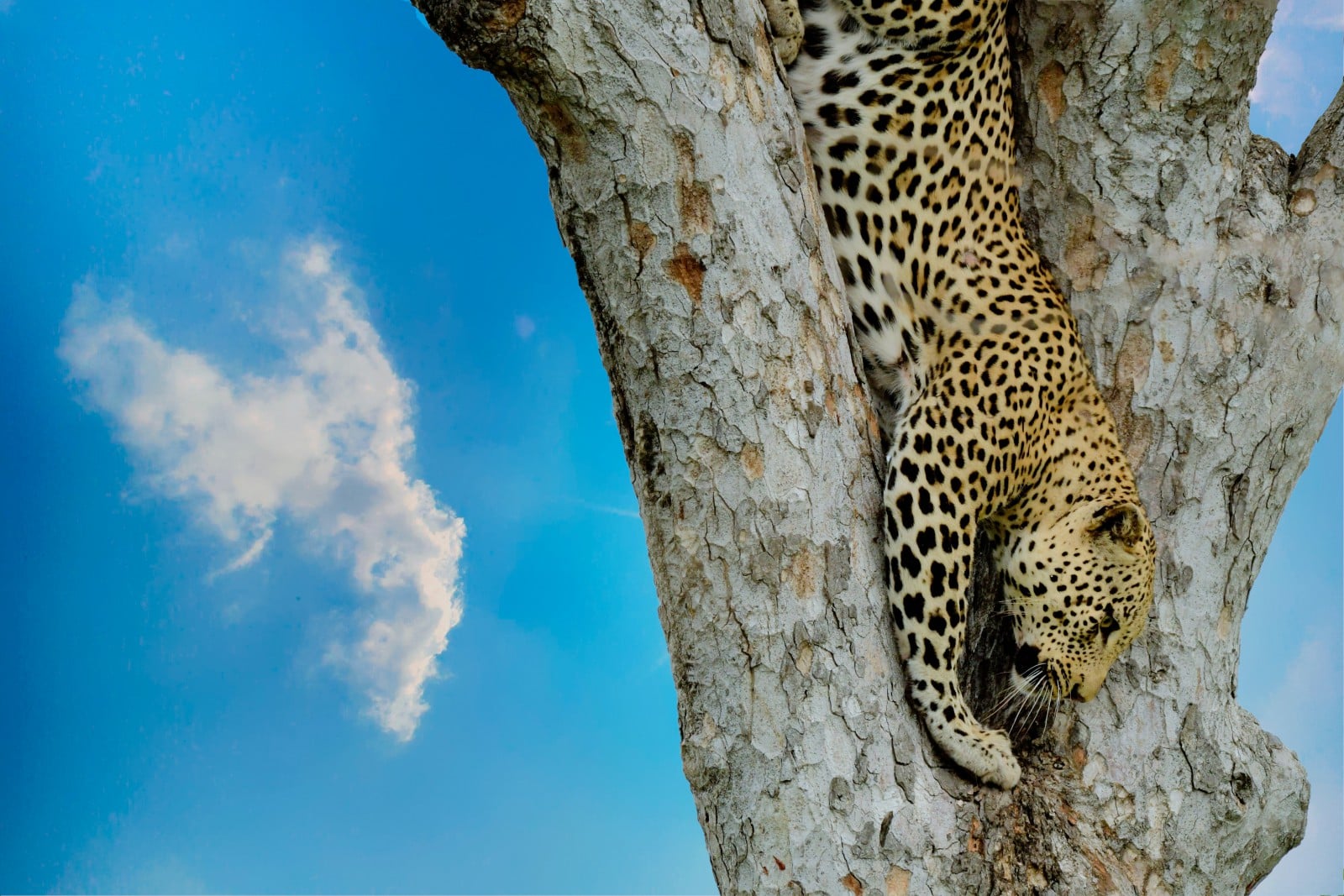
Welcome to the Best Places to see Leopards in Africa.
Africa , home to the largest living animals and the most vicious predators. It is home to the mighty Leopard; only here can you find the best places to spot Leopards.
Follow us on a tour through the continent where humans can see and spot Leopards – Africa!
We also have articles on the best places to see Lynx .
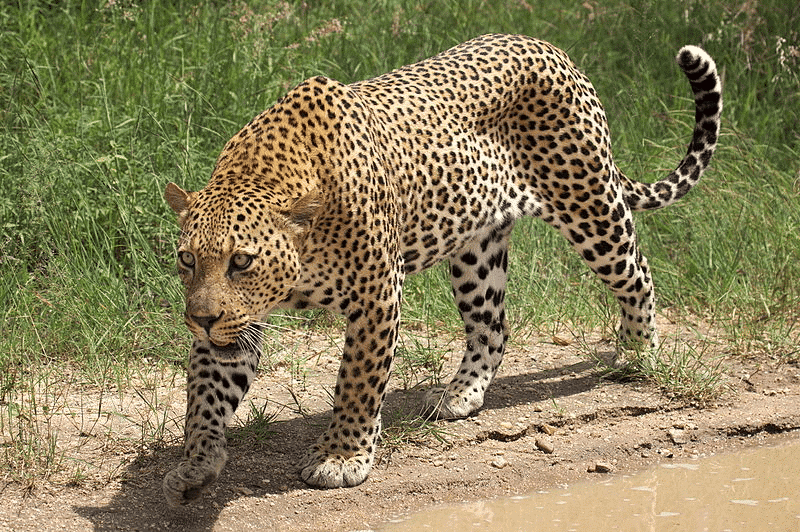
0, <a href="https://commons.wikimedia.org/w/index.php?curid=45087287">https://commons.wikimedia.org/w/index.php?curid=45087287</a>

Leopards, the crown jewels of a safari in Africa
Have a look at some of our Best Places to Spot Leopards in Africa!
Seeing a leopard requires a little luck and a little strategy. You need to be in the right place at the right time, but you also need to go where they are plentiful. There are still several excellent places in East Africa and Southern Africa that give you a good chance of a sighting.
The loss of habitats, poaching and conflicts with farmers have all contributed to a decline in global numbers.
The lion might be the king , but the beautiful, shy and elusive leopard is the crown jewel everyone wants to see on a safari in Africa. Leopards are nocturnal in many parts of their range.
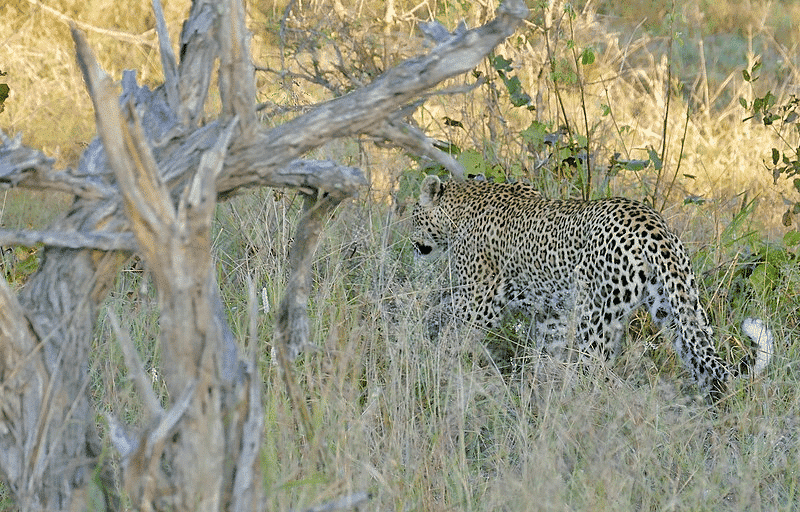
A master of camouflage
Even after several game drives, many people leave without seeing them. This is because leopards are usually not out during the day – even if they were out, they are probably eating or sleeping on a tree.
Leopards are considered some of the most elusive animals in Africa and often the last of the Big Five to be crossed off the list.

Endangerment of Leopards in Africa
Leopards are poached both in Africa and Asia because of their hides. Teeth and bones are coveted trade objects for ceremonies, status symbols, traditional medicine or souvenirs. In Africa alone, several thousand leopards are killed every year for ritual purposes. In addition, hundreds of animals are killed by international big game hunters.
The leopard is strictly protected by the CITES Convention on International Trade in Endangered Species of Wild Fauna and Flora, and commercial trade is prohibited internationally.
Some subtypes are already extinct or stand shortly before the extermination . The main threat is the massive loss of habitat, other problems are the lack of prey, conflicts with humans, legal trophy hunting and illegal hunting.
Leopards have already disappeared from large parts of their original range, especially from North, East and West Africa, as well as the Middle East, East and Southeast Asia. In southern Africa, too, stocks are declining. Although there are many of the best places to see Leopards still in Africa.
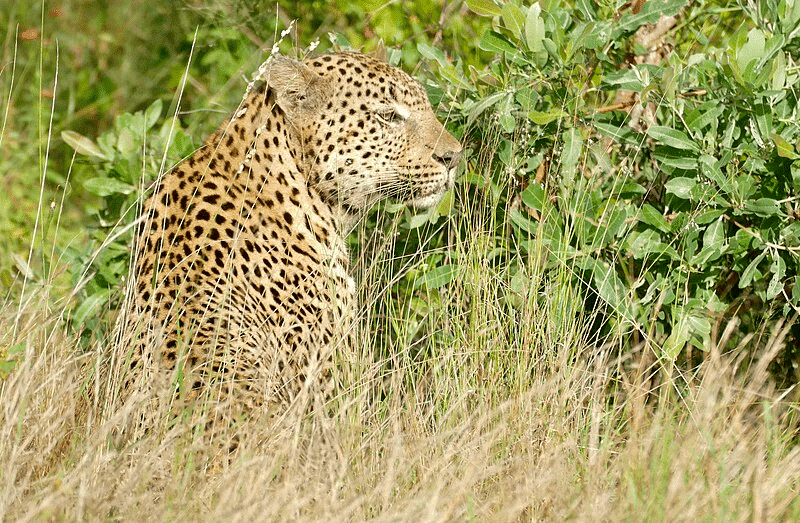
The most promising places where you can spot Leopards in Africa
However, we believe that sharing the love for these animals helps to protect them. After encountering Leopards in their natural habitat, you could only love them. Let us show you the best places to see Leopards.
As we now know, Leopards are not only hard to find because of their day and night rhythm but also because of their ability to hide. Furthermore, Leopards are decreasing in number.
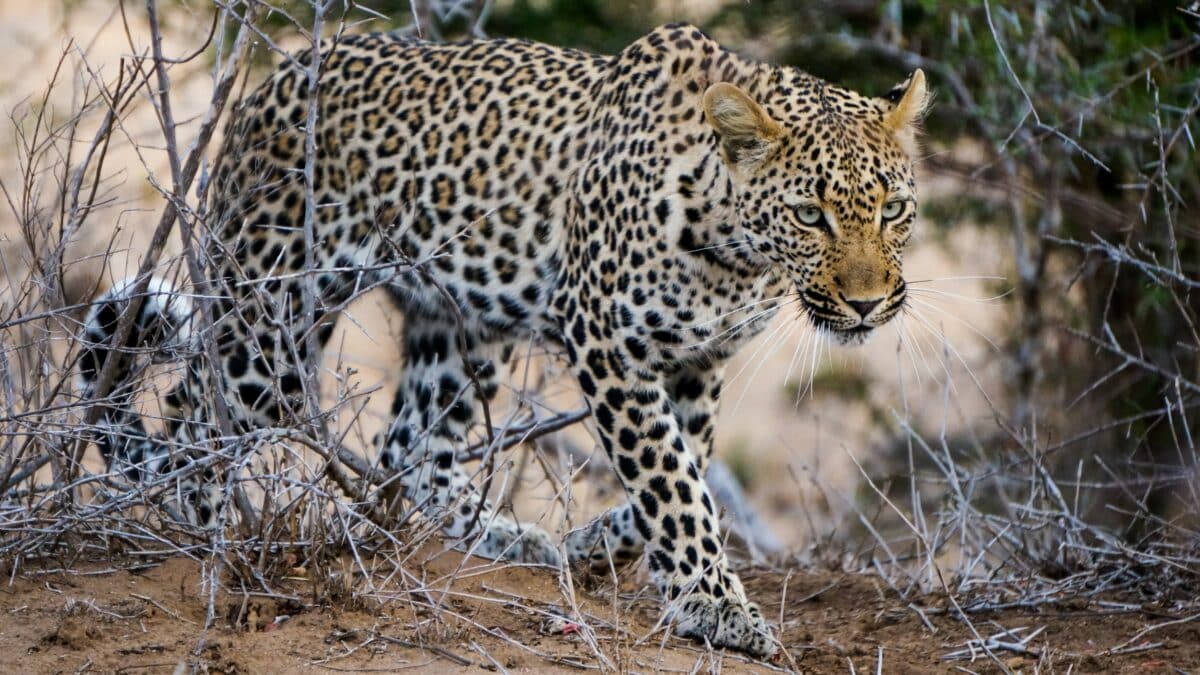
Kruger National Park, Sabi Sands Game and Madikwe, South Africa
The area is ideal for leopards: lush vegetation to hide in, highly branched trees to climb on and a wealth of prey to stalk. The South African Madikwe Reserve near the Botswana border is another good way to see leopards on a South African safari. It is easily accessible from Johannesburg.
Londolozi, in the Sabi Sand Private Reserve, is one of several areas with a high leopard population – with more than 50 leopards living in an area of 100 square kilometers.
Sabi Sand is number one on the list of the Best Places to Spot Leopards in Africa. If you need to see a leopard, go to the place where their populations are the densest in Africa – and that means Sabi Sands, a collection of exclusively used private reserves on the western border of Kruger National Park .
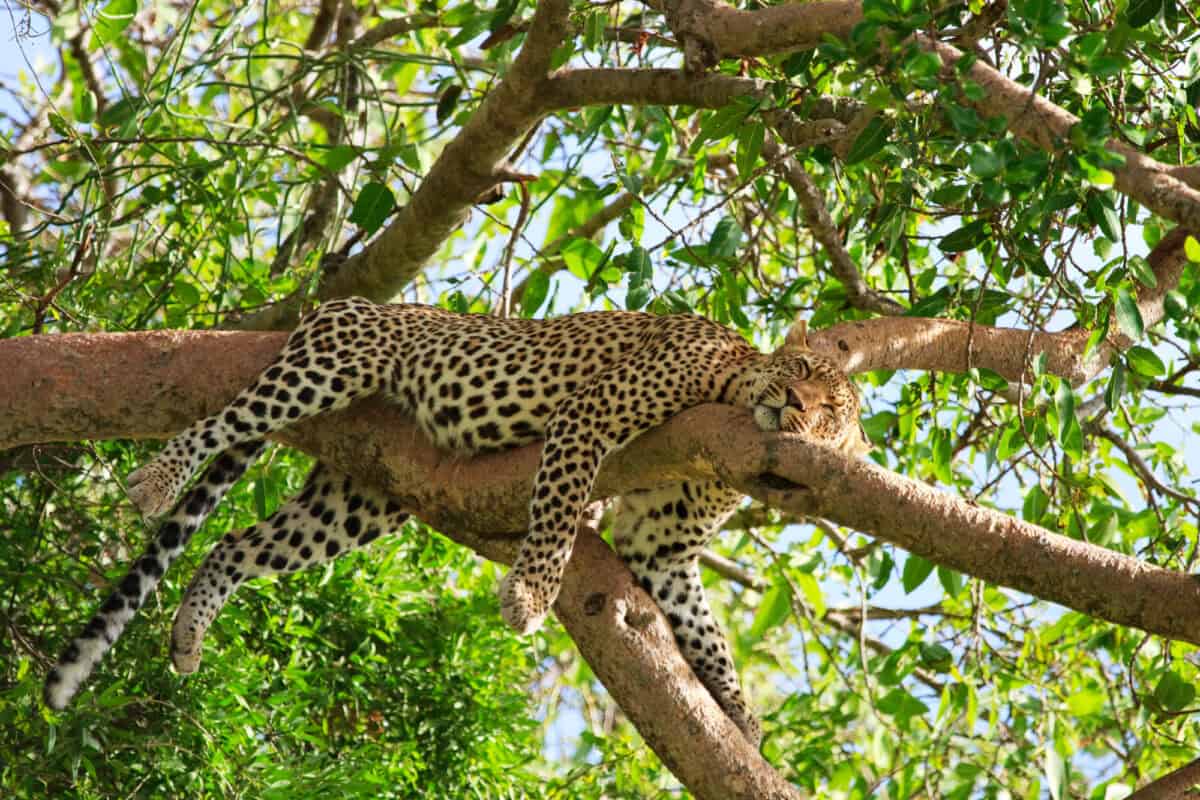
South Luangwa National Park, Zambia (Leopard Favorites)
Its incredible abundance of prey is the perfect snack for the majestic leopard. In South Luangwa National Park, night drives are allowed, making it easier to spot leopards on a Zambia safari as they pursue their prey.
The South Luangwa National Park in eastern Zambia, in the Luangwa Valley. It is the southernmost of Zambia’s three large national parks. The area is also known as the Valley of the Leopard – a suitable name as it has one of the highest leopard populations in Africa.
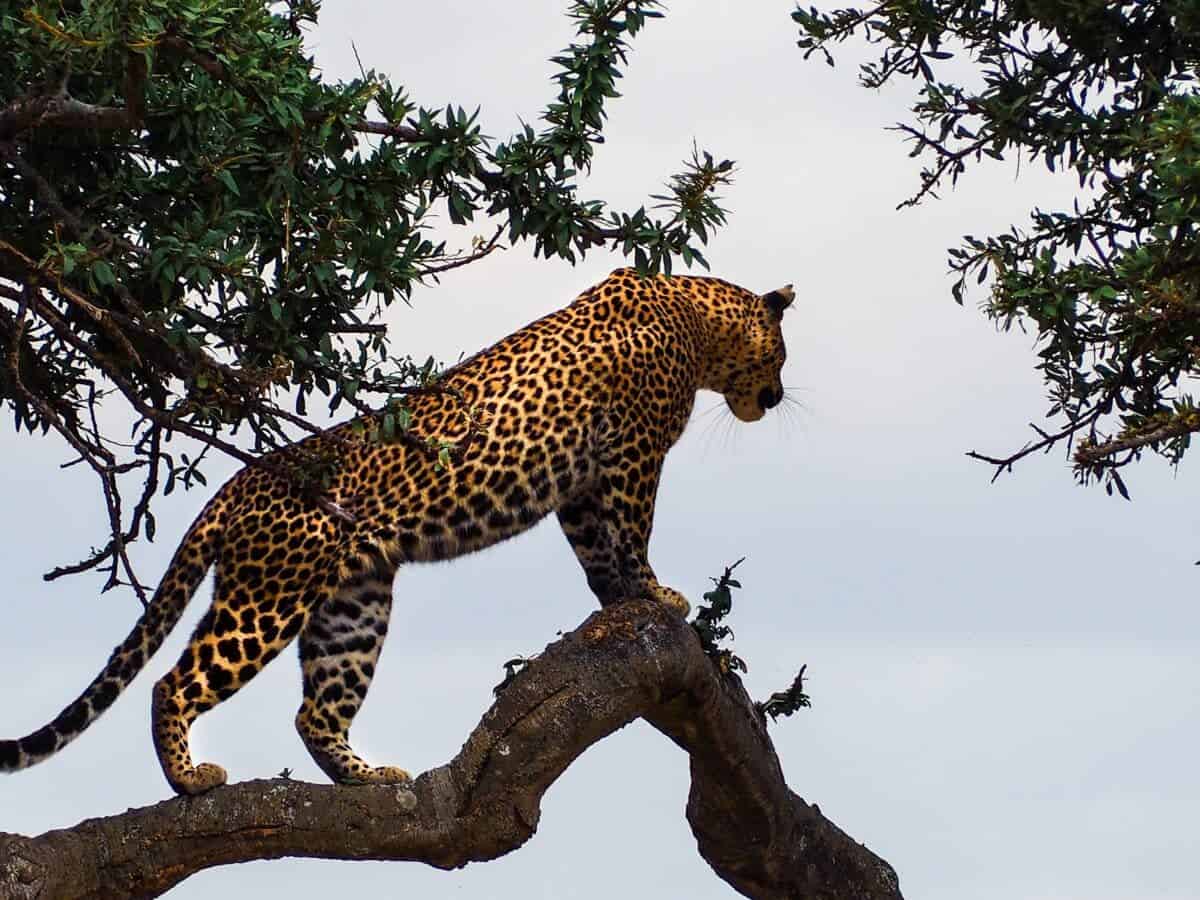
Masai Mara and Samburu, Kenya
To catch a glimpse of elusive spotted felines post-sunset, we suggest immersing yourself in the nocturnal realms of a secluded wildlife sanctuary within Kenya’s Masai Mara. Venture off the well-trodden paths to Samburu, a haven known for its exceptional encounters with majestic leopards. Lake Nakuru National Park stands renowned for its kaleidoscopic gatherings of flamingos. Within its bounds, a variety of creatures dwell, including the enigmatic leopards. The park harbors a limited lion population, granting leopards unhindered access to their prey. Remarkably, this sanctuary is a rare haven where leopards engage in daytime escapades. The fever trees bordering Lake Nakuru serve as favored rendezvous spots for these elusive cats.
The Masai Mara is known for the numerous big cats attracted by the sheer number of wildebeests and zebras arriving at the northernmost point of their Great Migration journey. The Masai Mara is undoubtedly one of the best places to see all of Africa’s wildlif. Including leopards, of which there is a large population. Most leopard sightings usually take place along the Mara and Talek rivers. Night cruises are not allowed in the Masai Mara nature reserve. Really one of the best places to spot leopards in Africa!
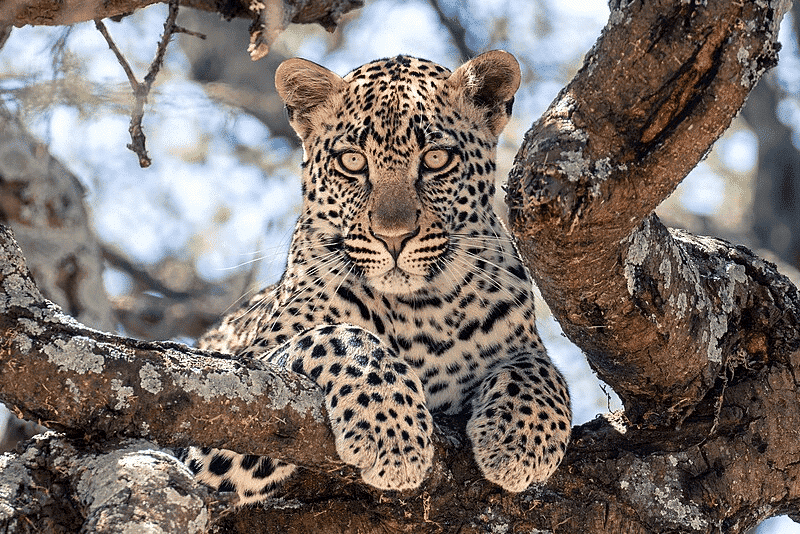
Okonjima, Namibia
The vast terrain of the Kalahari Desert makes it somewhat easier to spot leopards than in the dense savannah or forests of other parks. The desert also has limited opportunities for the leopards to get water, so they gather through water holes.
For almost guaranteed leopard watching on a Namibian safari, visit the Okonjima Nature Reserve in northern Namibia. The reserve lies at the foot of the Omboroko Mountains and hosts the AfriCat Foundation, which rehabilitates injured predators . The Kalahari Desert is another address where you can observe the leopards. Always good to check the weather before going.

Serengeti National Park, Tanzania
Famous leopards like Bella (on the Talek River) can be seen in the northern part of the reserve, towards Musiara/Windmill. Other good areas for leopard sightings on Tanzania Safari are the Keekorok, Sand River, Ol-Kinyei and nature reserves.
Many visit Tanzania to experience the Great Migration. But where there are wildebeests and zebras, there are also predators nearby. The Seronera Valley is one of the best places to discover the beauties, but don’t forget to look up!
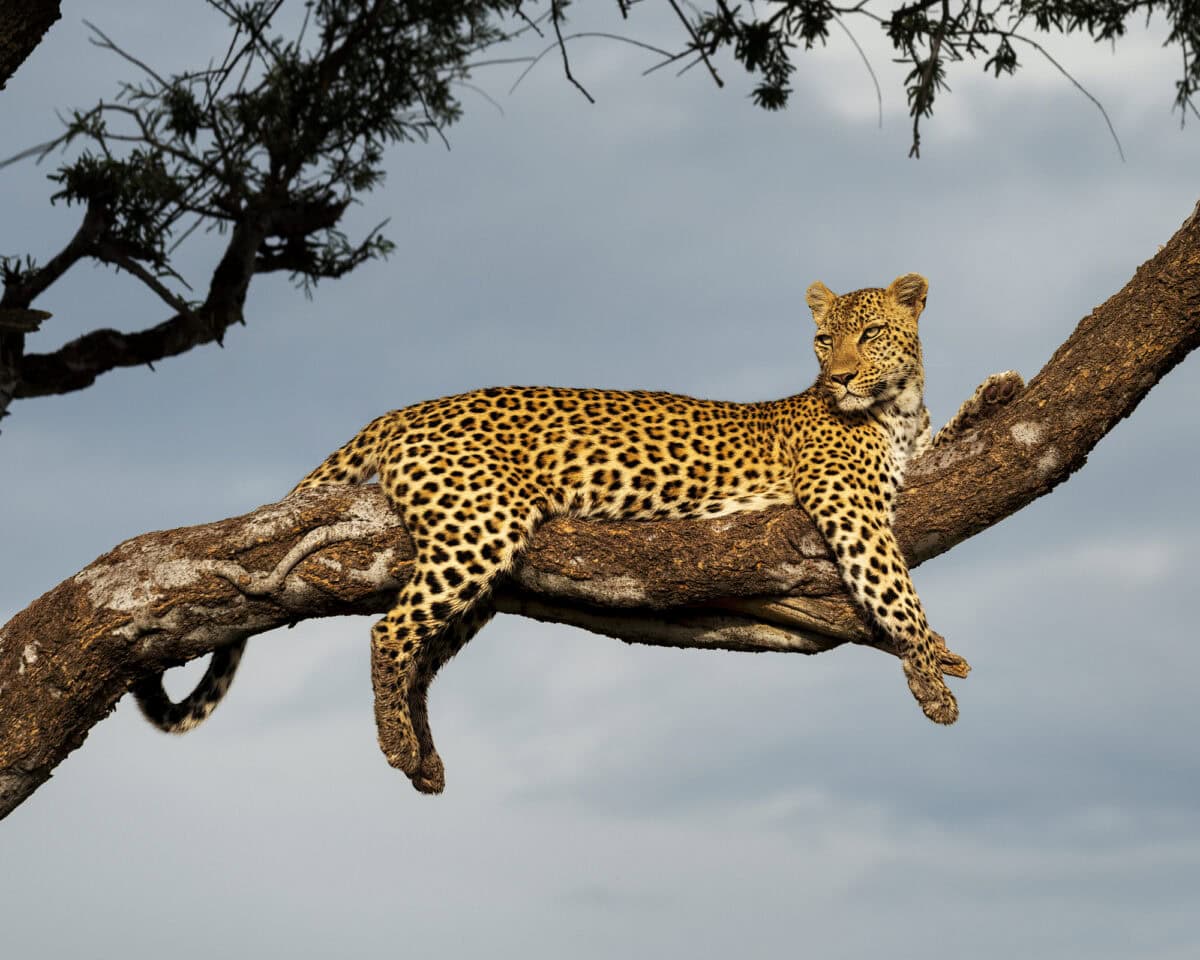
Savuti, Linyati, Moremi and Chobe National Parks, Botswana (Leopard Country)
To sum it up, the preferred locales for encountering leopards are the watery expanses and wooded realms surrounding the floodplains. Moremi stands guard over a significant portion of the Okavango Delta, a revered wildlife sanctuary in Botswana.
In the vast expanse of Botswana, there exist numerous remarkable spots to encounter leopards during a safari. Among them, the most exceptional are situated on the periphery of the Okavango Delta. These encompass the Savuti and Linyati Reserves, strategically positioned between the Okavango and Chobe National Parks. Yet, for those well-versed in the ways of safari, the ultimate destination is the Moremi Game Reserve.
More for You
Doctor reveals difference between what adults and children see when they die
12 Prediabetes Foods to Avoid—and Plenty More to Enjoy
Several reasons to turn off Wi-Fi at night
'More Neanderthal than human': How your health may depend on DNA from our long-lost ancestors
Early indicators of dementia: 5 behaviour changes to look for after age 50
I worked in financial literacy for years, and there are 3 things I learned about money that many adults don't know
The 15 rarest McDonald’s menu items in the world
Vitamin D and calcium supplements don’t work, according to new study
I've Been Visiting Tulum for Nearly 10 Years — Here Are the Best Things to Do in the Mexican Town
Hungary’s Marco Rossi makes plea to officials before Scotland clash
32 Performers Whose Careers Took a Wild Left Turn
10 Once-Important Things People Don’t Know How to Do Anymore
All the Game Of Thrones spin-off series going ahead - and all those doomed to be cancelled
Two more countries join Peace Summit declaration
3 tax deductions you're probably missing out on
This Is the Driest Desert in the World — With Stunning Salt Flats, Epic Stargazing, and Hiking Trails That Resemble Mars
20 High-Protein Breakfasts That Actually Keep You Full
How to Make Extra Income Flipping Furniture
Giving death equality
Map shows countries with the highest obesity rates

COMMENTS
25 of Africa's most amazing places to visit Hwange National Park, Zimbabwe Hwange is Zimbabwe's biggest national park, covering more than 14,600 square kilometers.
Travelers keen on seeing South Africa's Kruger National Park through the eyes of a local naturalist will appreciate the 15-day safari with Bearded Heron Safaris. Led by Neil Heron, a nature guide ...
Budgeting and costs for a safari in Botswana. Stays at isolated camps in the Okavango Delta start at roughly $650 per person, per night and can go up to an eye-watering $4000 a night. At approximately $300, Chobe National Park lodges are more affordable - so stretch out your days here to keep costs down.
While Kruger National Park in South Africa is one of the most popular destinations on the African continent to see the Big 5 — lion, leopard, rhinoceros, elephant, and African buffalo — many other African countries offer incredible safari experiences and once-in-a-lifetime wildlife sightings, assuming you're willing to think a bit outside the box and get off the beaten path.
Ranks #1 in Africa's Top 50 Safari Parks. 2,544 Serengeti Tours. #2 Sabi Sand Private Game Reserve South Africa. 4.71 /5. Area consisting of multiple private reserves, excellent Big Five wildlife viewing. Ranks #2 in Africa's Top 50 Safari Parks. 100 Sabi Sands Tours. #3 South Luangwa National Park Zambia. 4.71 /5.
Zimbabwe. Best time to visit: May to October. While often overlooked in favour of more popular destinations such as Botswana and South Africa, Zimbabwe offers some of the best safaris on the continent at a much lower price than its neighbours. With 5 World Heritage Sites, an astounding concentration of wildlife and some of the best trained ...
We share the best safari destinations in the world. Travel on: a safari tour. 1. Okavango Delta, Botswana. Head to northern Botswana for one of the world's largest inland river deltas, the Okavango Delta. The wildlife encounters visitors will experience here are remarkable. Amid the grassy plains, the cry of hyenas, the roar of lions, the ...
Ngorongoro Crater in Tanzania is a UNESCO World Heritage Site. It is the largest intact caldera in the world, formed from a collapsed volcano millions of years ago. With an estimated 25,000 animals within 100 square miles (260 square KM), Ngorongoro is one of the best places in Africa to view wildlife.
From the iconic plains of the Serengeti to the lush wetlands of Okavango and the desert wildlife of Etosha, here are 12 of the best safari destinations in the world to inspire your safari adventure. 1. Serengeti National Park, Tanzania. passionateguidestz and tanzaniaparks. 4,057 followers.
Botswana. 4.8 /5 - 367 Reviews. Botswana is the leader in low-impact, upmarket tourism in one of Africa's last wilderness areas. The beauty of the Okavango Delta can be discovered on an unforgettable game drive or exploring by mokoro (wooden dugout canoe), while Chobe National Park, Moremi Game Reserve and the Central Kalahari Game Reserve ...
Gibb's Farm, Tanzania. If you would prefer a safari camp that is more on the traditional side, Gibb's Farm in Tanzania is the epitome of classic safari luxury. This idyllic lodge is located on the outer rim of the Ngorongoro Crater, one of Tanzania's most sought after locations. A sanctuary for the senses, green thumbs will love spending ...
Marataba. Magnificent mountain backdrops | Marataba Safari Lodge. Marataba is a special place and a South African rising star in 2024. This game-rich, privately managed section of the Marakele National Park offers intimate game viewing experiences.
Phone +27 13 735 4000. Web Visit website. Located in the northeast of the country on the Mozambique border, Kruger National Park is the most famous of all South Africa's many game reserves. As well as the Big Five, the park is home to the vulnerable cheetah, the endangered wild dog and several elusive small cat species.
10. Okavango Delta, Botswana. Known as "Africa's Last Eden", this inland river delta is one of the best safari destinations in Africa. The best time to visit is between June and August. This is when the annual flood happens and animals are confined to the islands, making them easier to see. Typically, 200,000 large mammals have their ...
The Okavango Delta (Botswana): In terms of privacy, exclusivity, and almost downright celebrity status safaris, then Botswana's Okavango Delta is the best place to safari in Africa. You have probably seen the remarkable Okavango Delta before on Planet Earth or Nat Geo with Sir David Attenborough's voiceover to soothe you away.
Niarra Travel offers a 13-day Victoria Falls, Okavango, and Cape Town itinerary that incorporates the Zambezi River and Falls into a three-country itinerary (Zambia, Botswana, and South Africa). Jennifer Flowers. Jennifer Flowers is an award-winning journalist and the senior deputy editor of Afar. When it comes to choosing a safari in Africa ...
Choosing which of Africa's best safari destinations to include when planning the best African safari itinerary can be tricky: after all, this is a continent that offers such an incredible diversity of landscapes, wildlife and cultures. Let us introduce you to our carefully curated destinations, and help you get there. Continue Reading.
The Okavango Delta offers a truly authentic African safari and wildlife experience - perfect for first time safari goers to Africa. The Okavango Delta is one of the premier safari destinations and is one of the last true wilderness areas left in Africa. The number of visitors is very tightly controlled, you can experience the beauty of the ...
More Safaris in Africa. Of course, your safari destination options aren't limited to the 12 countries above, though here we have listed the 12 most popular places to go for the best safari in Africa. Up-and-coming safari destinations range from Chad to Mozambique to Senegal, and we're happy to help plan those trips too.
The Royal Zambezi Lodge Bush Spa is enveloped within nature's embrace. Try post-safari canoeing or fishing. A quick dip in the pool before a sunset massage at Royal Bush Spa completes a perfect ...
Longleat was the first Safari Park to open outside of Africa in 1966. Nowadays, it's still a popular tourist attraction with visitors travelling from far and wide to see its 120 species.
Fast facts about Tanzania: Regular sightings: All Big 5, predators including cheetahs, hyenas and jackals. Types of safari: Walking safaris, game drives, sundowners, night safaris, photographic safaris. Budget: ££-£££££ Best time to go: Visit between July and October, when Tanzania is at its driest.This also coincides with the Great Migration river crossings but, just like in Kenya, the ...
Kruger National Park offers a more accessible safari experience without skimping on wildlife diversity. It's one of the best places to self-drive, giving you the freedom to explore at your own pace.
9. Zimbabwe. Mana Pools National Park, Zimbabwe. Once known as the breadbasket of Africa, Zimbabwe hosts safari parks and scenery that range from lakes and waterfalls to wildlife havens that rival more popular African destinations, easily demonstrated in the top places to visit in Zimbabwe.
Top Safari Destinations. E mbarking on a safari adventure is an exhilarating experience that allows you to connect with nature and witness some of the world's most magnificent creatures up close ...
While in South Africa, the best mode of transportation will be private guides and domestic flights to get between Cape Town, Kruger, Sabi Sands and Johannesburg. Places to visit in Cape Town. Spend a full day exploring Cape Town and all that it has to offer. Visit the Victoria & Albert Waterfront and enjoy fantastic shops, restaurants and galleries
It is without any doubt, one of the best places to go for a Safari and witness wildlife. When it comes to parks and national reserves, Kenya houses 16 national reserves and 25 national parks.
CUPERTINO, CALIFORNIA Apple today previewed iOS 18, a major release that features more customization options, the biggest redesign ever of the Photos app, new ways for users to manage their inbox in Mail, Messages over satellite, and so much more.Users will be able to arrange apps and widgets in any open space on the Home Screen, customize the buttons at the bottom of the Lock Screen, and ...
Some consider it one of the best places to go on safari in Africa. Zimbabwe. Apart from the renowned Hwange National Park, I have also visited Matobo National Park, which has a wide diversity of ...
The post Best Places to See Leopards in Africa appeared first on Animals Around The Globe. ... For almost guaranteed leopard watching on a Namibian safari, visit the Okonjima Nature Reserve in ...